IEU'S FEATURED TOPICS IN UKRAINIAN CULTURE AND INTELLECTUAL HISTORY
I. The History and Cultural Legacy of the Kyivan Caves Monastery
II. The Historical Evolution of Ukrainian Law and Legal Tradition
III. Ukrainian Wandering Bards: Kobzars, Bandurysts, and Lirnyks
IV. Ostroh Academy: Eastern Europe's First Institution of Higher Learning
V. Brotherhoods: The Promoters of Education and Culture in Early Modern Ukraine
VI. The Origins and Tradition of Printing in Ukraine
VII. The Cultural Legacy of Kyivan Mohyla Academy
VIII. The Ukrainian Music of Late Baroque and Classicist Periods
IX. The Tradition of Ukrainian Book Publishing
X. The History of Higher Education in Ukraine
XI. Higher Colleges and Lyceums in 18th- and 19th-Century Ukraine
XII. The Founders of Modern Ukrainian Historiography in the 19th Century
XIII. The Hromada Movement and the Growth of Ukrainian National Consciousness
XIV. Mykhailo Drahomanov and the First Ukrainian Political Program
XV. The Clandestine Brotherhood of Taras and Its Proto-Nationalist Program
XVI. The Ukrainian Populist-Ethnographic Theater in Russian-ruled Ukraine
XVII. Mykola Lysenko and the National School of Ukrainian Music
XVIII. Scholarly Societies in Ukraine in the 19th and Early 20th Centuries
XIX. Ukrainian Literary and Scholarly Journals before 1914
XX. Ukrainian Composers in Western Ukraine before the Second World War
XXI. Les Kurbas, Berezil, and the Birth of Modern Ukrainian Theater
XXII. The Ukrainian Opera and Famous Ukrainian Opera Singers
XXIII. Modernist Music in Soviet Ukraine: The 1920s Generation
XXIV. Ukrainian Poetic Cinema
XXV. The Ukrainian Music of the Socialist Realist Period (1930s-1950s)
XXVI. Ukrainian Composers of the 1960s Generation
XXVII. Museums in Ukraine
XXVIII. The Ukrainian Academy of Sciences
 I. THE HISTORY AND CULTURAL LEGACY OF THE KYIVAN CAVE MONASTERY
I. THE HISTORY AND CULTURAL LEGACY OF THE KYIVAN CAVE MONASTERY
The Kyivan Cave Monastery was founded by Saint Anthony of the Caves in the mid-11th century near the village of Berestove on the outskirts of Kyiv. During the princely era of Kyivan Rus' the princes and boyars of Kyiv generously supported this monastery, donating money, valuables, and land, and building fortifications and churches. Many of the monks were from the educated, upper strata, and the monastery soon became the largest religious and cultural center in Kyivan Rus'. Rus' chronicles and other literary works were written there. Foreign books were translated there, transcribed, and illuminated. Architecture and religious art (icons, mosaics, frescoes)--the works of Master Olimpii, Deacon Hryhorii, and others--developed there. Many folk tales and legends eventually arose about its saintly figures and the miraculous construction of its main church, the Dormition Cathedral. The monastery was sacked several times, most devastatingly in 1240 during the Mongol invasion. But each time it was rebuilt, new churches were erected, and the underground tunnels of caves and catacombs expanded. In the late 16th century the monastery received stauropegion status from the Patriarch of Constantinople, freeing it from the control of the local metropolitan. By that time consisting of six cloisters, the monastic complex was designated a lavra--the term denoting an important monastery that came under the direct jurisdiction of the highest church body in a country. By the 18th century the Kyivan Cave Monastery had acquired a great deal of wealth. It owned 3 cities, 7 towns, 200 villages and hamlets, 70,000 serfs, 11 brickyards, 6 foundries, over 150 distilleries, over 150 flour mills, and almost 200 taverns. However, in 1786 the Russian government secularized its property and made it a dependent of the state. At the same time the custom of electing the council elders, its governing body, was abolished... Learn more about the history, architecture, and cultural legacy of the Kyivan Caves Monastery by visiting the following entries:
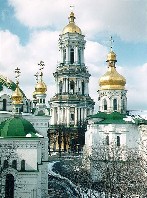
|
KYIVAN CAVE MONASTERY. An important Orthodox monastery in Kyiv. In the mid-11th century the first monks, inspired by Saint Anthony of the Caves, excavated several caves and built a church above them. The monastery's first hegumen was Varlaam (until 1057). He was succeeded by Saint Theodosius of the Caves (ca 1062-74), who introduced the strict Studite rule. The main cultural and religious center of Kyivan Rus', the Kyivan Cave Monastery was one of the very few monasteries that managed to survive the Tatar devastation of the mid 13th century. After a period of non-activity the monastery was rebuilt in 1470 by Prince Semen Olelkovych. In 1615 Archimandrite Yelysei Pletenetsky established the first printing press in Kyiv at the Kyivan Cave Monastery Press, which became one of the most important center of publishing in Ukraine. Metropolitan Petro Mohyla restored and embellished the monastery. However, following the period of the Ruin and the subjugation of the Ukrainian Orthodox church by Moscow, in 1688 the monastery became directly subordinate to the Moscow patriarch. Its cultural influence was later severely undercut by the Russian government's 1720 prohibition on the printing of new books and the imposition of censorship on all publications... |
| Kyivan Cave Monastery |
KYIVAN CAVE PATERICON. A collection of tales about the monks of the Kyivan Cave Monastery. The original version arose after 1215 but not later than 1230 out of the correspondence of two monks of the monastery--monk Simon (by then the bishop of Suzdal and Vladimir) and monk Polikarp, who used the epistolary form as a literary device. The letters contain 20 tales about righteous or sinful monks of the monastery based on oral legends and several written sources. The later redactions, it seems, did not change the original text significantly, but supplemented it with several stories from the monastery's history. In 1635 the patericon was printed in Polish by Metropolitan Sylvestr Kosiv, and in 1661 in Ukrainian Church Slavonic. Because of its relatively simple style, particularly in monk Simon, and its rich vocabulary, as well as its masterly characterization of individuals by means of dialogue, prayer, and 'internal monologue,' the patericon is one of the outstanding works of Old Ukrainian literature. It marked an important advance in the literary art of the period... |
|
| Kyivan Cave Patericon |
KYIVAN CAVE MONASTERY ICON PAINTING AND ART STUDIO. Main centre of Ukrainian icon painting for many centuries. Its founding at the Kyivan Cave Monastery at the end of the 11th century was connected with the painting (1083-9) of the Dormition Cathedral by Greek masters and the Kyivan artists Master Olimpii and Deacon Hryhorii. The studio developed a distinctive style that is evident in its frescoes, icons, and book illuminations, including the Kyiv Psalter of 1397. A major art school emerged at the monastery in the 17th century. It moved away from the Byzantine tradition of icon painting and adopted Western styles. Under the influence of master Oleksander Tarasevych, book engraving was given a prominent place in the school's curriculum. The studio's finest masterpieces of the 18th century are the mural paintings of the Dormition Cathedral and the Trinity Church above the Main Gate of the monastery. At one time, over 40 masters taught several hundred students (mainly from Ukraine, but also from the Balkan countries and Moldavia) at the studio. However, towards the end of the 18th century the studio began to gradually lose its importance in the development of Ukrainian art... |
|
| Kyivan Cave Monastery Icon Painting and Art Studio |
 title page_s.jpg)
|
KYIVAN CAVE MONASTERY PRESS. The first imprimery in Kyiv and the most important center of printing and engraving in Ukraine in the 17th and 18th centuries. It was founded ca 1606-15 at the Kyivan Cave Monastery by the archimandrite Yelysei Pletenetsky, who purchased the equipment of the former Striatyn Press of Hedeon Balaban in Striatyn, Galicia. Later it was headed by, among others, Zakhariia Kopystensky, Petro Mohyla, Innokentii Gizel (for over 30 years), Varlaam Yasynsky, and Yoasaf Krokovsky. The oldest extant book printed by the imprimery is the Horologion of 1616. The press issued several hundred titles on various subjects, both original works and translations, in Ukrainian, Church Slavonic, Polish, Russian, Latin, and Greek. Beautifully engraved and ornamented, these books were distributed throughout the Slavic countries, as well as Austria, Greece, and Moldavia. In the 16th and 17th centuries the imprimery played an important role in raising the level of education and culture in Ukraine and in aiding the Orthodox Ukrainians to defend themselves against the inroads of Polonization and Catholicism. But the tsarist ukase of 1720 limited it to printing only religious works, which it continued to do until 1918... |
| Kyivan Cave Monastery Press |
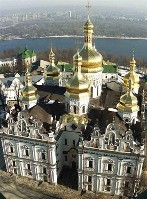
|
DORMITION CATHEDRAL OF THE KYIVAN CAVE MONASTERY. The main church of the Kyivan Cave Monastery. Built in 1073-8 at the initiative of Saint Theodosius of the Caves during the hegumenship of Stefan of Kyiv and funded by Prince Sviatoslav II Yaroslavych. The cathedral consisted basically of one story built on a cruciform plan with a cupola supported by six columns. Inside, the central part was decorated with mosaics (including an Oranta), while the rest of the walls were painted with frescoes. According to the Kyivan Cave Patericon, Master Olimpii was to have been one of the mosaic masters. After many reconstructions these artistic works have been lost. At the end of the 11th century many additions to the cathedral were built, including Saint John's Baptistry in the form of a small church on the north side. In the 17th century more cupolas and decorative elements in the Cossack baroque style were added. The church was destroyed by the Soviets in 1941. As the Soviet Army retreated from Kyiv, mines were placed under the cathedral, and later it was blown up. The reconstruction of the cathedral began in 1998 and was completed in time for its reconsecration during the Ukrainian Independence Day ceremonies in August 2000... |
| Dormition Cathedral of the Kyivan Caves Monastery |
_s.jpg)
|
NATIONAL KYIVAN CAVE HISTORICAL-CULTURAL PRESERVE. An important historical preserve in Kyiv, consisting of the entire complex of the Kyivan Cave Monastery. The state-run preserve was organized in 1926, when the monastery was closed down by the Soviet authorities. In 1996 the complex was granted a national preserve status and assumed its present name. On its 28-ha grounds there are over 80 cultural and public structures, 37 of them architectural and historical monuments from the 11th to 18th centuries. The most important are the Great Bell Tower (1731-44), the Transfiguration Church in Berestove (early 12th century), the Trinity Church above the Main Gate (1108, restoration paid for by Hetman Ivan Mazepa in the early 18th century), and the Dormition Cathedral of the Kyivan Cave Monastery (1078, destroyed by a Soviet mine in 1941, rebuilt in 1998-2000). The museums of the preserve contain many rare and valuable items from the 16th to 18th century: manuscripts, incunabula, and old books (many of them printed by the Kyivan Cave Monastery Press), and embroidery, precious metallic objects, engravings, printing blocks, and art works... |
| National Kyivan Cave Historical-Cultural Preserve |
The preparation, editing, and display of the IEU entries associated with the history, architecture, and cultural legacy of the Kyivan Caves Monastery were made possible by the financial support of the CANADIAN FOUNDATION FOR UKRAINIAN STUDIES.
 II. THE HISTORICAL EVOLUTION OF UKRAINIAN LAW AND LEGAL TRADITION
II. THE HISTORICAL EVOLUTION OF UKRAINIAN LAW AND LEGAL TRADITION
Before states were formed, communities on Ukrainian territory were governed by customary law. The history of Ukrainian law is divided into periods according to the distinctive states that arose in Ukraine. In the Princely era (9th-14th centuries) the main sources of law were customary law, agreements such as international treaties, compacts among princes, contracts between princes and the people, princely decrees, viche decisions, and Byzantine law. The most original legal monument of the period is Ruskaia Pravda, which includes the principal norms of substantive and procedural law. The medieval Kyivan Rus' state declined, but its law continued to function. In the 14th to 15th centuries it was known as Rus' law in Ukrainian territories under Polish rule. Gradually, it was replaced by public as well as private Polish law. At the same time (14th-17th centuries) Lithuanian-Ruthenian law developed in Ukrainian territories within the Grand Duchy of Lithuania. The laws compiled in the Lithuanian Register and the Lithuanian Statute remained in force within the Polish-Lithuanian Commonwealth and, to some extent, in the Hetman state. The law of the Cossack period was based on the Hetman's treaties and legislative acts, the Lithuanian Statute, compilations of customary law and Germanic law, and court decisions. The autonomous Hetman state had its own law systematized in the Code of Laws of 1743. With the abolition of Ukrainian autonomy at the end of the 18th century, Russian law, first public and then civil, was introduced in Russian-ruled territories. In Western Ukraine, Austrian law was introduced in 1772-5... Learn more about the historical evolution of Ukrainian law by visiting the following entries:
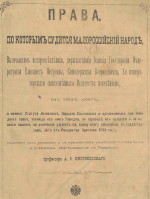
|
LAW. The set of compulsory rules governing relations among individuals as well as institutions in a given society. Being part of the national culture, the law is influenced by the beliefs of a society and is inextricably involved in its social, political, and economic development. The term for law, pravo, originally meant 'judgment' or 'trial.' The original legal tradition developed on Ukrainian lands came to an end in the 18th century, when foreign Russian law was introduced in Russian-ruled territories. In Western Ukraine, Austrian law was introduced in 1772-5. Except for state and political laws, the laws of the former regimes remained in force during the brief period of Ukraine's struggle for independence (1917-20). Ukrainian legislators and jurists did not have time to construct an independent system of law. During the Soviet period legal norms were determined not only by the constitution and the laws or decrees of the government, but also by the Communist Party program and the current Party line. Thus, law was an instrument of politics. Attempts to de-politicize law and bring it closer to European standards have been made in independent Ukraine since 1991... |
| Law |
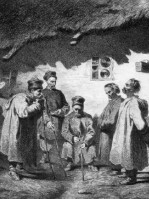
|
CUSTOMARY LAW (zvychaieve pravo; also known as the unwritten law). Norms of conduct that are practiced in society because they have been accepted for a long time and are regarded as obligatory. Customary law in Ukraine dates back to prehistoric times. In the Princely era legal relations were governed by customary law, which was eventually codified in Ruskaia Pravda. The decrees issued by the princes explicated customary law rather than creating new law. With the demise of Kyivan Rus' Ukrainian customary law continued to operate even under the Tatars, who did not interfere in the internal affairs of their conquered territories, and then under Polish hegemony. The norms of Ukrainian customary law were preserved under Lithuanian rule and were codified in the Lithuanian Statute, which to a large extent, particularly in respect to civil, criminal, and procedural norms, was based on ancient Ukrainian customary law. In the Lithuanian-Ruthenian state the community courts were a judicial institution based on customary law. They continued to operate in the Cossack period, but their importance gradually diminished...
|
| Customary law |
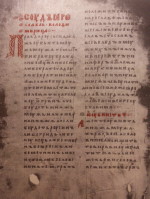
|
RUSKAIA PRAVDA (Rus' Truth [Law]). The most important collection of old Ukrainian-Rus' laws and an important source for the study of the legal and social history of Rus'-Ukraine and neighboring Slavic countries. It was compiled in the 11th and 12th centuries on the basis of customary law. The original text has never been found, but there are over 100 transcriptions in existence from the 13th to 18th centuries. There are three redactions of Ruskaia Pravda, the short, expanded, and condensed versions. The expanded redaction, consisting of 121 articles, was the most widespread. In the criminal law of the expanded redaction blood vengeance was replaced by monetary fines and state penalties. Serious crimes, such as horse stealing, robbery, and arson, were punished by banishment and seizure. With the exception of the most privileged strata in the society, all free citizens were protected by the code. Its main purpose was to provide individuals with the power to defend their right to life, health, and property and to provide courts with the basis for a fair judgment. A characteristic feature of Ruskaia Pravda is its evolution toward a more humane law system... |
| Ruskaia pravda |
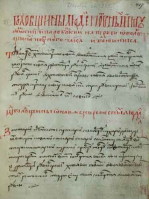
|
LITHUANIAN-RUTHENIAN LAW [Lytovs'ko-Rus'ke pravo]. The system of law of the Lithuanian-Ruthenian state or, more precisely, the Grand Duchy of Lithuania, which from the 14th to the 18th century included Lithuania, Belarus, and most of Ukraine (to the Union of Lublin in 1569). The Lithuanian-Ruthenian law was initially based on Ruskaia Pravda and later on the Lithuanian Statute as well as Lithuanian, Ukrainian, and Belarusian customary law. The systematic study of Lithuanian-Ruthenian law began in the first half of the 19th century. Polish historians considered it a local variant of Polish law, and Russian historians usually referred to it as 'western Russian' law and treated it as part of Russian law. Eventually, it was studied by Lithuanian, Belarusian, and Ukrainian historians and legal scholars, who accepted it as part of the legal history of all three nations... |
| Lithuanian-Ruthenian Law |
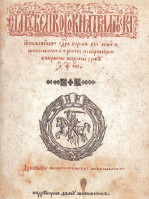
|
LITHUANIAN STATUTE. The code of laws of the Lithuanian-Ruthenian state, published in the 16th century in three basic editions. It was one of the most advanced legal codes of its time. The overriding concern of the First or Old Lithuanian Statute (1529) was to protect the interests of the state and nobility, especially the magnates. The Second Lithuanian Statute (1566), often called the Volhynian version because of the influence of the Volhynian nobility in its preparation, brought about major administrative-political reforms and expanded the privileges of the lower gentry. In the Third Lithuanian Statute (1588) many Polish concepts were introduced into the criminal and civil law, which were systematized anew. All three editions of the Lithuanian Statute were written in the contemporary Ruthenian chancellery language, which was a mixture of Church Slavonic, Ukrainian, and Belarusian. The Lithuanian Statute remained for several centuries the basic collection of laws in Ukraine. It was the main source of Ukrainian law for the Cossack Hetman state and the basic source of the Code of Laws of 1743. In Right-Bank Ukraine it remained in force until 1840, when it was annulled by Tsar Nicholas I... |
| Lithuanian Statute |
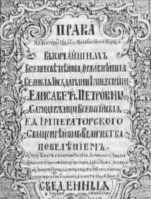
|
CODE OF LAWS OF 1743. Collection of prevailing Ukrainian laws in the Cossack Hetman state. The Russian government never ratified the code of laws, and hence it remained only a proposal, although it became the basic source of operative law in Ukraine in the 17th and 18th centuries. The code of laws was prepared by the committee composed of representatives of the higher clergy, Cossack officers, and municipal administrators. The main sources of the code were the Lithuanian Statute and the compilation of the Germanic law (Magdeburg law and Kulm law). In addition, hetman manifestos, Cossack court practice, and Ukrainian customary law were drawn on. In cases where no relevant law existed in the code, the code prescribed the use of other 'Christian' laws (law of analogy), court precedents, and customary law. The creative work of the committee consisted of the selection of quotes from written sources, their partial modification, and the incorporation of amendments to them. The prescriptions of criminal law reflected the severity of ancient law, moderated by the right of the court to reduce prescribed punishment 'according to circumstances of the case' and 'the severity of the crime'... |
| Code of Laws of 1743 |
The preparation, editing, and display of the IEU entries about the historical evolution of Ukrainian law and legal tradition were made possible by the financial support of ARKADI MULAK-YATSKIVSKY of Los Angeles, CA, USA.
 III. UKRAINIAN WANDERING BARDS: KOBZARS, BANDURYSTS, AND LIRNYKS
III. UKRAINIAN WANDERING BARDS: KOBZARS, BANDURYSTS, AND LIRNYKS
The artistic tradition of Ukrainian wandering bards, the kobzars (kobza players), bandurysts (bandura players), and lirnyks (lira players) is one of the most distinctive elements of Ukraine's cultural heritage. While kobzars first emerged in Kyivan Rus', bandurysts and lirnyks appeared and became popular in the 15th century. Kobzars often lived at the Zaporozhian Sich and accompanied the Cossacks on military campaigns. The epic songs they performed served to raise the morale of the Cossack army in times of war, and some (eg, Prokip Skriaha) were even beheaded by the Poles for performing dumas that incited popular revolts. As the Hetman state declined, so did the fortunes of the kobzars, and they gradually joined the ranks of mendicants, playing and begging for alms at rural marketplaces. In the 19th and 20th centuries, particularly from the 1870s, the kobzars, including the virtuoso Ostap Veresai, were persecuted by the tsarist regime as the propagators of Ukrainophile sentiments and historical memory. In the 1930s, during Stalin's Great Terror, several hundred kobzars and lirnyks were brought to a congress from all parts of Ukraine and after the congress ended almost all of them were shot... Learn more about the artistic legacy of the Ukrainian wandering bards by visiting the following entries:
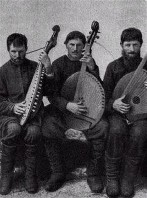
|
KOBZARS. Wandering folk bards who performed a large repertoire of epic-historical, religious, and folk songs while playing a kobza or bandura. Kobzars originally composed and performed their own historical songs and dumas in the recitative style and later added songs of various other genres (religious and humorous songs, dance melodies) to their repertoires, which were passed on to their students. Kobzars were held in high esteem by the Zaporozhian Cossacks. In the late 18th century the occupation of kobzar became the almost exclusive province of the blind and crippled, who organized kobzar brotherhoods to protect their corporate interests. In the 19th century, the few hundred remaining kobzars in Poltava, Kharkiv, and Chernihiv gubernias and their artistry aroused the interest of various ethnographers, composers, and painters, including Mykola Lysenko, Oleksander Rusov, and Lesia Ukrainka... |
| Kobzars |
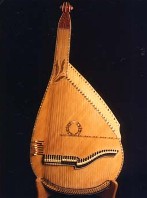
|
BANDURA. A Ukrainian musical instrument similar in construction and appearance to a lute. The bandura has 32-55 strings: the 8-14 bass strings (bunty) are stretched along the neck, and the 24-43 treble strings (prystrunky) run along the side of the soundboard. Before the 20th century the bandura had various shapes and tunings (basically diatonic), but in recent times it has been standardized. The oldest record of a bandura-like instrument in Ukraine is an 11th-century fresco of court musicians (skomorokhy) in the Saint Sophia Cathedral in Kyiv. This lute-like instrument is probably the ancestor of the bandura and the kobza. The two instruments were related, but distinct. The kobza was smaller in size and had fewer strings, but these were fretted. Around the 16th century prystrunky were added to the bandura, and from that time only one note was obtained from each string... |
| Bandura |
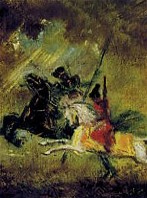
|
DUMA. Lyrico-epic works of folk origin about events in the Cossack period of the 16th-17th century. The dumas differ from other lyrico-epic and historical poetry by their form and by the way in which they were performed. They did not have a set strophic structure, but consisted of uneven periods that were governed by the unfolding of the story. Each period constituted a finished, syntactical whole and conveyed a complete thought. The dumas were not sung, but were performed in recitative to the accompaniment of a bandura, kobza, or lira. The chanting had much in common with funeral lamentation. Scholars connect the dumas with the poetic forms that appeared in Ukraine in the 12th century, particularly with the Slovo o polku Ihorevi. One widely accepted theory of the origin of the dumas is that proposed by Pavlo Zhytetsky, according to which they were a unique synthesis of popular and 'bookish-intellectual' creativity... |
| Duma |
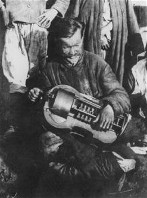
|
LIRNYKS. Wandering folk minstrels, often blind, who accompanied themselves on a lira, a folk string instrument introduced in Ukraine from the West in the 15th century. The sound of a lira is produced by cranking a rosined wheel against strings within the instrument. Most frequently, the lira has three strings; the two lower strings are monotonic, and the higher string leads the melody. Lirnyks appeared in Ukraine in the 15th century and had formed a guild by the end of the 17th century. There were special schools for them. Their repertoire consisted mainly of religious songs, although humorous and satirical songs were also popular. Some lirnyks specialized in historical songs and dumas. The lifestyle of lirnyks (as well as kobzars) is described by N. Kononenko in Ukrainian Minstrels: And the Blind Shall Sing (1998)... |
| Lirnyks |
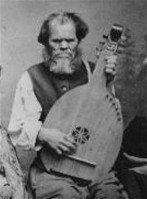
|
VERESAI, OSTAP, b 1803 in Kaliuzhyntsi, Pryluka county, Poltava gubernia, d April 1890 in Sokyryntsi, Pryluka county, Poltava gubernia. Kobza player and singer (tenor). A peasant who became blind in his early youth, he studied from 1818 with S. Koshovy and other kobzars. By the 1860s he was the most renowned performer of Ukrainian epic and historical songs. In 1873 he appeared in recital for the Southwestern Branch of the Imperial Russian Geographic Society and in 1875 concertized in Saint Petersburg. His repertoire included the dumas Kinless Fedir, Three Brothers from Azov, and Oleksii Popovych. Veresai's artistry was studied by ethnographers such as Oleksander Rusov and Pavlo Chubynsky, as well as by Mykola Lysenko, who wrote a monograph on the works in Veresai's repertoire (1873, 1978)... |
| Ostap Veresai |
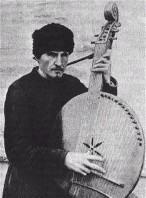
|
PARKHOMENKO, TERENTII, b 28 October 1872 in Voloskivtsi, Sosnytsia county, Chernihiv gubernia, d 23 March 1910 in Voloskivtsi. Kobzar. Having lost his sight at 10 he studied the kobza under A. Hoidenko and others and then for five years wandered with Hoidenko through Ukraine. At 30 he began to teach the kobza. Some of his students (Petro Tkachenko-Halashko, Serdiuk-Pereliub, and Avram Hrebin) became noted folk singers. He corresponded with Mykola Lysenko, Opanas Slastion, Oleksander Malynka, Mikhail Speransky, Lesia Ukrainka, Ivan Franko, and Volodymyr Hnatiuk. He gave concerts in Kyiv, Poltava, Nizhyn, Mohyliv-Podilskyi, Uman, Vinnytsia, Yelysavethrad, and Warsaw. His repertoire included dumas, historical songs, psalms, lyrical songs, and satires. Because his songs awakened national consciousness among the peasants, he was harassed by the authorities. He died as a result of a police beating... |
| Terentii Parkhomenko |
The preparation, editing, and display of the IEU entries about the Ukrainian wandering bards were made possible by a generous donation from ARKADI MULAK-YATSKIVSKY of Los Angeles, CA, USA.
 IV. OSTROH ACADEMY: EASTERN EUROPE'S FIRST INSTITUTION OF HIGHER LEARNING
IV. OSTROH ACADEMY: EASTERN EUROPE'S FIRST INSTITUTION OF HIGHER LEARNING
Founded ca 1576 in Ostroh, Volhynia, by a Ukrainian nobleman Prince Kostiantyn Vasyl Ostrozky--one of the most remarkable figures in the 16th-century Ukrainian cultural and national rebirth--the Ostroh Academy was the first postsecondary learning center in the Orthodox Eastern Europe. At a time when Catholicism was making inroads into Western Ukraine, the academy was a bastion of Orthodoxy and Ruthenian culture and maintained the traditional orientation toward Constantinople. Though the Ostroh Academy did not develop into a Western European-style university, as Ostrozky had hoped, it was the foremost Orthodox academy of its time. Closely associated with the Ostroh Press, the academy and the Ostroh intellectual circle had an enduring influence on pedagogical thought and the organization of schools in Ukraine and provided a model for the brotherhood schools that were later founded in Lviv, Lutsk, Volodymyr-Volynskyi, Vilnius, and Brest. The legacy and tradition of the Ostroh Academy has endured until today and became the basis for the establishment in 1994 of the Ostroh Higher Collegium, which was conferred university status in 2000 and renamed the Ostroh Academy National University... Learn more about the Ostroh Academy and Ostroh intellectual circle by visiting the following entries:
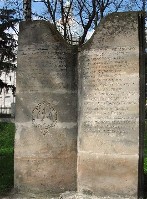
|
OSTROH ACADEMY. The first rector of the academy was the writer Herasym Smotrytsky. The instructors, many of whom had been invited from Constantinople, included the pseudonymous Ostrozkyi Kliryk, the Greek Cyril Lucaris, J. Latos (a philosopher from Cracow University), and Yov Boretsky, who later became rector of the Lviv Dormition Brotherhood School and then metropolitan of Kyiv. The curriculum consisted of Church Slavonic, Greek, Latin, theology, philosophy, medicine, natural science, and the classical free studies (mathematics, astronomy, grammar, rhetoric, and logic). In addition the academy was renowned for choral singing. The academy was closely affiliated with the Ostroh Press. Hetman Petro Konashevych-Sahaidachny, the writer and scholar Meletii Smotrytsky, and several other prominent political and cultural leaders studied at the academy. With the founding of a rival Jesuit college in Ostroh in 1624, the academy went into decline, and by 1636 it had ceased to exist... |
| Ostroh Academy |
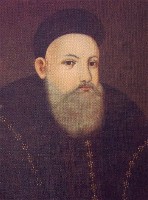
|
OSTROZKY, KOSTIANTYN VASYL, (Polish: Ostrogski, Konstantyn), b 1526 or 1527 in Dubno, Volhynia, d 23 February 1608 in Ostroh, Volhynia. Ukrainian nobleman and political and cultural figure; starosta of Volodymyr-Volynskyi and marshal of Volhynia from 1550, voivode of Kyiv from 1559, and senator from 1569; the most powerful magnate in Volhynia and one of the most influential figures in the Lithuanian-Ruthenian state and Polish-Lithuanian Commonwealth. He was a candidate for the Polish throne after the death of Sigismund II Augustus (the last member of the Jagiellon dynasty) in 1572, and for the Muscovite throne after the death of Tsar Fedor Ivanovich (the last member of the Riurykide dynasty) in 1598. Ostrozky defended Ruthenian (Ukrainian and Belarusian) political rights and was the de facto leader of Ukraine in the negotiations leading up to the 1569 Union of Lublin, during which he demanded that Ruthenia be treated as an equal partner of Poland and Lithuania... |
| Kostiantyn Vasyl Ostrozky |
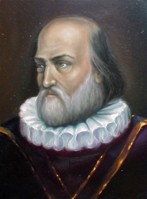
|
SMOTRYTSKY, HERASYM, b ? in Smotrych (now in Dunaivtsi raion, Khmelnytskyi oblast), d October 1594. Writer and teacher; father of Meletii Smotrytsky. He was secretary at the Kamianets-Podilskyi county office and in 1576 was invited by Prince Kostiantyn Vasyl Ostrozky to Ostroh, where he became one of the leading activist members of the Ostroh intellectual circle. In 1580 Smotrytsky became the first rector of the Ostroh Academy. He was one of the publishers of the Ostroh Bible, to which he wrote the foreword and the verse dedication to Prince Ostrozky. The dedication is one of the earliest examples of Ukrainian versification (nonsyllabic) and is somewhat reminiscent of Ukrainian dumas. Smotrytsky's polemical works against those betraying the Orthodox faith and a satire on the clergy have been lost. Only his book, Kliuch tsarstva nebesnoho (Key to the Heavenly Kingdom, 1587), which is the first printed example of Ukrainian polemical literature, has survived... |
| Herasym Smotrytsky |
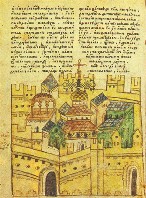
|
OSTROH PRESS. The second oldest printing press in Ukraine, founded in 1578 by Ivan Fedorovych (Fedorov) with the financial backing of Prince Kostiantyn Vasyl Ostrozky at the prince's castle in Ostroh, Volhynia. Its first publications were Azbuka (Alphabet, 1578), a collection of prayers in Greek and Church Slavonic; the second impression of Fedorovych's Bukvar (1578), the first Ukrainian primer; the first Ukrainian edition of the New Testament and an alphabetical index to it (1580); the Ostroh Bible (1581); and the first poetic work printed in Cyrillic, Andrii Rymsha's Khronolohiia (Chronology, 1581). It also printed pro-Orthodox, anti-Uniate polemical literature, including works by Herasym Smotrytsky, V. Surazky, Ostrozky, Khrystofor Filalet, and the pseudonymous Ostrozkyi Kliryk; a book (1598) containing eight epistles by Meletios Pegas and one by Ivan Vyshensky (his only work published during his lifetime); several liturgical books; and works by Saint Basil the Great and Saint John Chrysostom in Church Slavonic translation... |
| Ostroh Press |
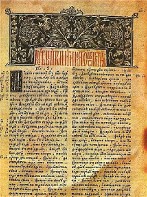
|
OSTROH BIBLE. The first full Church Slavonic edition of the canonical Old and New Testaments and the first three books of the Maccabees, printed in Ostroh in 1580-1 by Ivan Fedorovych (Fedorov) in 1,500-2,000 copies. The preparation of the text and the printing were funded by Prince Kostiantyn Vasyl Ostrozky. With close to 1,400 headpieces, initials, and tailpieces, the 628-folio book is one of the finest examples of printing in late 16th-century Ukraine. The text was based on all the Church Slavonic and Greek sources of the Bible (including the complete 1499 Bible of Archbishop Gennadii of Novgorod the Great) collected by Ostrozky. The Old Testament sources were verified against the Septuagint or translated anew (sometimes incorrectly) by scholars directed by Herasym Smotrytsky at the Ostroh Academy. The Bible includes Ostrozky's and Smotrytsky's prefaces, Smotrytsky's heraldic verses dedicated to Ostrozky, and Fedorovych's postscript. The Bible was reprinted with minor revisions in a unified orthography in Moscow in 1663... |
| Ostroh Bible |
The preparation, editing, and display of the IEU entries dealing with the Ostroh Academy and Ostroh intellectual circle were made possible by the financial support of the CANADIAN FOUNDATION FOR UKRAINIAN STUDIES.
 V. BROTHERHOODS: THE PROMOTERS OF EDUCATION AND CULTURE IN EARLY MODERN UKRAINE
V. BROTHERHOODS: THE PROMOTERS OF EDUCATION AND CULTURE IN EARLY MODERN UKRAINE
Starting in the late 16th century, the Orthodox lay brotherhoods, affiliated with individual church parishes in Ukraine, began to play a historical role in the development of Ukrainian culture and education. Such Orthodox brotherhoods came into existence only in Ukraine and Belarus and, to a large extent, their influence shaped the unique place Ukrainian culture and society have occupied between Eastern and Western Christianity. Although structurally similar to their western European counterparts, the Eastern-rite brotherhoods developed their unique features and their activities coincided with a period of crucial social and cultural change in early modern Ukraine. The Ukrainian brotherhoods assumed the task of defending the Orthodox faith and Ukrainian nationality by counteracting Catholic and particularly Jesuit expansionism, Polonization, and later conversion to the Uniate church. Because they consisted predominantly of burghers, the brotherhoods acquired a secular character and often found themselves in opposition to the authoritarian practices of the clergy. Hence, they endeavored to reform the Orthodox church from within by condemning the corrupt practices of the hierarchy and of individual clergymen. The brotherhoods brought about a revival in the life of the church by promoting cultural and educational activity. They founded brotherhood schools, printing presses, and libraries. The resulting cultural-religious movement found its literary expression in polemical literature. The brotherhoods also participated in civic and political life and maintained ties with the Cossacks. The schools attached to the Orthodox brotherhoods in several larger cities disseminated European humanist ideas and introduced generally accessible post-humanist education, while the brotherhood presses promoted the development of scholarship and literature... Learn more about the brotherhoods and their crucial influence on education and culture in early modern Ukraine by visiting the following entries:
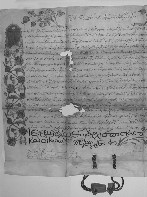
|
BROTHERHOODS. Fraternities affiliated with individual churches in Ukraine and Belarus that performed a number of religious and secular functions. The origins of brotherhoods can be traced back to the medieval bratchyny, which were organized at churches in the Princely era. Brotherhoods as such appeared in Ukraine in the mid-15th century, with the rise of the burgher class. They adopted their organizational structure from Western medieval brotherhoods (confraternitates) and trade guilds. Initially the brotherhoods engaged only in religious and charitable activities. They maintained churches and sometimes assumed financial responsibility for them. However, in the second half of the 16th and at the beginning of the 17th century, the brotherhoods began to play a historical role. The Lviv Dormition Brotherhood was one of the oldest and most successful brotherhoods. In the late 16th and early 17th century new brotherhoods were founded and existing ones were reorganized in the towns of Galicia, the Kholm region, Podlachia, Volhynia, and the Dnipro region. Each brotherhood had its own statute (articles, regulations, procedures), modeled on the statute of the Lviv Dormition Brotherhood of 1586. Although brotherhood members were usually merchants and skilled tradesmen residing in the towns, some Orthodox clerics, nobles and magnates, such as Prince Kostiantyn Vasyl Ostrozky, participated in the affairs of certain brotherhoods. In 1620, Hetman Petro Konashevych-Sahaidachny, 'with the entire Zaporozhian Host,' joined the Kyiv Epiphany Brotherhood... |
| Brotherhoods |
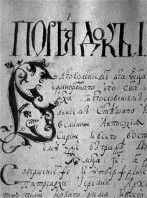
|
BROTHERHOOD SCHOOLS. Schools founded by religious brotherhoods for the purposes of counteracting the denationalizing influence of Catholic (Jesuit) and Protestant schools and of preserving the Orthodox faith began to appear in the 1580s. The first school was established in 1586 by the Lviv Dormition Brotherhood. The school served as a model for other brotherhood schools in various towns of the Polish-Lithuanian Commonwealth, most of them in Ukraine and Belarus. In the first half of the 17th century even some villages had brotherhood schools. The most prominent schools were the Lviv Dormition Brotherhood School and Kyiv Epiphany Brotherhood School. At first the brotherhood schools had a Greek-Church Slavonic curriculum: lectures were in Church Slavonic, and Greek was taught as a second language. Then the schools began to adopt the structure and curriculum of the Jesuit schools, using Latin as the primary language, particularly those schools that modeled themselves on the Kyivan Mohyla Academy. Ukrainian was used only for examination purposes and, from 1645, for teaching the catechism. Brotherhood schools were open to various social strata. Students were judged not by lineage, but by achievement (in contrast to Jesuit schools). Brotherhood schools made a significant contribution to the growth of religious and national consciousness and the development of Ukrainian culture... |
| Brotherhood schools |
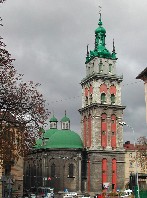
|
LVIV DORMITION BROTHERHOOD. An Orthodox religious association founded in the 15th century by Lviv merchants and tradesmen at the Dormition Church in Lviv. It is the oldest and one of the leading Ukrainian brotherhoods, and it served as an example to other brotherhoods. There are historical references to it dating back to 1463. According to its charter, which was confirmed by Patriarch Joachim V of Antioch in 1586 and Patriarch Jeremiah II of Constantinople in 1589, the brotherhood was independent of the local bishops (right of stauropegion) and subject directly to the Patriarch of Constantinople. It had the right to oversee the activities not only of secular members of the church but also of the clergy and even the bishops. Its membership was open to all estates and to Orthodox believers from other cities and countries. Membership dues, profits from book sales, donations, and gifts were used to support the Dormition Church and Saint Onuphrius's Church and Monastery, which were owned by the brotherhood, and to operate a printing press, school, orphanages, hospitals, and homes for elderly members. As the leading cultural and religious institution for Western Ukraine, the Lviv brotherhood played a key role in resisting Polish national and religious oppression and in fighting for equality with the Catholics and the Polish burghers... |
| Lviv Dormition Brotherhood |
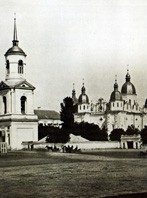
|
KYIV EPIPHANY BROTHERHOOD. A church brotherhood established ca 1615 at the Kyiv Epiphany Brotherhood Monastery in the Podil district of Kyiv by wealthy burghers, nobles, clergymen, and Cossacks to defend the Orthodox faith from the onslaught of Polish rule and Catholicism. Hetman Petro Konashevych-Sahaidachny gave it a great deal of support and joined it 'with the entire Zaporozhian Host' in 1620. That same year the Orthodox Kyiv metropoly was restored and the brotherhood acquired stauropegion status and the right to establish a 'brotherhood for young men' from the visiting patriarch of Jerusalem, Theophanes III. The Polish king Sigismund III Vasa granted the brotherhood a royal charter in 1629. The brotherhood became a cultural and educational center in Kyiv. Many of Ukraine's leading figures were affiliated with it. To promote education, it founded the Kyiv Epiphany Brotherhood School in 1615. Granted a charter by Theophanes in 1620 to teach 'Helleno-Slavonic and Latin-Polish letters,' in 1631 the school was merged with the Kyivan Cave Monastery School to form the Kyivan Mohyla College, which later became the Kyivan Mohyla Academy. Clerical involvement in the brotherhood forced its lay members--the burghers--into a secondary role. The brotherhood's 'elder brother,' Metropolitan Petro Mohyla, subordinated the brotherhood to the clergy in 1633, and the Kyiv Epiphany Brotherhood Monastery gradually took over its functions... |
| Kyiv Epiphany Brotherhood |
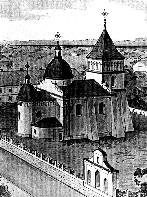
|
LUTSK BROTHERHOOD OF THE ELEVATION OF THE CROSS. A renowned Orthodox brotherhood founded in 1617 in Lutsk by Herasym Mykulych, the hegumen of the Chernchytsi Monastery located near the city. The Lutsk Brotherhood included monks, priests, bishops, nobles, aristocrats, and members of the middle class from Lutsk and Volhynia. It received a charter from the Polish king Sigismund III Vasa in 1619 and was granted the status of stauropegion by the Patriarch of Constantinople in 1623. It ran the Lutsk Brotherhood of the Elevation of the Cross School and operated a printing press in the monastery. After Bohdan Khmelnytsky's era the brotherhood entered a period of steady decline. It was revived in 1896 by the Russian government with the intention that its activities 'strengthen the Russian people.' From 1920 the brotherhood functioned without a charter. In 1931 it was liquidated by the Polish government, only to be granted a new charter in 1935 which recognized the brotherhood's 17th-century roots but not the right to its holdings (they were left under government jurisdiction). The activities of the brotherhood ceased with the Soviet occupation of Lutsk... |
| Lutsk Brotherhood of the Elevation of the Cross |
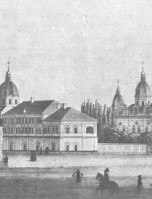
|
KYIV EPIPHANY BROTHERHOOD SCHOOL. One of the most important Orthodox brotherhood schools in Ukraine. It was founded in 1615-16 by the Kyiv Epiphany Brotherhood, shortly after the brotherhood itself was organized. Modeled on the Lviv Dormition Brotherhood School, its purpose was to diminish the enrollment of Orthodox children in Catholic schools. The school was open to boys from all estates. Its liberal arts program emphasized Church Slavonic and Greek. Its instructors came from Western Ukraine; they were graduates of the Ostroh Academy, the Lviv Dormition Brotherhood School, and various Polish and German institutions of higher learning. The school's rectors were prominent Orthodox churchmen and scholars: Yov Boretsky (1615-18), Meletii Smotrytsky (1618-20), Kasiian Sakovych (1620-4), and Toma Yevlevych (1628-32). Among its graduates were a number of prominent scholars and cultural figures of the 17th century. The school greatly benefited from Hetman Petro Konashevych-Sahaidachny's protection and the financial support of the Kyiv Epiphany Brotherhood. Patriarch Theophanes III of Jerusalem, who visited Kyiv in 1620, granted stauropegion to the Kyiv Epiphany Brotherhood and praised its educational work. In 1632 the school was merged with the school of the Kyivan Cave Monastery, which had been founded shortly before then by Archimandrite Petro Mohyla, to form the Kyivan Mohyla College (later the Kyivan Mohyla Academy), the most important educational institution in the Orthodox world of its time... |
| Kyiv Epiphany Brotherhood School |
The preparation, editing, and display of the IEU entries dedicated to the brotherhoods and their influence on Ukrainian education and culture were made possible by the financial support of the SENIOR CITIZENS HOME OF TARAS H. SHEVCHENKO (WINDSOR) INC. FUND.
 VI. THE ORIGINS AND TRADITION OF PRINTING IN UKRAINE
VI. THE ORIGINS AND TRADITION OF PRINTING IN UKRAINE
The invention of movable type and printing presses in Germany around 1450 had a tremendous and lasting influence on the cultural, social, religious, and scientific development of Europe. As the printing technologies spread throughout the continent and allowed for a quicker and wider dissemination of knowledge, they became a major catalyst for both the Reformation and the later scientific revolution. Printed books represented the key factor in the spread of education and literacy. In Ukraine, the first printing press was founded by Ivan Fedorovych (Fedorov) in Lviv in 1573. Its equipment and assets were used to found the Lviv Dormition Brotherhood Press (1591-1788), which played a key role in the history of early Ukrainian printing. Printing in Volhynia began after Fedorovych entered the service of Prince Kostiantyn Vasyl Ostrozky and founded what became the important Ostroh Press (1577-1612). Founded in the early 17th century the Kyivan Cave Monastery Press became the most important center of printing and engraving in Ukraine until the mid 19th century; it played a crucial role in raising the level of education and culture and in aiding the Orthodox Ukrainians to defend themselves against the inroads of Polonization and Catholicism. An important printing press associated with the Uniate Church was established at the Pochaiv Monastery in 1730 after it became a centre of the Basilian monastic order... Learn more about the origins and traditions of book printing in Ukraine by visiting the following entries:
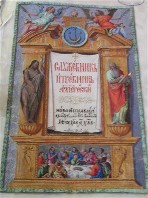
|
PRINTING. The earliest books printed in the Ukrainian redaction of Church Slavonic and in the Cyrillic alphabet in general--the Orthodox Octoechos and Horologion--were produced in 1491 by Szwajpolt Fiol, a Franconian expatriate in Cracow. These were followed by liturgical books produced in the Lithuanian-Ruthenian state by short-lived presses on Belarusian territory, such as Frantsisk Skoryna's in Vilnius (1525), Ivan Fedorovych (Fedorov) and Piotr Mstislavets's in Zabludiv (now Zabludow, 1568-70), and Vasyl Tsiapinsky's itinerant press (ca 1565-70). The first printing press on Ukrainian territory was founded by Fedorovych in Lviv (1573-4). Thereafter Lviv remained a major printing center. In Kyiv, printing began with the founding of the Kyivan Cave Monastery Press (1615-1918). In 1787 a printing press was founded at the Kyivan Mohyla Academy; later it became the press of the Kyiv Theological Academy. In Left-Bank Ukraine the first printing presses were those of Kyrylo Stavrovetsky-Tranquillon in Chernihiv (1646) and Archbishop Lazar Baranovych in Novhorod-Siverskyi (1674-9), which was moved to Chernihiv and became the important Chernihiv Press. In 1720 Tsar Peter I subordinated the presses in Kyiv and Chernihiv to the Russian Orthodox church and forbade the printing of all but church books sanctioned by church censors in Saint Petersburg. From 1721 all books printed in Russian-ruled Ukraine were strictly controlled and censored, and all Ukrainianisms were consequently banned in imprints of liturgical texts... |
| Printing |
s monument_s.jpg)
|
FEDOROVYCH (FEDOROV), IVAN, b ca 1525, d 16 December 1583 in Lviv. Fedorovych was the founder of book printing and book publishing in Muscovy and Ukraine. He was deacon of Saint Nicholas Gostunsky Church in Moscow, where, from 1553, he oversaw the construction of a printing house commissioned by Tsar Ivan IV. This technical innovation created competition for the Muscovite scribes, who persecuted Fedorovych and finally caused him to flee to the Grand Duchy of Lithuania. Settling in Zabludow (Zabludiv) on the Ukrainian-Belarusian border, he changed his surname from Fedorov to Fedorovych. In Zabludow he published a Didactic Gospel, the so-called Zabludow Gospel (1569), and Psalter (1570). Fedorovych moved to Lviv in 1572 and resumed his work as a printer the following year at Lviv's Saint Onuphrius's Monastery. In 1575 Fedorovych, in the service of Prince Kostiantyn Vasyl Ostrozky, was placed in charge of the Derman Monastery; in 1577-9 he established the Ostroh Press, where, in 1581, he published the famous Ostroh Bible and some other books. He returned to Lviv after a quarrel with Prince Ostrozky, but his attempt to reopen his printing shop was unsuccessful. His printery became the property of the Lviv Dormition Brotherhood. The brotherhood used Fedorovych's original designs until the early 19th century... |
| Ivan Fedorovych (Fedorov) |

|
OSTROH PRESS. The second oldest printing press in Ukraine, founded in 1578 by Ivan Fedorovych (Fedorov) with the financial backing of Prince Kostiantyn Vasyl Ostrozky at the prince's castle in Ostroh, Volhynia. The Ostroh Press was closely affiliated with the Ostroh Academy, one of the first postsecondary institutions in Eastern Europe. At a time when Catholicism was making inroads into Western Ukraine, the academy was a bastion of Orthodoxy and maintained the traditional orientation toward Constantinople. Although it did not develop into a Western European-style university, as Ostrozky had hoped, it was the foremost Orthodox academy of its time. The first publications of the Ostroh Press were Azbuka (Alphabet, 1578), a collection of prayers in Greek and Church Slavonic; the second impression of Fedorovych's Bukvar (1578), the first Ukrainian primer; the first Ukrainian edition of the New Testament and an alphabetical index to it (1580); the famous Ostroh Bible (1581); and the first poetic work printed in Cyrillic, Andrii Rymsha's Khronolohiia (Chronology, 1581). The press also printed pro-Orthodox, anti-Uniate polemical literature, including works by Herasym Smotrytsky, Vasyl Surazky, Kostiantyn Vasyl Ostrozky, Khrystofor Filalet, and the pseudonymous Ostrozkyi Kliryk. The Ostroh Press functioned, with some interruptions, until 1612; from 1602 to 1605 it operated at the Derman Monastery... |
| Ostroh Press |
LVIV DORMITION BROTHERHOOD PRESS. A press founded in 1586 by the Lviv Dormition Brotherhood--the oldest and one of the leading Ukrainian brotherhoods, ie, laymen fraternities affiliated with individual churches in Ukraine that performed a number of religious and secular functions. The Lviv Dormition Brotherhood subsequently served as an example to other brotherhoods in Ukraine and Belarus. With a printing press and other equipment used by Ivan Fedorovych (Fedorov), the Lviv Dormition Brotherhood Press printed liturgical books, primers, poetry, dramas, and theological, educational, and polemical literature. Its oldest extant publications date from 1591: the 1589 charter of Patriarch Jeremiah II granting the brotherhood the right of stauropegion, a booklet of verses in honor of Metropolitan Mykhailo Rahoza, and the grammar Adelphotes. From 1591 to 1722 the press issued 140 books with a total run of some 160,000 copies. They were distributed throughout Polish-ruled Ukraine and Belarus, and even in Wallachia, Moldavia, Serbia, and Bulgaria. They were not, however, permitted to be sold in the Moscow-controlled Ukraine until 1707. The press played an important role in the intellectual life of Ukraine and the defense of the Orthodox church. In 1788 the Lviv brotherhood and its press were succeeded by the Stauropegion Institute... |
|
| Lviv Dormition Brotherhood Press |
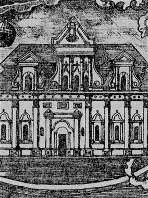
|
KYIVAN CAVE MONASTERY PRESS. The first imprimery in Kyiv and the most important center of printing and engraving in Ukraine in the 17th and 18th centuries. It was founded ca 1606-15 at the Kyivan Cave Monastery by the archimandrite Yelysei Pletenetsky, who purchased the equipment of the former Striatyn Press of Hedeon Balaban in Galicia. Later it was headed by, among others, Zakhariia Kopystensky, Petro Mohyla, Innokentii Gizel (for over 30 years), Varlaam Yasynsky, and Yoasaf Krokovsky. The imprimery issued several hundred titles on various subjects, both original works and translations, in Ukrainian, Church Slavonic, Polish, Russian, Latin, and Greek. The books printed included many ecclesiastical and liturgical texts, and also primers, hagiographic studies, Orthodox polemical treatises, didactic works, and literary works (panegyrics, emblems, epigrams). Beautifully engraved and ornamented, they were distributed throughout the Slavic countries, as well as Austria, Greece, and Moldavia. In the 16th and 17th centuries the imprimery played an important role in raising the level of education and culture in Ukraine. However, the tsarist ukase of 1720 limited it to printing only religious works that were strictly censored by the Holy Synod in Moscow, which it continued to do until 1918... |
| Kyivan Cave Monastery Press |
_s.jpg)
|
POCHAIV MONASTERY PRESS. An important early printing press in Ukraine, established at the Pochaiv Monastery in 1730 after it became a centre of the Basilian monastic order. Granted royal charters in 1732 and 1736, the press was subsidized by Bishop Teodosii Rudnytsky-Liubienitsky of Lutsk. Between 1731 and 1800 it published over 355 books, most of them liturgical ones, but also didactic gospels and theological books, works of polemical literature, literary works in Polish and Latin, collections of documents on Ukrainian church history, primers, textbooks, and educational works. Some of its editions were among the highest achievements of Ukrainian publishing and literature of the time. The press's publications were known for their artistic ornamentation and the quality of their paper and print. Many were printed in the so-called Pochaiv cursive, a typeface based on Ukrainian calligraphy of the 16th to 18th centuries. Illustrations and engravings were done by well-known artists, such as Nykodym Zubrytsky, Adam Hochemsky, Yosyf Hochemsky, and Teodor Strelbytsky. After the Pochaiv Monastery was taken over by the Russian Orthodox church in 1831, the press continued printing religious and secular books, including several on the history of Volhynia. The press was closed down in 1918... |
| Pochaiv Monastery Press |
The preparation, editing, and display of the IEU entries about the origins and traditions of book printing in Ukraine were made possible by the financial support of the FRANKO FAMILY FOUNDATION of Toronto, ON, Canada.
 VII. THE CULTURAL LEGACY OF KYIVAN MOHYLA ACADEMY
VII. THE CULTURAL LEGACY OF KYIVAN MOHYLA ACADEMY
Established in 1632, Kyivan Mohyla Academy developed into the leading center of higher education in 17th- and 18th-century Ukraine, which exerted a significant intellectual influence over the entire Orthodox world. In founding the school, Metropolitan Petro Mohyla's purpose was to master the intellectual skills and learning of contemporary Europe and to apply them to the defense of the Orthodox faith. Taking his most dangerous adversary as the model, he adopted the organizational structure, the teaching methods, and the curriculum of the Jesuit schools. Unlike other Orthodox schools, which emphasized Church Slavonic and Greek, Mohyla's college gave primacy to Latin and Polish. This change was a victory for the more progressive churchmen, who appreciated the political and intellectual importance of these languages. From its beginnings, the academy had close ties with the Cossack starshyna, which provided it with moral and material support. The school, in turn, educated the succeeding generation of the service elite. Among the academy's students were the future hetmans Ivan Vyhovsky, Ivan Samoilovych, Pavlo Teteria, Ivan Mazepa, and Pavlo Polubotok. Many of the most accomplished Ukrainian intellectuals, authors, and churchmen of the time served on the school's faculty, and some of them played instrumental roles in Peter I's educational reforms. Among the academy's most famous students was the renown philosopher Hryhorii Skovoroda. The academy was closed down by the tsarist authorities in 1817, and two years later the Kyiv Theological Academy was opened in its place. In 1991 Kyivan Mohyla Academy was formally revived as a national university and in 1992 it opened its doors to students on its historic campus... Learn more about the history and cultural legacy of Kyivan Mohyla Academy by visiting the following entries:
_s.jpg)
|
KYIVAN MOHYLA ACADEMY. Established by Petro Mohyla through the merger of the Kyiv Epiphany Brotherhood School (est 1615-16) with the Kyivan Cave Monastery School (est 1631 by Mohyla), the new school was conceived by its founder as an academy, ie, an institution of higher learning offering philosophy and theology courses and supervising a network of secondary schools. Completing the Orthodox school system, it was to compete on an equal footing with Polish academies run by the Jesuits. Fearing such competition, King Wladyslaw IV Vasa granted the school the status of a mere college or secondary school, and prohibited it from teaching philosophy and theology. It was only in 1694 that Kyivan Mohyla College (Collegium Kijoviense Mohileanum) was granted the full privileges of an academy, and only in 1701 that it was recognized officially as an academy by Tsar Peter I. Supported generously by Hetman Samoilovych (1672-87), the school began to flourish towards the end of his rule, and during Hetman Ivan Mazepa's reign (1687-1709), enjoyed its golden age. The enrollment at the time exceeded 2,000. The Moscow academy was patterned after the Kyivan one and numerous Russian schools were organized by bishops who were graduates of the Kyiv academy... |
| Kyivan Mohyla Academy |
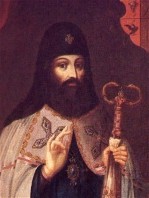
|
MOHYLA, PETRO, b 10 January 1597 in Moldavia, d 11 January 1647 in Kyiv. Ukrainian metropolitan, noble, and cultural figure; son of Simeon, hospodar of Wallachia (1601-2) and Moldavia (1606-7), and the Hungarian
princess Margareta. After his father's murder in 1607, Mohyla and his mother sought refuge in Western Ukraine. He was tutored by teachers of the Lviv Dormition Brotherhood School, and pursued
higher education in theology at the Zamostia Academy and in Netherlands and France. After his return to Ukraine he entered the military service and fought as an officer in the Battle of Cecora (1620) and Battle of Khotyn (1621). In 1621-7 he received estates in the Kyiv region and became interested in affairs of the Ukrainian Orthodox church. In 1627 he became archimandrite of the influential Kyivan Cave Monastery. In 1632 the Orthodox deputies in the Polish Sejm nominated Mohyla the metropolitan of Kyiv. He was consecrated on 7 May 1633. As metropolitan Mohyla improved the organizational structure of the Orthodox church in Ukraine, reformed the monastic orders, and enriched the theological canon. He gathered together a circle of scholars and cultural leaders known as the Mohyla Atheneum, which produced an impressive corpus of theological scholarship... |
| Mohyla, Petro |
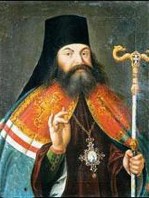
|
PROKOPOVYCH, TEOFAN, b 18 June 1681 in Kyiv, d 19 September 1736 in Saint Petersburg. Orthodox archbishop, writer, scholar, and philosopher. He graduated from Kyivan Mohyla Academy in 1696 and continued his education in Lithuania, Poland, and in Rome. In 1704 he returned to the Mohyla Academy to teach poetics, rhetoric, philosophy, and theology. He also served as prefect from 1708 and rector in 1711-16. He gained prominence as a writer and as a supporter of Hetman Ivan Mazepa. His most famous work, Vladimir, is dedicated to the hetman, whom he depicted as the figure of the Grand Prince of Kyiv. Following Mazepa's unsuccessful revolt against Tsar Peter I in 1709, however, Prokopovych denounced him and expressed his complete allegiance to Peter. He became a favorite of Peter's and was called to Saint Petersburg to be a preacher and adviser to the tsar. He was consecrated bishop (1718) and then archbishop (1720) of Pskov, was appointed vice-president of the new Holy Synod in 1721, and finally was made archbishop of Novgorod in 1725. In the 1720s Prokopovych played a crucial role in the reform of the Russian Orthodox church. He supported the liquidation of the position of patriarch and the creation of the Holy Synod under the direct authority of the tsar... |
| Teofan Prokopovych |
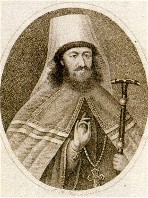
|
YAVORSKY, STEFAN, b 1658 in Yavoriv, Galicia, d 27 November 1722 in Moscow. Orthodox hierarch, theologian, poet, and philosopher. A graduate of Kyivan Mohyla College (ca 1684), he completed his education in Polish Jesuit colleges. After returning to Kyiv in 1687, he renounced Catholicism, became an Orthodox monk (1689), and taught rhetoric (1690), philosophy (1691-3), and theology (1693-8) at Kyivan Mohyla Academy. He was hegumen of Saint Nicholas's Monastery in Kyiv from 1697; in 1700 he was appointed metropolitan of Riazan and Murom in Muscovy, and on 1 December 1701, exarch in Moscow of the Russian Orthodox church, by Tsar Peter I. Yavorsky helped Peter to reform the church and education. Eventually his defense of church autonomy, criticism of Peter, opposition to Teofan Prokopovych, and intolerance of Protestantism cost him the tsar's favor. In 1712 he was forbidden to preach, and in 1718 he was forced to live in Saint Petersburg and subjected to constant harassment and political inquiry. In 1721 Peter appointed him president of the Holy Synod, an institution Yavorsky abhorred. Yavorsky's major work is the anti-Protestant dogmatic treatise Kamen' very ... (The Faith's Rock ...), written 1718 and published 1728... |
| Stefan Yavorsky |
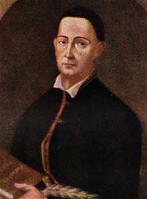
|
SKOVORODA, HRYHORII, b 3 December 1722 in Chornukhy, Lubny regiment, d 9 November 1794 in Pan-Ivanivka, Kharkiv vicegerency. Philosopher and poet. He was educated at Kyivan Mohyla Academy (1734-53, with two interruptions). He sang in Empress Elizabeth I's court Kapelle in Saint Petersburg (1741-4), served as music director at the Russian imperial mission in Tokai, Hungary (1745-50), and taught poetics at Pereiaslav College (1751). He resumed his studies at the Kyivan academy, but left after completing only two years of the four-year theology course. He later taught at Kharkiv College. After his dismissal from the college Skovoroda spent the rest of his life wandering about eastern Ukraine, particularly Slobidska Ukraine. Material support from friends enabled him to devote himself to reflection and writing. Although there is no sharp distinction between his literary and philosophical works, his collection of 30 verses titled The Garden of Divine Songs, his dozen or so songs, his 30 fables, and his letters, written mostly in Latin, are generally grouped under the former category. Some of his songs and poems became widely known and became part of Ukrainian folklore. His philosophical works consist of a treatise and 12 philosophical dialogues... |
| Hryhorii Skovoroda |
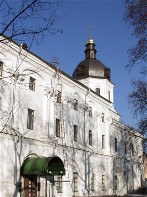
|
NATIONAL UNIVERSITY OF KYIV MOHYLA ACADEMY. A national coeducational research university in Kyiv. In 1991, by the ordinance of the head of the Supreme Council of Ukraine, the historical Kyivan Mohyla Academy was officially 'reestablished' on its 'historical territory as an independent institution of higher learning' under the name University of Kyiv-Mohyla Academy. The university was officially opened in August 1992, with literature specialist Viacheslav Briukhovetsky appointed as its 'organizing rector.' Briukhovetsky was the university's first elected president (acting from 1994 to 2007) and is generally considered to be the institution's 'founding father.' On 19 May 1994 by the decree of President Leonid Kravchuk, the university was granted the status of a national institution of higher learning and it assumed its present name. NaUKMA is a member of the European University Association. The teaching at the university is conducted both in Ukrainian and English. From its early days, the revived 'Kyivan Mohyla Academy' has firmly established itself as a leading university in Ukraine, patterned on North American academic models and generally considered the least corrupt of all classical universities in the country... |
| National University of Kyiv-Mohyla Academy |
The preparation, editing, and display of the IEU entries associated with the history and cultural legacy of Kyivan Mohyla Academy were made possible by the financial support of the CANADIAN FOUNDATION FOR UKRAINIAN STUDIES.
 VIII. THE UKRAINIAN MUSIC OF LATE BAROQUE AND CLASSICIST PERIODS
VIII. THE UKRAINIAN MUSIC OF LATE BAROQUE AND CLASSICIST PERIODS
The chief characteristics of Ukrainian religious music in the Middle Ages were a cappella singing and monophony. The melodies were recorded in a nonlinear notation, called znamenna, written in above the words of the liturgical services. In the 14th to 17th centuries the development of music in Ukraine was greatly influenced by church brotherhoods and their choirs. A significant innovation was the introduction of polyphonic singing, leading to the development of the five-line notation called kyivske znamia that replaced the non-linear notation. The 'musical grammar,' written by the musicologist and composer Mykola Dyletsky in 1675, was a complete description of the theory of polyphonic music. A favorite musical form of the time was the partesnyi concerto, an a cappella composition for choir, consisting of one movement written to a religious text. The 18th century witnessed a paradoxical situation in which Ukrainian music started to reach a higher level of maturity and sophistication that was ultimately absorbed by Russian musical development. The Kyivan Mohyla Academy had an orchestra and choir comprising up to 100 musicians and 300 singers. The Hlukhiv Singing School provided thorough education for future musicians. Cossack starshyna families supported musical ensembles, the most notable of which was a kapelle and orchestra found at the court of Hetman Kyrylo Rozumovsky. But the musical talents of Ukraine usually did not remain in Ukraine; they were being drawn into the developing Russian musical life on an ever-increasing scale. The start of this trend could be seen already in the late 17th century, when Dyletsky was summoned to Moscow by the tsar to teach the rudiments of polyphonic singing, and in the early 18th century with the appointment of Ivan Popovsky as the precentor of the imperial court choir (and his subsequent recruitment of singers from Ukraine). From that time on, the most talented graduates of the Hlukhiv school were routinely brought to Saint Petersburg to further their musical education. The outcome of these practices can be seen by the late 18th century, when a trio of the most talented Ukrainian musicians of the age--Maksym Berezovsky, Dmytro Bortniansky, and Artem Vedel--composed exceptional works that became commonly regarded as 'Russian' music in the West... Learn more about the Ukrainian music of the late Baroque and Classical periods by visiting the following entries:
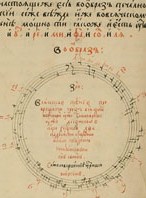
|
DYLETSKY, MYKOLA, b 1650? in Kyiv, d 1723? Music theoretician, composer, pedagogue. Dyletsky studied in Vilnius (1675) and worked for some time in Smolensk (1677), Kyiv, Moscow (1679), Saint Petersburg, Lviv, and Cracow. He was a master of polyphonic choral music. Among his works are compositions for four voices and eight voices, liturgical music, various motets, and canons. His most important theoretical work was Hramatyka muzykal'na (Musical Grammar), a textbook of polyphonic singing, which explains the fundamental theory of music, some principles of counterpoint, and the general rules of composition; it is illustrated by selections from the works of Dyletsky himself, M. Zamarevych, Ziuzka (probable pseudonym of either Lavrentii Zyzanii or Stepan Zyzanii), I. Koliada, M. Mylchevsky, Ye. Zakonnyk, and others. His theoretical views are augmented by comments on esthetics and on the educational value of music. The original text of the work, written in Vilnius in 1675, is not extant, but it exists in several variants and new redactions: 20 manuscript transcriptions are known...
|
| Mykola Dyletsky |
_s.jpg)
|
KYRYLO ROZUMOVSKY'S KAPELLE AND ORCHESTRA. A musical ensemble established in Hlukhiv in 1751 at the court of Hetman Kyrylo Rozumovsky. It was comprised of a fairly large choir and an orchestra that included a string section, a large woodwind section, and kettledrums. At its heyday, between 1752 and 1764, the kapelle employed over forty singers and musicians and represented one of the most accomplished musical ensembles in the Russian Empire. In 1753 Rozumovsky invited composer Andrii Rachynsky from Lviv to assume the post of kapelle's choirmaster. The kapelle and orchestra often took part in stagings of the works of opera and ballet together with the actors of Rozumovsky's theatrical troupe. Apart from that, they gave regular musical concerts, both of choral works and instrumental music, often featuring arrangements of Ukrainian folk songs that were particularly favored by Rozumovsky. Of special importance were concerts of sacred choral music, such as the choral concertos of Andrii Rachynsky, which were the first local compositions to introduce elements of the classicist style of music to Left-Bank Ukraine and the Russian Empire... |
| Kyrylo Rozumovsky's kapelle and orchestra |
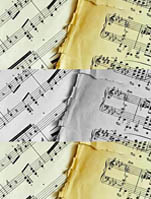
|
RACHYNSKY, ANDRII, b 24 November 1724 in Avhustiv (Velyki Mosty), Galicia, d ca 1800 in Novhorod-Siverskyi. Composer and conductor. A scion of a Galician noble family, Rachynsky studied at the Jesuit College in Lviv. Between 1749 and 1752, under Metropolitan Lev Sheptytsky, he conducted the metropolitan's kapelle at Saint George's Cathedral. In 1753 he was invited to work at the court of Hetman Kyrylo Rozumovsky in Hlukhiv. There, between 1753 and 1763, he conducted Kyrylo Rozumovsky's kapelle and orchestra, founded the Hlukhiv Music Library, and organized music education and music-cultural life in Hlukhiv and the Cossack Hetman state. He was also responsible for recruiting promising young singers from Ukraine for the court choir in Saint Petersburg. His choral compositions can be regarded as a transition between the baroque forms (partesnyi concerto) and classicism. These works include the sacred concerto Do Not Forsake Me in My Old Age, which likely inspired Maksym Berezovsky to compose his famous choral concerto of the same name. In fact, Rachynsky may have been Berezovsky's first music teacher in Hlukhiv.... |
| Andrii Rachynsky |
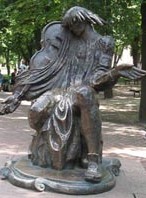
|
BEREZOVSKY, MAKSYM, b 27 October 1745 in Hlukhiv, d 2 April 1777 in Saint Petersburg. A prominent composer, one of the creators of the Ukrainian choral style in sacred music. Berezovsky likely sang with Kyrylo Rozumovsky's kapelle and orchestra in Hlukhiv under Andrii Rachynsky, from whom he learned the principles of composition in the classicist style. He moved to Saint Petersburg and from 1759 to 1760 performed as soloist with the Italian opera company in Oranienbaum near Saint Petersburg. From 1765 to 1774 he studied in Bologna, Italy, under Giovanni Battista Martini, and in 1771 gained the title of maestro di musica and became a member of the Bologna Philharmonic Academy. In 1775 he returned to Saint Petersburg, where, as a result of court intrigues, he committed suicide. Berezovsky was the first major representative of the early Classicist style in Ukrainian music. He was the composer of the opera Demofonte, a sonata for violin and harpsichord, and of a series of sacred works (including 12 concertos). The recent discovery of his unknown Symphony No. 11 indicates that he wrote a considerable number of other instrumental compositions... |
| Maksym Berezovsky |
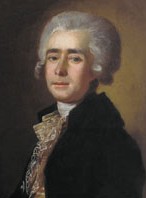
|
BORTNIANSKY, DMYTRO, b 1751 in Hlukhiv, d 10 October 1825 in Saint Petersburg. A prominent composer and conductor. After studying in the Hlukhiv Singing School, Bortniansky became a member of the court choir in Saint Petersburg in 1758. From 1769 to 1779 he studied in Italy, where he composed several operas to Italian librettos. Bortniansky also wrote liturgical works to Latin and German texts. On his return to Saint Petersburg he became a court composer, teacher, and conductor. During this period he composed his three French operas in 1786 and 1787. At the same time Bortniansky wrote a number of instrumental works (piano sonatas and a piano quintet with harp). In 1790 he wrote his Concerto-Symphony which for a long time (until the discovery of an earlier symphony by Maksym Berezovsky) was considered to be the first symphonic work composed in the Russian Empire. In 1796 he became the director of the court choir, which was composed mostly of Ukrainians and which he raised to a new level of excellence. During this period Bortniansky composed over 100 choral religious works... |
| Dmytro Bortniansky |
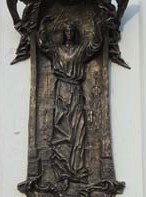
|
VEDEL, ARTEM, b 13 April 1767 in Kyiv, d 26 July 1808 in Kyiv. Composer, conductor, singer (tenor), violinist, and teacher. Educated at the Kyivan Mohyla Academy, Vedel worked briefly as a choirmaster in Moscow. In 1792 he returned to Kyiv to conduct a military choir. The period 1792-7 saw the height of his musical creativity and he composed most of his choral concertos and other works at that time. In 1797 Tsar Paul I prohibited the performances in churches of choral concertos or any other forms except for liturgical music. This prohibition proved particularly harmful to musical culture in Ukraine where choral concertos were particularly popular. Left without work, Vedel briefly joined the Kyivan Cave Monastery. He was banished to a mental asylum in 1799 after church authorities attributed to him some irreverent marginal notes scribbled in a religious book. The incarceration ended Vedel's creative work and led to his premature death. The publication and performance of his works were banned for over one hundred years after his death. Oleksander Koshyts was the first choirmaster to include Vedel's works in his choir's repertoire in the early 1900s... |
| Artem Vedel |
The preparation, editing, and display of the IEU entries featuring the Ukrainian music of the late Baroque and Classical periods were made possible by the financial support of the CANADIAN FOUNDATION FOR UKRAINIAN STUDIES.
 IX. THE TRADITION OF UKRAINIAN BOOK PUBLISHING
IX. THE TRADITION OF UKRAINIAN BOOK PUBLISHING
Books in manuscript form appeared in Ukraine with the coming of Christianity in the second half of the 10th century. By the end of the 11th century original books were produced in Kyivan Rus'. They were artistically transcribed in the monasteries, principally in Kyiv. However, the book production rapidly increased only after the invention of printing, although the industry still required manual labor, making large printings impossible for several centuries. The publishing of printed books was developed in Ukraine in the second half of the 16th century. The more noted publishers of the late 16th and the 17th centuries included Prince Kostiantyn Vasyl Ostrozky (the Ostroh Press; from the early 1580s), the Lviv Dormition Brotherhood (from 1586), Bishop Hedeon Balaban (the Striatyn Press), Mykhailo Slozka in Lviv, the Kyivan Cave Monastery (from 1617), Archbishop Lazar Baranovych in Novhorod-Siverskyi (from 1674), and others. Only at the beginning of the 19th century, when the manual press was replaced by the printing machine, did book printing become an important branch of industry. However, by the end of the 18th century, Ukrainian publishing houses declined because of bans imposed by the Russian government on printing Ukrainian books. The Valuev circular of 1863 and the Ems Ukase of 1876 made it virtually impossible for anything to be published in Ukrainian within the Russian Empire. Apart from individual exceptions, works by Ukrainian authors were published elsewhere, mostly in Austrian-ruled Lviv and by other emigre publishing houses, such as Mykhailo Drahomanov's Ukrainian Press in Geneva. In Austrian-ruled Galicia there were no government proscriptions to contend with. The first sporadic attempts at book publishing occurred in the 1830s. The Halytsko-Ruska Matytsia publishing house was established in 1848. The Prosvita society began to publish in 1877, and the Russophile Kachkovsky Society in 1874. The 1860s to 1880s saw the emergence of full-time periodicals, as well as of publishing houses of various political parties and educational organizations, such as the Ridna Skola society or the Shevchenko Scientific Society (NTSh)... Learn more about the tradition of Ukrainian book publishing by visiting the following entries:
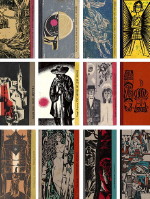
|
BOOK PUBLISHING. The first book in the modern Ukrainian language--Ivan Kotliarevsky's Eneida (Aeneid)--was printed in Saint Petersburg in 1798, and the first Ukrainian publication printed in Ukraine--Petro Hulak-Artemovsky's Solopii ta Khivriia--appeared in Kharkiv in 1819. By 1847 the works of Hryhorii Kvitka-Osnovianenko, Mykola Kostomarov, Kotliarevsky, and others (about 100 works in all) had been published in Kharkiv. From then on, however, the tsarist government imposed various restrictions and bans on Ukrainian publications. As a result, the number of books published in Ukrainian hardly increased: it rose from 3 in 1848 to 41 in 1862, and then fell to 5 by 1865 and 1870 as the result of Petr Valuev's circular. In 1875 the number rose to 30, only to fall again to 2 in 1877 as a result of the Ems Ukase. In 1880 not one Ukrainian-language book was published in Russian-ruled Ukraine. Given such repressive conditions under Russia, from the 1860s Galicia, and particularly Lviv, became increasingly the center of Ukrainian book publishing. As early as 1875 more books were published in Galicia than in Russian-ruled Ukraine. In 1894, 177 books were published in Galicia (136 in Lviv), compared to 30 in eastern and central Ukraine. After the Revolution of 1905 conditions under Russia eased somewhat, and, in 1913, 246 Ukrainian-language books were published. That same year 326 books appeared in Galicia (238 in Lviv). Thus, until the outbreak of the First World War, Galicia led Ukraine in the production of Ukrainian books. In Bukovyna books from Galicia were read, although in the 1870s local publishers began to produce general educational literature and belles lettres in Ukrainian...
|
| Book publishing |
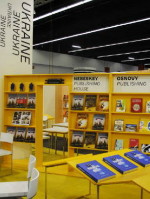
|
PUBLISHERS AND PUBLISHING. The Ukrainian-Ruthenian Publishing Company, established in 1899 under the direction of Mykhailo Hrushevsky, Ivan Franko, and Volodymyr Hnatiuk, played an important part in Galician publishing in the early 20th century. It issued many scholarly and popular works. The NTSh was also active at this time; it issued approximately 1,200 titles with reproductions. The Ukrainian struggle for independence (1917-20) revived publishing in Kyiv and other cities of central and eastern Ukraine in spite of adverse economic conditions. In central and eastern Ukraine 747 books were published in Ukrainian in 1917, and 1,084 in 1918, but only 665 in 1919 because of the invasion of Ukraine by the Russian White Army and Red Army. A completely new period in the history of Ukrainian book publishing began with the Soviet occupation of Ukraine and particularly in 1921, when the economy, including the book market, stabilized. By the mid-1920s all book production became concentrated in state publishing houses, mainly in the State Publishing House of Ukraine (DVU). Not only belles lettres but also books in every branch of science and technology were published on a large scale. A disproportionately high number of publications were devoted to political propaganda. During the years of Ukrainization the general production of books increased and the proportion of books in Ukrainian also increased, so that in 1930 it reached almost 80 percent. However, in the early 1930s, as a result of increasing government pressure, Ukraine's publishing industry was reorganized, the DVU was abolished, and the entire network of Soviet Ukrainian publishing houses was handed over to the central state publishing operation in Moscow... |
| Publishers and publishing |
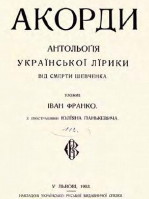
|
UKRAINIAN-RUTHENIAN PUBLISHING COMPANY. A publishing venture established as a joint stock company in 1899 in Lviv. Initiated by Mykhailo Hrushevsky, who also served as the first director, it published literary and scholarly works and literature in translation. The chief editors were Ivan Franko and Volodymyr Hnatiuk. In 1905 the company assumed responsibility for the publication of Literaturno-naukovyi vistnyk from the Shevchenko Scientific Society. From 1907 to 1918 the company was based in Kyiv. Renewed in 1922 in Lviv as the Ukrainian Publishing Company, it continued to function until 1932, but its output at that time was minimal and of relatively little importance. By 1917 the company had issued over 300 books in two major series. Its belletristic series included original and reprinted works by Volodymyr Vynnychenko, Mykhailo Kotsiubynsky, Olha Kobylianska, Les Martovych, Vasyl Stefanyk, Marko Cheremshyna, Ivan Franko, Ivan Nechui-Levytsky, Marko Vovchok, and Bohdan Lepky, and translations of William Shakespeare, George Byron, Heinrich Heine, Knut Hamsun, Emile Zola, Guy de Maupassant, Leo Tolstoy, Fyodor Dostoevsky, and others. Its popular-scholarly series included primarily translations of historical, sociological, and philosophical works... |
| Ukrainian-Ruthenian Publishing Company |
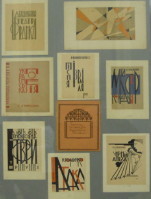
|
STATE PUBLISHING HOUSE OF UKRAINE (DVU). The official publishing house of the Soviet Ukrainian state, founded by the All-Ukrainian Central Executive Committee in Kharkiv in May 1919. In the second half of the 1920s, DVU was the largest and most important publisher in Soviet Ukraine--it produced over half of all its books--and the second-largest publisher in the USSR. It played a major role in the implementation of the Ukrainization policy by publishing several hundred schoolbooks; several series of Ukrainian literary classics; works by contemporary Soviet Ukrainian authors; translations of European classics; political propaganda; sociopolitical, technical, and children's books; and 38 periodicals, including the literary journals Chervonyi shliakh, Zhyttia i revoliutsiia, Literaturnyi iarmarok, Nova generatsiia, and others. It also ran a Central Bibliographic Division (it became part of the Book Chamber of the Ukrainian SSR in 1922) and a network of 28 okruha branches, 75 bookstores, 15 kiosks, and 73 agencies. Its editorial staff included prominent writers, such as Mykola Khvylovy, Mykola Kulish, Petro Panch, Volodymyr Svidzinsky, and Pavlo Tychyna. From 1926 DVU came under increasing state control; in that year it was ordered by the CP(B)U Politburo to prepare and publish a scholarly edition of Vladimir Lenin's works and to increase its output of political propaganda for the masses. In the period 1920-8 DVU published 6,624 titles with a combined pressrun of 81,471,000; 4,487 of the titles were in Ukrainian and had a pressrun of 63,254,000 copies. In August 1930 DVU was replaced by the State Publishing Alliance of Ukraine (DVOU), and abolished in March 1934... |
| State Publishing House of Ukraine |
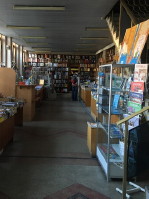
|
NAUKOVA DUMKA. The publishing house of the National Academy of Sciences of Ukraine in Kyiv. Founded in 1922 as part of the Editorial-Publishing Commission of the All-Ukrainian Academy of Sciences (VUAN), in 1927 it became the Publishing House of the VUAN. In 1964 it assumed its present name. The most important scholarly and academic publishing house in Ukraine, each year it has issued numerous monographs in the humanities and social, technical, and pure sciences; journals (52 in 1989); and serial publications (81 in 1989). It has released many important publications, including the history of Ukrainian literature (8 vols, 1967-71); a major Ukrainian dictionary (11 vols, 1970-80); academic editions of the collected works of Taras Shevchenko and Ivan Franko; Fauna Ukrainy (40 vols, 1956-), and many others. During the Soviet period, officially, as the publishing house of the Academy of Sciences of the Ukrainian SSR, Naukova Dumka was not subject to the usual Soviet censorship. In practice this meant little, and works issued by it generally conformed to the Party line and official dictates on scholarship. In the decades preceding the 1980s it was subject to increasing Russification, and most of its publications, especially in the natural and applied sciences, appeared in Russian. In the 1980s it published approximately 700 titles each year. The situation in the Naukova Dumka changed significantly with the lifting of censorship following the proclamation of Ukraine's independence in 1991. At the same time, with considerably limited funding, the publishing house greatly reduced the number of its publications... |
| Naukova Dumka |
_s.jpg)
|
MUSEUM OF THE BOOK AND PRINTING IN UKRAINE. A state museum established in Kyiv in 1972 (International Year of the Book), as the State Museum of the Book and Book Printing, and opened to the public in 1975. A precursor to the museum, the Museum of Ukrainian Writing and Printing, was founded in 1924 and shut down by the Stalinist authorities in 1934. The museum is housed on the grounds of the National Kyivan Cave Historical-Cultural Preserve in a former building of the Kyivan Cave Monastery Press that was built in the early 17th century. The museum's collection contains some 56,000 items. Its approximately 3,000 exhibits in five halls chronicle the development of book writing, printing and book publishing in Ukraine. Facsimiles and original copies of rare medieval manuscripts, old printed books, and incunabula, examples of early and modern printing technology, first editions of 19th- and 20th-century Ukrainian books and other publications, and original book illustrations and bookplates are on display. An illustrated guidebook to the museum was published in 1981. Rare books printed by the Kyivan Cave Monastery Press, Ostroh Press, Lviv Dormition Brotherhood Press, Chernihiv Press, Striatyn Press, and other presses are on display. A new exhibition of bookplate art (over 1,000 works by more than 200 artists, including Heorhii Narbut, Olena Kulchytska, Yaroslava Muzyka, and Stefaniia Gebus-Baranetska) was opened in 1987... |
| Museum of the Book and Printing of Ukraine |
The preparation, editing, and display of the IEU entries about the tradition of Ukrainian book publishing were made possible by the financial support of the CANADIAN FOUNDATION FOR UKRAINIAN STUDIES.
 X. THE HISTORY OF HIGHER EDUCATION IN UKRAINE
X. THE HISTORY OF HIGHER EDUCATION IN UKRAINE
The origin of higher education in Ukraine can be traced back to the confessional colleges that arose in the period of religious strife (16th-17th century). The colleges organized by the Jesuits served as a model for similar Orthodox and later Uniate (Greek-Catholic) schools. According to their standard curriculum, which consisted of three lower grades (infima, grammar, and syntax) and two intermediate grades (poetics and rhetoric) and required six years to complete, these schools were institutions of secondary education. Yet some of them offered courses belonging to the higher grades (philosophy, requiring three years, and theology, requiring four years) that were typical of academies. The Jesuits established a number of such higher colleges in Ukrainian and Belarusian territories: in Vilnius (est 1570, academy from 1578), Lviv (1608), Brest (first quarter of the 17th century), etc. A full higher education could be obtained by Ukrainians only at the Jesuit-run academy in Lviv (1661-1763), Vilnius, Zamosc (Zamostia Academy), or Cracow. Despite its name, the Ostroh Academy (est ca 1580 by the Orthodox Prince Kostiantyn Vasyl Ostrozky) did not offer a higher education. The only Orthodox college that provided a partial higher education was the Kyivan Mohyla College (est 1632). In spite of a royal prohibition (1635), philosophy and theology courses were offered at the school on an irregular basis until philosophy and theology grades were permanently established as part of the curriculum in the 1680s. It was only in 1701 that the school was recognized officially as an academy: the Kyivan Mohyla Academy. Among the numerous Uniate colleges run by the Basilian monastic order only a few--in Zhyrovichy, Buchach, and Volodymyr-Volynskyi--introduced some courses of the higher grades in the 18th century... Learn more about the history of higher education in Ukraine by visiting the following entries:
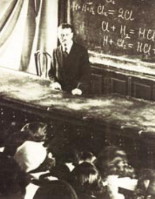
|
HIGHER EDUCATION. The first university in Ukraine--Lviv University--was founded in 1784. The language of instruction was Latin, but literary Ukrainian (Ruthenian) of the period was used in the Studium Ruthenum, a special institute of the university for educating candidates for the Uniate (Greek-Catholic) priesthood. The German character of the university was underlined when German was adopted as the language of instruction in 1817. In Russian-ruled Ukraine a number of university projects were drawn up in the 18th century. Hetman Kyrylo Rozumovsky in 1760 proposed to establish a university in Baturyn. Under Catherine II Ukrainian deputies to the Legislative Commission of 1767-9 demanded that a university be founded in Kyiv or Pereiaslav. The nobility of the Sumy and Chernihiv regions collected funds to build universities in their respective capitals. Prince Grigorii Potemkin fostered a plan to open a university in Katerynoslav. The first university in Russian-ruled Ukraine was finally established in Kharkiv in 1805. The project proposed by Vasyl Karazyn became a reality as a result of the generosity of the local nobility. Although the language of instruction was Russian, as in all higher schools in Russian-ruled Ukraine, the university became the home of the Kharkiv Romantic School and played an important role in the Ukrainian national awakening in the 19th century. In 1820 the Bezborodko Gymnasium of Higher Education, later known as the Nizhyn Lyceum, was opened in Nizhyn. Its nine-year program was more demanding than that of a secondary level and compared favorably with that offered by Russian universities... |
| Higher Education |

|
KYIVAN MOHYLA ACADEMY. The leading center of higher education in 17th- and 18th-century Ukraine, which exerted a significant intellectual influence over the entire Orthodox world at the time. Established in 1632 by Petro Mohyla through the merger of the Kyiv Epiphany Brotherhood School with the Kyivan Cave Monastery School, the new school was conceived by its founder as an academy, ie, an institution of higher learning offering philosophy and theology courses. Completing the Orthodox school system, it was to compete on an equal footing with Polish academies run by the Jesuits. Fearing such competition, King Wladyslaw IV Vasa granted the school the status of a mere college, and prohibited it from teaching philosophy and theology. It was only in 1694 that the Kyivan Mohyla College was granted the full privileges of an academy, and only in 1701 that it was recognized officially as an academy by Peter I. In founding the school, Petro Mohyla's purpose was to master the intellectual skills and learning of contemporary Europe and to apply them to the defense of the Orthodox faith. Taking his most dangerous adversary as the model, he adopted the organizational structure, the teaching methods, and the curriculum of the Jesuit schools. Unlike other Orthodox schools, which emphasized Church Slavonic and Greek, Mohyla's college gave primacy to Latin and Polish. From its beginnings, the academy had close ties with the Cossack starshyna, which provided it with moral and material support. Many of the most accomplished Ukrainian authors and churchmen of the time served on the school's faculty...
|
| Kyivan Mohyla Academy |
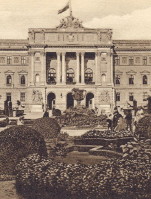
|
LVIV UNIVERSITY. The oldest university in Ukraine, established in 1784 by the emperor of Austria Joseph II with Latin as the language of instruction. Candidates for the priesthood who knew no Latin could study in the vernacular, but only after the establishment of the Studium Ruthenum in 1787. In 1805 the university was transformed into a lyceum, and in 1817 the university status was restored and German became the language of instruction. During the Revolution of 1848-9 in the Habsburg monarchy, demands were raised for the introduction of the Ukrainian and Polish languages. In 1849 the chair of Ukrainian language and literature was established (first held by Yakiv Holovatsky). Ukrainian-language instruction was introduced in the second half of the 19th century, first in the Department of Theology and then of Law (1862-72). From 1867 the struggle for the language and character of the university began between Ukrainians and Poles. In 1871 all restrictions in teaching in either Ukrainian or Polish were abolished and it was ordered that only people with the command of either of the two languages could occupy university chairs. In 1879 Polish became the administrative language at the university, and the appointment of Ukrainians to docent positions was obstructed. In 1894 the Chair of Ukrainian History was established and given to Mykhailo Hrushevsky. In 1900 a separate Chair of Ukrainian Literature was added... |
| Lviv University |
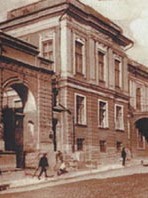
|
KHARKIV UNIVERSITY. The first university in Russian-ruled Ukrainian territory. It was founded in 1805 on the initiative of Vasyl Karazyn, and with the financial support of the local nobility, burghers, and the municipal council. The university enjoyed a broad autonomy: its highest governing body was the Professorial Council, which elected the rector and all the professors. During the first decade the faculty consisted mostly of foreign scholars, the majority of whom were German. During the 19th century the university consisted of four faculties: physics-mathematics, history-philology, law, and medicine. The first periodicals in eastern Ukraine, including Ukrainskii vestnik (1816-19), and Ukrainskii zhurnal (1824-5), were published by cultural circles closely connected with the university. In the 1830s a number of professors and students of Kharkiv University formed a literary group known as the Kharkiv Romantic School. Until 1832 the university oversaw the whole educational system in Slobidska Ukraine. In the first 30 years of its existence Kharkiv University was an important cultural force in Ukraine. It introduced Western ideas and trends and recognized the cultural significance of Ukrainian folklore. Its cultural role declined as the university's autonomy was abolished. In 1835 a new charter strengthened the power of the centralized bureaucracy. A government-approved curator and rector were put in charge of the university. By 1848 all publications and even lectures were subjected to censorship. Scholars were prohibited from traveling abroad... |
| Kharkiv University |
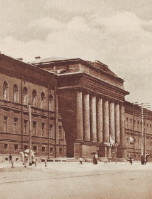
|
KYIV UNIVERSITY. Opened in 1834, it was the second university (after Kharkiv University) to be established in Russian-ruled Ukraine. Several requests from the local nobility for a university in Kyiv, dating back to 1765, were turned down by the imperial government, which until 1831 accepted the dominance of Polish culture in Right-Bank Ukraine and in 1803 even had established a Polish school system there. The Polish Insurrection of 1830-1 convinced Nicholas I that Right-Bank Ukraine had to be Russified, and to accomplish this the existing school system had to be replaced with a Russian one supervised from Kyiv. Thus, Kyiv University was established to oversee the new educational system. The university was named after Saint Vladimir (Volodymyr the Great) and consisted, initially, of only one faculty--the philosophy faculty--which was subdivided into two departments--history and philology, and physics and mathematics. The university's autonomy was restricted: professors and faculty dean selected by the Professorial Council had to be approved by the minister of education, the elected rector had to be approved by the tsar, and the appointed curator of the school district kept a close watch over university affairs. The first rector was a Ukrainian scholar, Mykhailo Maksymovych, but most of the professors were Poles. Until the 1860s Poles from the Right-Bank Ukraine formed a majority of the student body, followed by Ukrainians from Left-Bank Ukraine. Although the university was intended to be an instrument of Russification, it became a center of revolutionary activity and national awakening... |
| Kyiv University |
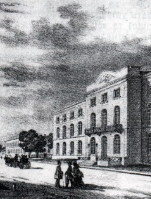
|
ODESA UNIVERSITY. It was opened in 1865 as New Russia University on the basis of the Richelieu Lyceum, on the initiative of Nikolai Pirogov, the head of the Odesa school district. The tsarist officials initially opposed the founding of a university in Odesa, since they considered the city to be a hotbed of unrest, and offered instead Mykolaiv as a site. Under pressure from the local nobility and merchants, Tsar Alexander II granted the lyceum university status on 10 June 1862. New Russia University initially had three faculties, history and philology, physics and mathematics, and law. The initial enrollment was 175 students; by 1880 there were 346 students and 45 professors. Almost half of the students were children of the clergy; 70 percent of the students received either scholarships or bursaries. Most of the students came from Southern Ukraine, the Don region, or Caucasia, although the school also attracted students from the Slavic countries in the Balkans. All instruction was in Russian, although in 1906 there was an attempt to initiate a Ukrainian history course to be offered in Ukrainian by Oleksander Hrushevsky. During the Ukrainian struggle for independence (1917-20) attempts were made to Ukrainianize the university. Under Soviet rule New Russia University was dissolved, and the various faculties were separated from the university to form research institutes in 1920. Later that year most of these institutes were combined to form the Odesa Institute of People's Education. In 1933 several other institutes were merged again, to form Odesa University... |
| Odesa University |
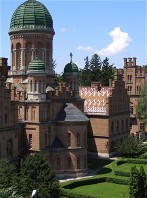
|
CHERNIVTSI UNIVERSITY. The university was founded in 1875, succeeding the Chernivtsi Higher Theological School, which had existed since 1827. Until 1918 it was known as Franz-Josefs Universitat, with German as the language of instruction and separate departments of Ukrainian and Romanian language and literature. From 1919 to 1940 it was the Universitatea Regele Carol i din Cernauti, with instruction in Romanian, and in 1940 it became the Chernivtsi State University, with instruction in Ukrainian. Public efforts to rename the university in honor of Yurii Fedkovych, led by the literary scholar Yevhen Kyryliuk, for many years did not gain the consent of the Soviet authorities, but in 1989 Fedkovych finally became the university's patron. During the Austrian period Chernivtsi University had three faculties: Orthodox theology, law, and philosophy. The department of Ukrainian language and literature was in the faculty of philosophy. In this period the university was attended not only by Bukovynians, but also by many Galician students, among whom were Ivan Franko and Les Martovych. Ukrainian students constituted, on the average, about 20-25 percent of students enrolled. There were about as many Romanians, with the majority of students being Jewish or German. In 1918-40 Chernivtsi University was Romanianized: the Ukrainian departments were dissolved, and the Ukrainian professors dismissed. In 1940 northern Bukovyna was annexed to the Ukrainian SSR, and Ukrainian became the language of instruction at Chernivtsi University... |
| Chernivtsi University |
The preparation, editing, and display of the IEU entries about the history of higher education in Ukraine were made possible by the financial support of the CANADIAN FOUNDATION FOR UKRAINIAN STUDIES.
 XI. HIGHER COLLEGES AND LYCEUMS IN 18TH- AND 19TH-CENTURY UKRAINE
XI. HIGHER COLLEGES AND LYCEUMS IN 18TH- AND 19TH-CENTURY UKRAINE
While the Kyivan Mohyla Academy was undoubtedly the leading center of higher education in 17th- and 18th-century Ukraine and it exerted a significant intellectual influence over the entire Orthodox world at the time, a number of lesser educational institutions played an essential role in educating Ukrainian elites on local levels, but also in broader socio-cultural contexts. In an educational system of the Cossack Hetman state, and later in Russian-ruled Ukraine, in which there was often no clear distinction bewteen lower, middle, and higher schools, the three Orthodox colleges--the Chernihiv College, Kharkiv College, and Pereiaslav College, which functioned in the 18th and early 19th century--were particularly important, as they combined in their curriculum elements of upper secondary education and higher education. At the same time, in Right-Bank Ukraine, among the numerous Uniate colleges run by the Basilian monastic order only a few--in Zhyrovichy, Buchach, and Volodymyr (in Volhynia)--introduced some courses of the higher grades in the 18th century. Later, in the 19th century, when first universities appeared in Russian-ruled Ukraine, the higher secondary education remained, nonetheless, vitally important. In 1820 the Bezborodko Gymnasium of Higher Education, later known as the Nizhyn Lyceum, was opened in Nizhyn in the Chernihiv region. Its nine-year study program was considerably more demanding than that of a secondary level and compared favorably with that offered by most Russian universities. A comparable institution in Right-Bank Ukraine, the Kremenets Lyceum, was focused primarily on educating members of the Polish nobility. In the second half of the 19th century, in spite of heavy restrictions placed by the imperial Russian system on the Ukrainian national life, certain new institutions, such as the Galagan College in Kyiv, began to play a key role in the process of fostering a new nationally-conscious Ukrainian intellectual stratum... Learn more about higher colleges and lyceums in Ukraine in the 18th and 19th centuries by visiting the following entries:
_s.jpg)
|
CHERNIHIV COLLEGE. An educational institution in Chernihiv that functioned in the 18th and early 19th centuries and combined elements of upper secondary education and higher education. The first official mention of the college is found in a 1694 charter. The college's growth in the early 18th century was substantially promoted by the Archbishop of Chernihiv Ioan Maksymovych. The institution benefitted from the support of a wide circle of patrons, and in particular Hetman Ivan Mazepa. In Zertsalo ot Pisaniia Bozhestvennoho, a book edited by the college's superintendent Antonii Stakhovsky and published in 1705, there is a special dedication to Mazepa stressing the part he played in the construction of the school. The college, whose teaching practices were patterned on those of the Kyivan Mohyla Academy--which, in their turn, replicated, to a large extent, the system implemented in Jesuit colleges (Ratio Studiorum)--enrolled students of various social estates. During the first decades of its existence, the college's student body numbered around 200; by the end of the 18th century it grew to its historical maximum of over 700...
|
| Chernihiv College |
_s.jpg)
|
KHARKIV COLLEGE. Founded in 1722 in Belgorod as a Slavo-Latin school by Bishop Yepyfanii Tykhorsky, the college was relocated to Kharkiv in 1726. At Tykhorsky's request, the neighboring Church of the Holy Protection of the Mother of God was appended to the school, whereupon this complex became known as the Scholastic Monastery of the Holy Protection. It was directed by an archimandrite who concurrently held the office of the rector at the school. In his efforts to expand the school's privileges, Tykhorsky appealed to the imperial authorities and obtained a letters patent according to which Kharkiv College was permitted to enrol pupils from different estates and was granted the right to instruct them in poetics, rhetoric, philosophy, and theology, as well as to carry out legal proceedings against both its teachers and students. Together with the Kyivan Mohyla Academy, Kharkiv College (sometimes called an academy in the official documents from the 1740s on) was an important centre for the education of Ukrainian clerical and secular elite, especially for the eastern Ukrainian lands, until the end of the 18th century... |
| Kharkiv College |
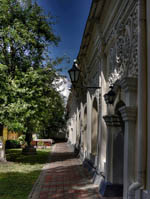
|
PEREIASLAV COLLEGE. Founded in 1738 by Bishop Arsenii Berlo of Pereiaslav, the college was initially housed in a wooden building within the premises of the Ascension Monastery before it was moved into a larger brick building in 1753. The curricullum at Pereiaslav College followed the patterns typical of the Kyivan Mohyla Academy and foresaw the pupils' consecutive mastering of grammar, poetics, rhetoric, philosophy, and theology. Hryhorii Skovoroda taught classes in poetics in the college during the 1753-54 academic year. In the second half of the 18th century, the list of subjects taught in the classes of poetics and rhetoric was expanded to include history, geography, mathematics, Russian, and Ancient Greek (from 1784). Instruction in philosophy, following the Leibnizian-Wolffian system, was introduced in 1773. Theology was added to the curriculum in 1781, with Varlaam Shyshatsky serving as the first professor of theology at the college. The college possessed a separate house that served as a bursa for students, which was described by the writer Vasyl Narizhny in his autobiographical short novel Bursak (The Bursa Resident, 1824)... |
| Pereiaslav College |
 (19th century)_s.jpg)
|
NIZHYN LYCEUM. One of the older institutions of higher learning in Ukraine. Founded in Nizhyn as the Bezborodko Gymnasium of Higher Education in 1820 with an endowment of 210,000 rubles from Count Illia Bezborodko, it emphasized humanities and was initially a gymnasium for the sons of the gentry. Its nine-year program offered a classical education with instruction in religion, classical and modern languages, geography, history, physics and mathematics, political economy, military science, and the arts. The first director was Vasyl Kukolnyk. By 1832 the gymnasium had graduated over 100 students, including the writers Mykola Hohol (Nikolai Gogol) and Yevhen Hrebinka and the jurist Vasyl Tarnovsky. In 1832 the gymnasium was transformed into a technical (physico-mathematical) lyceum for the training of military officers, and in 1840 it became a law school preparing officials for the juridical bureaucracy. After the Revolution of 1917 the institute was transformed into Nizhyn Institute of People's Education (1922) and then Nizhyn Pedagogical Institute (1934). Today it functions as Nizhyn State University... |
| Nizhyn Lyceum |
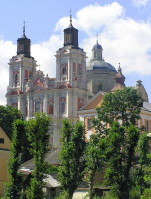
|
KREMENETS LYCEUM. A Polish higher school in Kremenets, formed in 1819 out of the local gymnasium, which had been established in 1805 by Tadeusz Czacki to serve as a university for the young nobles of the Kyiv region, Podilia, and Volhynia. The reorganization of the school into a lyceum did not entail any significant change in its program. It offered a general education consisting of four one-year grades (languages, mathematics, geography, calligraphy) and three upper two-year grades (languages, theology, history, algebra, geometry, trigonometry, botany, physics, chemistry, mineralogy, civil architecture, and technology). Besides Polish, which was the language of instruction, Russian, Latin, and German were taught (English and Greek were optional). Most of the students were Poles: in 1821 only 34 of the 600 enrolled students were Ukrainian. Because many of the lyceum students took part in the Polish Insurrection of 1830-1, the authorities closed the school and in 1832 transferred its library, collections, and faculty to Kyiv, where they became the foundation on which Kyiv University was established... |
| Kremenets Lyceum |
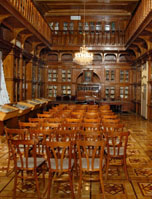
|
GALAGAN COLLEGE. A private preparatory boarding school for boys in Kyiv founded on 1 October 1871 by Hryhorii Galagan in memory of his deceased son Pavlo. Initially patterned on English colleges, it was funded from Galagan's private capitals (1,120,000 roubles in total were spent during his lifetime). Thanks to Galagan's friendship with Kyiv governor-general and his wide experience as a patron of education, the newly-founded college received its own statute safeguarding its wide-ranging autonomy in designing its curriculum, choosing teaching methods, and recruiting its staff. Owing to the Ukrainophile sympathies of its founder--an amateur ethnographer and enthusiastic supporter of local artists, teachers, and scholars--the college became one of the most significant centers of Ukrainian culture and education in Russian-ruled Ukraine. In the words of Ahatanhel Krymsky, the college's famous graduate, the school 'was considered to be a hotbed of Ukrainianism,' whose objective was 'to educate the Ukrainian intelligentsia regardless of class divides, whereby all aristocrats and plebeians could be united in the single nation...' |
| Galagan College |
The preparation, editing, and display of IEU articles about higher colleges and lyceums in Ukraine in the 18th and 19th centuries were made possible by the financial support of the CANADIAN FOUNDATION FOR UKRAINIAN STUDIES.
 XII. THE FOUNDERS OF MODERN UKRAINIAN HISTORIOGRAPHY IN THE 19TH CENTURY
XII. THE FOUNDERS OF MODERN UKRAINIAN HISTORIOGRAPHY IN THE 19TH CENTURY
The founders of modern Ukrainian historiography in the first half of the 19th century, in essence, continued the autonomist traditions of history writing established by the elite of the Cossack Hetman state. Such historians as Dmytro Bantysh-Kamensky and Mykola Markevych's wrote general systematic surveys of the history of Ukraine from ancient times to the end of the 18th century that concentrated on the Cossack-Hetman period. Under the influence of Romanticism, later Ukrainian historians focused their attention on the history and life of the common people. This infatuation with the folk (narodnist) eventually developed into an identification with the socially and economically downtrodden masses and had a profound influence on the evolution of the sense of modern Ukrainian identity. Studied at first as an object of history, the 'people' was eventually viewed as the principal agent of historical development. With some exceptions, Ukrainian historiography of the middle and second half of the 19th century is dominated by the populist school, whose influence extended into the early decades of the 20th century. It found its most vivid expression in the works of Mykhailo Maksymovych, Mykola Kostomarov, Panteleimon Kulish, Oleksander Lazarevsky, and Volodymyr Antonovych... Learn more about the founder of modern Ukrainian historiography by visiting the following entries:
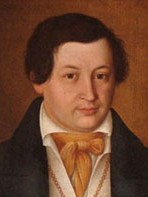
|
MARKEVYCH, MYKOLA, b 7 February 1804 in Dunaiets, Chernihiv gubernia, d 21 June 1860 in Turivka, Poltava gubernia. Historian, ethnographer, poet, musician, and composer. He studied in Saint Petersburg at the boarding school of the Pedagogical Institute (1817-20) and later studied piano and composition in Moscow. Markevych was close to the literary circles of the Decembrist movement. From 1830 he lived on his estate in Turivka and collected materials on the history of Ukraine and Ukrainian folklore and folk songs. The then unpublished Istoriia Rusov had a significant impact on Markevych's major work, the five-volume Istoriia Malorossii (History of Little Russia), published in Moscow in 1842-3. In his monograph Markevych approached the history of Ukraine as an independent, uninterrupted process from earliest times to the late 18th century. Markevych's history greatly influenced 19th-century Ukrainian historiography and his Romantic contemporaries, particularly his friend Taras Shevchenko... |
| Mykola Markevych |
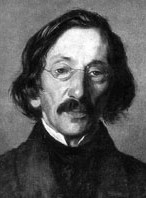
|
MAKSYMOVYCH, MYKHAILO, b 15 September 1804 at the Tymkivshchyna estate, Poltava gubernia, d 22 November 1873 at the Mykhailova Hora estate, Poltava gubernia. Historian, philologist, ethnographer, botanist, and poet. In 1832 he concluded his studies at Moscow University, and remained at the university for further academic work. In 1834 he was appointed professor of Russian folk literature at Kyiv University, and that year he became the university's first rector, a post he held until 1835. Maksymovych's learning was of encyclopedic dimensions and covered an unusually wide range, from botany to history. As a historian, Maksymovych adhered to the then-popular ideas of Romanticism and identification with the peasant ethnos. He defended the theory of the organic link between the Princely era of Kyivan Rus' and Cossack era in Ukrainian history, to which he devoted much research and many articles, critical notes on sources, and other writings. His research was very significant for the development of Ukrainian historiography... |
| Mykhailo Maksymovych |
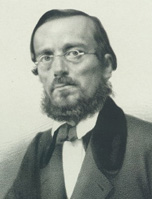
|
KOSTOMAROV, MYKOLA, b 16 May 1817 in Yurasivka, Voronezh region, d 19 April 1885 in Saint Petersburg. Historian, publicist, and writer. He graduated from Kharkiv University in 1837. In 1846 he was appointed assistant professor at Kyiv University. That year, along with Vasyl Bilozersky, Panteleimon Kulish, Mykola Hulak, Taras Shevchenko, and others, he formed the Cyril and Methodius Brotherhood. In 1847 he was arrested along with all the other members of the society and sentenced to one year's imprisonment, followed by exile. Kostomarov wrote a number of fundamental works on the history of Ukraine in the 16th-18th centuries. He was the founder of the populist trend in Ukrainian historiography. In his historicophilosophical studies as well as in his historical monographs, Kostomarov argued for the national distinctiveness of the Ukrainian people and the uniqueness of their historial development, which, unlike for the Poles and Russians, was manifested in the Ukrainian freedom-loving, democratic, and individualistic spirit... |
| Mykola Kostomarov |
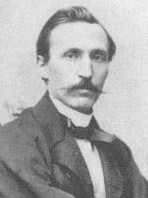
|
KULISH, PANTELEIMON, b 8 August 1819 in Voronizh, Chernihiv gubernia, d 14 February 1897 in Motronivka, Chernihiv gubernia. In 1843-5 Kulish taught in Kyiv and studied Ukrainian history and ethnography. There he befriended Taras Shevchenko, Mykola Kostomarov, and Vasyl Bilozersky; their circle later became the nucleus of the secret Cyril and Methodius Brotherhood. In 1847 he was arrested by the tsarist police for belonging to the Brotherhood, imprisoned and then exiled. Because his main offence had been writing a 'Tale of the Ukrainian People,' Kulish was forbidden to write. In 1856 he established a Ukrainian printing press in Saint Petersburg and issued two splendid volumes of Zapiski o Iuzhnoi Rusi (Notes on Southern Rus'), a rich collection of Ukrainian folklore, ethnography, and literature in which he introduced a new orthography. Much of his time he devoted to the study of Ukrainian history, particularly of the Cossack period. His earlier romantic view of the Cossacks gave way to a new and very critical appraisal of them... |
| Panteleimon Kulish |
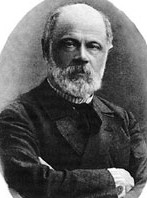
|
LAZAREVSKY, OLEKSANDER, b 20 June 1834 in Hyrivka, Chernihiv gubernia, d 13 April 1902 in Pidlypne, Chernihiv gubernia. Historian. He graduated in 1858 from Saint Petersburg University. In the mid-1860s he researched the socioeconomic and cultural history of Left-Bank Ukraine during the 17th and 18th centuries. He wrote a fundamental study of the peasantry and articles about the Cossack starshyna and nobility. He made an outstanding contribution to the history of colonization, administration, and land tenure in Opisanie Staroi Malorossii (A Description of Old Little Russia, 3 vols). Lazarevsky's approach to history was based on his populist ideas. He emphasized the exploitation of peasants by the Cossack starshyna and regarded the Hetman state and its leading figures with disapproval. But he treated fairly those Ukrainian nobles who made a contribution to Ukrainian culture. He paid little attention to the disastrous influence of Russian policy in Ukraine, but Ukrainian historians noted the one-sidedness without denying his enormous contribution... |
| Oleksander Lazarevsky |
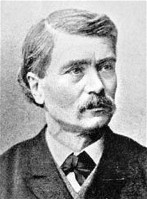
|
ANTONOVYCH, VOLODYMYR, b 18 January 1834 in Makhnivka, Kyiv gubernia, d 21 March 1908 in Kyiv. Historian, archeographer, archeologist, professor of history at Kyiv University from 1878, editor in chief of the publications of the Kyiv Archeographic Commission, patron and head (from 1881) of the Historical Society of Nestor the Chronicler in Kyiv, and head of the Hromada of Kyiv. Antonovych was a major representative of the populist school in Ukrainian historiography. He founded the so-called Kyivan school of historians, which consisted of his students at Kyiv University (among them Mykhailo Hrushevsky), who later laid the foundations of modern Ukrainian historiography. In his writings Antonovych avoided synthetic theories and concentrated on documentary research. Only in his more popular lectures did Antonovych give a general survey of Ukrainian history from the origin of the Cossacks. For almost half a century Antonovych played a leading role in Ukrainian civic and political life. He wrote over 300 scholarly studies... |
| Volodymyr Antonovych |
The preparation, editing, and display of the IEU entries featuring the founders of modern Ukrainian historiography in the first half of the 19th century were made possible by the financial support of the CANADIAN FOUNDATION FOR UKRAINIAN STUDIES.
 XIII. THE HROMADA MOVEMENT AND THE DEVELOPMENT OF UKRAINIAN NATIONAL CONSCIOUSNESS
XIII. THE HROMADA MOVEMENT AND THE DEVELOPMENT OF UKRAINIAN NATIONAL CONSCIOUSNESS
The hromada movement, which originated in the Russian Empire in the late 1850s, played a decisive role in the Ukrainian national revival and the development of Ukrainian national consciousness in the 19th century. Because of police persecution and the mobility of their members, most hromadas existed for only a few years. Members differed in political conviction; what united them was a love for the Ukrainian language and traditions and the desire to serve the people. The general aims of the hromadas were to instill through self-education a sense of national identity in their members and to improve through popular education the living standard of the peasant masses. Members were encouraged to use Ukrainian and to study Ukrainian history, folklore, and language. Each hromada maintained a small library of illegal books and journals from abroad for the use of its members. The larger hromadas organized drama groups and choirs, and staged Ukrainian plays and concerts for the public. The hromadas were active in the Sunday-school movement: they financed and staffed schools and prepared textbooks. Avoiding contacts with revolutionary circles, the hromadas regarded their own activities as strictly cultural and educational. However, in the 1880s, under pressure from younger members, these societies gradually became involved in some political activity as well. The Polish Insurrection of 1863-4 led to a strong anti-Ukrainian campaign in the Russian press and to repressive measures by the government. Petr Valuev's secret circular prohibited the publication of Ukrainian books for the peasants. Ukrainian Sunday schools were closed down, and some leading hromada activists were subjected to persecution and administrative banishment. These measures disrupted the activities of the hromadas for a number of years. However, at the end of the 19th century efforts were made to co-ordinate the activities of the widely dispersed hromadas. At the initiative of Volodymyr Antonovych and Oleksander Konysky, a conference of members of various hromadas was held in Kyiv in 1897, and the General Ukrainian Non-Party Democratic Organization was established... Learn more about the hromada movement and its legacy by visiting the following entries:
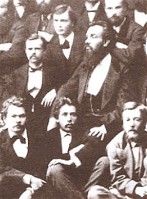
|
HROMADAS. Clandestine societies of Ukrainian intelligentsia that in the second half of the 19th century were the principal agents for the growth of Ukrainian national consciousness within the Russian Empire. They began to appear after the Crimean War, in the late 1850s, as part of the broad reform movement. Being illegal associations they lacked a definite organizational form, a well-defined structure and program, and a clearly delimited membership. The first hromada, established in Saint Petersburg, was active by the fall of 1858. It consisted of some former members of the Cyril and Methodius Brotherhood, including Mykola Kostomarov, Panteleimon Kulish, and Taras Shevchenko. With financial support from the landowners Vasyl Tarnovsky and Hryhorii Galagan, works of Ukrainian writers began to be published and the journal Osnova appeared in Saint Petersburg. Another hromada outside Ukraine sprang up at the University of Moscow in 1858-9. In Ukraine the most important hromada, the Hromada of Kyiv, was organized in 1859 by students who were active in the Sunday-school movement and by the khlopomany ('lovers of the peasantry'). In Kharkiv a student circle that collected ethnographic material formed around Oleksander Potebnia at the end of the 1850s, but the hromada arose in 1861-2. In Poltava a hromada arose in 1858. By 1879 (when it was crippled with a wave of arrests), the hromada in Odesa had over 100 members... |
| Hromadas |
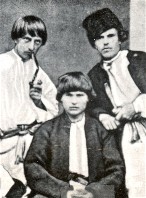
|
KHLOPOMAN. Adherent of a populist movement of Ukrainian students and intelligentsia in Right-Bank Ukraine in the 1850s-1860s. The derogatory Polish term 'chlopoman,' meaning lover of the peasantry, was adopted eventually by those who propagated the notion of 'love for the simple Ukrainian people.' The movement, which was greatly influenced by French socialists (P-J. Proudhon, L-A. Blanqui) and democratic populism, originated among students of Kyiv University who belonged to the Polonized nobility. Recognizing the duty to serve 'the people among whom one lives,' they turned away from Polish student organizations and established a Ukrainian society. The khlopoman movement also had an impact on young people in Left-Bank Ukraine, particularly in Kharkiv, Poltava, Chernihiv, and Odesa. The movement's founders included Volodymyr Antonovych, Tadei Rylsky, Borys Poznansky, Pavlo Zhytetsky, and Pavlo Chubynsky. Antonovych articulated its ideological principles and basic program. A cautious attitude towards the authorities and the conviction that educational and cultural progress must precede political action prompted the khlopomany to emphasize the apolitical nature of the movement. From 1859 they were active in the Hromada of Kyiv... |
| Khlopoman |
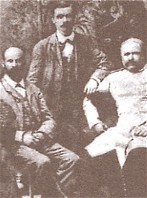
|
HROMADA OF KYIV. The most active and enduring hromada in Russian-ruled Ukraine. It was not only the chief cultural, and to some extent political, society of Ukrainian intelligentsia in Kyiv but also, through its contacts with similar societies in other cities, the most important catalyst of the Ukrainian national revival of the second half of the 19th century. Founded in 1859 mostly by students who felt morally obligated to improve the condition of the people through education, the hromada initially focused on teaching at Sunday schools. A khlopoman group led by Volodymyr Antonovych joined the work of the hromada in 1959. In 1862, at the height of its activity, the hromada's membership reached 200, and included representatives from various social strata and from different nationalities--Jews and Poles as well as Ukrainians. After closing down the Sunday schools in August 1862, the authorities officially banned the hromada at the beginning of 1863. The hromada renewed its activity in 1869. Under the close surveillance of the authorities, it reduced its activities and limited itself to cultural, apolitical goals. In the 1880s the hromada, led by Volodymyr Antonovych, again became more active. Its energies were focused on publishing the journal Kievskaia starina (1882-1906) devoted to Ukrainian studies. Thanks to the hromada's initiative the General Ukrainian Non-Party Democratic Organization was founded in 1897... |
| Hromada of Kyiv |
_s.jpg)
|
ANTONOVYCH, VOLODYMYR, b 18 January 1834 in Makhnivka, Kyiv gubernia, d 21 March 1908 in Kyiv. Historian, archeographer, archeologist, professor of history at Kyiv University from 1878, editor in chief of the publications of the Kyiv Archeographic Commission, patron and head (from 1881) of the Historical Society of Nestor the Chronicler in Kyiv. As a leading member of the khlopoman movement, Antonovych published a reply to the Polish journalist Z. Fisz (pseud T. Padalica), entitled 'Moia ispoved' (My Confession), in Osnova (Saint Petersburg), in which he defended the ideology of the 'lovers of the peasantry.' Antonovych was a major representative of the populist school in Ukrainian historiography. He founded the so-called Kyivan school of historians, which consisted of his students at Kyiv University (among them, Mykhailo Hrushevsky, Dmytro Bahalii, and others). These historians laid the foundations of modern Ukrainian historiography. Antonovych was head of the Old Hromada of Kyiv. For almost half a century he played a leading role in Ukrainian civic and political life. Through his initiative the Poles and Ukrainians in the Galician Diet reached an agreement in 1890. He wrote over 300 scholarly studies. Among others, he collected, edited with introductions, and published the voluminous Arkhiv Iugo-Zapadnoi Rossii (in 8 series, 1859-1914), which deals with the history of Right-Bank Ukraine in the 16th-18th century... |
| Volodymyr Antonovych |
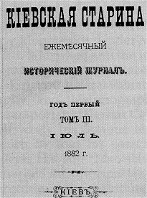
|
KIEVSKAIA STARINA. A learned monthly for Ukrainian studies printed in Russian and published in Kyiv from 1882 to 1906. In 1907 it was renamed Ukraina and appeared in Ukrainian. The journal was founded by Teofan Lebedyntsev, Volodymyr Antonovych, Oleksander Lazarevsky, and Pavlo Zhytetsky, and was financed mostly by Vasyl Symyrenko. It was the unofficial organ of the Hromada of Kyiv, which in 1893 became its real owner. For over 25 years Kievskaia starina was the only printed medium of Ukrainian scholarship in Russian-ruled Ukraine. It published a wealth of research and documentary materials in history, archeology, ethnography, philology, and bibliography. In 1890 it began to publish belles-lettres, which from 1897 appeared in Ukrainian. The leading Ukrainian scientific minds and cultural figures of the time were grouped around the journal, forming something like a learned society. At the turn of the century Kievskaia starina became a sort of encyclopedia of Ukrainian studies. Among its contributors were such scholars as Mykola Kostomarov, Volodymyr Antonovych, Mykhailo Drahomanov, Dmytro Bahalii, Ivan Franko, Orest Levytsky, Mykhailo Hrushevsky, Ahatanhel Krymsky, Mykola Biliashivsky, Volodymyr Hnatiuk, and many others. The journal made an enormous contribution to the development of Ukrainian learning and culture. A systematic index to the journal was published in 1911... |
| Kievskaia starina |
_s.jpg)
|
GENERAL UKRAINIAN NON-PARTY DEMOCRATIC ORGANIZATION. A clandestine cultural organization founded in Kyiv in the fall of 1897 on the initiative of Oleksander Konysky and Volodymyr Antonovych. Many of its first members also belonged to the Hromada of Kyiv (or other hromadas) or the Brotherhood of Taras. With about 150 members in 1901, it was enlarged and reorganized into an association of 3-10-member autonomous groups that held congresses every three years to elect the executive. Most of its energy was devoted to publishing: it maintained the Vik publishing house and the Kyivskaia Starina bookstore. It encouraged the student, zemstvo, and co-operative movement, helped persecuted Ukrainian activists, and agitated for the use of the Ukrainian language in the schools. In 1904 the organization adopted a full political program and changed its name to the Ukrainian Democratic party, demanding national autonomy for Ukrainians and other nationalities within a federated Russia and radical economic and social reforms. In the following year it merged with the Ukrainian Radical party to form the Ukrainian Democratic Radical party (UDRP), which lasted to 1907. In 1908 the groups which previously had belonged to the General Ukrainian Non-Party Democratic Organization and the UDRP established a secret association, the Society of Ukrainian Progressives, which in 1917 became the Ukrainian Party of Socialist Federalists... |
| General Ukrainian Organization |
The preparation, editing, and display of the IEU entries about the hromada movement and its role in the development of Ukrainian national consciousness were made possible by the financial support of the CANADIAN FOUNDATION FOR UKRAINIAN STUDIES.
 XIV. MYKHAILO DRAHOMANOV AND THE FIRST UKRAINIAN POLITICAL PROGRAM
XIV. MYKHAILO DRAHOMANOV AND THE FIRST UKRAINIAN POLITICAL PROGRAM
The 'Introduction' to the first issue of the journal Hromada (Community), published in Geneva in 1878, constituted a turning point in the development of modern Ukrainian political thought; it may be regarded as the first Ukrainian political program. Its author, Mykhailo Drahomanov (1841-1895), was one of the leading Ukrainian intellectuals of his time and even today remains, arguably, the most prominent political thinker in Ukrainian history. Drahomanov's ideas represent a blend of liberal-democratic, socialist, and Ukrainian patriotic elements, with a positivist philosophical background. Influenced by Pierre-Joseph Proudhon, Drahomanov envisaged the final goal of humanity's progress as a future condition of anarchy: a voluntary association of free and equal individuals, with the elimination of authoritarian features in social life. He assumed that this ideal could be achieved through federalism and the self-government of communities and regions. Drahomanov insisted on the priority of civil rights and free political institutions over economic class interests and of universal human values over exclusive national concerns. However, he believed that nationality was a necessary building stone of all mankind, and he coined the slogan 'Cosmopolitanism in the ideas and the ends, nationality in the ground and the forms.' He declared himself a socialist, without subscribing to any school of contemporary socialist thought. Drahomanov was convinced that in agrarian Ukraine socialism must be oriented towards the peasantry. He continued the democratic-federalist tradition as represented by the Ukrainian Decembrist movement of the 1820s (in which his uncle, Yakiv Drahomanov, took part) and the Cyril and Methodius Brotherhood. He wished to link the Ukrainian movement with progressive trends in the contemporary Western world. His theories had a profound influence on the next generation of Ukrainian political thinkers, including Ivan Franko and Mykhailo Pavlyk... Learn more about Mykhailo Drahomanov and his influential political ideas by visiting the following entries:
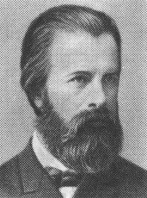
|
DRAHOMANOV, MYKHAILO, b 6 September 1841 in Hadiach, Poltava gubernia, d 20 July 1895 in Sofia, Bulgaria. Scholar, civic leader, publicist, political thinker. Born into a gentry family of Cossack origin, Drahomanov studied at Kyiv University, where in 1864 he became privat docent, and in 1873, docent, lecturing on ancient history. While pursuing an academic career, Drahomanov rose to a position of leadership in the Ukrainian secret society the Hromada of Kyiv. During his trips abroad Drahomanov established contacts with Galician Ukrainians; under his influence the Russophile Academic Circle in Lviv adopted a Ukrainian democratic platform in 1875-6. Drahomanov became an early victim of anti-Ukrainian repressive measures by the Russian government and was dismissed in 1875 from the Kyiv University. Entrusted by the Hromada with the mission to become its spokesman in Western Europe, he settled in Geneva in 1876. Aided by Antin Liakhotsky (Kuzma), he published the journal Hromada (Geneva) (5 vols, 1878-82), the first modern Ukrainian political journal. With Serhii Podolynsky and Mykhailo Pavlyk, who for some time joined him in Switzerland, Drahomanov formed the Geneva Circle, an embryo of Ukrainian socialism... |
| Mykhailo Drahomanov |
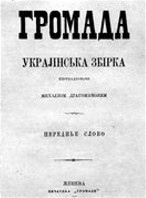
|
SOCIALISM. A political movement calling for collective ownership of the means of production or an egalitarian distribution of wealth. Socialist ideas first appeared in Ukrainian territory in the 1830s and 1840s, but they were limited to the most radical factions of the Polish conspiratorial movement; a Ukrainian socialist movement as such did not emerge until the 1870s. The most influential Ukrainian socialist thinker was Mykhailo Drahomanov, who adapted Western European socialist theories to the particular situation of the Ukrainian nation; his peasant-oriented, decentralist brand of socialism eventually came to be known as radicalism. Other Ukrainian socialist theorists of the 1870s were Drahomanov's close associates Mykola Ziber, an interpreter and proponent of Marxism, and Serhii Podolynsky, who was influenced by Drahomanov's radicalism, Marxism, and Russian populism. Under the influence of Drahomanov, Ziber, and Podolynsky and also under the influence of Polish socialists Ukrainian university students in Vienna and Lviv were converted to socialism, including Ivan Franko, Mykhailo Pavlyk, and Ostap Terletsky. The first Ukrainian political party was a socialist party, the Ukrainian Radical party (est 1890 in Lviv)... |
| Socialism |
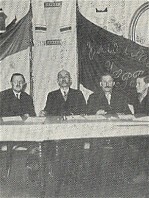
|
RADICALISM. In its most general sense radicalism is the striving for fundamental change. Usually the term has a narrower meaning in politics. In the context of Ukrainian history radicalism refers to a brand of agrarian socialism that emerged in Galicia in the late 19th century and survived there until the Second World War. The ideological inspiration for radicalism came from the political thinker Mykhailo Drahomanov and was embodied in the Ukrainian Radical party (est 1890) in Galicia. Before the party was founded, 'radicals' generally had referred to themselves as 'socialists' or 'progressives.' However, the party leadership, particularly Mykhailo Pavlyk and Ivan Franko, wanted to distinguish their party, its program, and its name from those of the social democrats. They argued that Marxism was suitable for Western European socialists, whose countries had an industrial proletariat. The Ukrainians, however, were a predominantly peasant people, and Drahomanov's political theories suited them much more than Karl Marx's. Radicalism was pre-eminently a Galician phenomenon, but it had resonances elsewhere in Ukraine... |
| Radicalism |
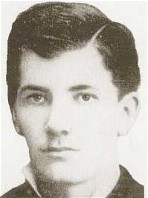
|
PODOLYNSKY, SERHII, b 31 July 1850 in Yaroslavka, Zvenyhorod county, Kyiv gubernia, d 12 July 1891 in Kyiv. Socialist theoretician and activist, and physician. Podolynsky studied science and medicine in Kyiv, Paris, Zurich, and Breslau (now Wroclaw). He worked as a physician in Ukraine in the mid-1870s, but in 1878 he settled in Montpellier, France, where he continued to practice medicine and also lectured at the famous Montpellier medical school. In the early 1870s he became involved with the Hromada of Kyiv, particularly with its most radical members, the socialist Mykhailo Drahomanov and Mykola Ziber. To the end of his active life Podolynsky combined a revolutionary socialist perspective with devotion to the Ukrainian nation. Podolynsky co-operated closely with Mykhailo Drahomanov and his journal Hromada (Geneva), of which he formally became coeditor in 1881. He was also involved in the international socialist movement, contributed to German-, Italian-, and especially French-language socialist journals. He made an important contribution to theory in his article 'Socialism, or Human Labor and the Unity of Physical Forces,' which was published in several versions and four languages in 1880-3... |
| Serhii Podolynsky |
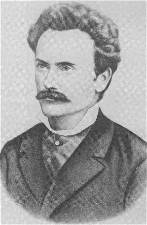
|
FRANKO, IVAN, b 27 August 1856 in Nahuievychi (today Ivan Franko), Drohobych county, Galicia, d 28 May 1916 in Lviv. Writer, scholar, political and civic leader, publicist; like Taras Shevchenko, one of Ukraine's greatest creative geniuses. His first literary works were published in the students' magazine Druh, whose editorial board he joined in 1875. Franko's political and publishing activities and his correspondence with Mykhailo Drahomanov attracted the attention of the police, and in 1877 he was arrested along with Mykhailo Pavlyk, Ostap Terletsky, and others for spreading socialist propaganda. In 1878 he founded with Pavlyk, the magazine Hromads'kyi druh, which was confiscated by the authorities but resumed publication under the names Dzvin and Molot. Franko first became politically active in a circle of Russophile secondary school students. Soon after he left it and joined the populist camp. As a student he was a fervent advocate of socialism and studied Marx and Engels, but later he attacked it vehemently. In general, Franko evolved in his thinking from a proponent of radicalism to a progressive national democrat... |
| Ivan Franko |
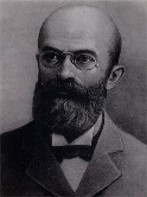
|
PAVLYK, MYKHAILO, b 17 September 1853 in Monastyrske (now part of Kosiv), Kolomyia circle, Galicia, d 26 January 1915 in Lviv. Galician socialist figure and publicist; full member of the Shevchenko Scientific Society from 1900. He and Ivan Franko became close friends as students at Lviv University. Both of them contributed to the Academic Circle's organ, Druh (1874-7), and both became Ukrainophile socialists under the influence of Mykhailo Drahomanov's letters to Druh and the Polish-language newspaper Praca. Through his writings Pavlyk remained the principal Galician propagator of Drahomanov's ideas, which brought about his persecution (he was tried in court nearly 30 times), imprisonment (in 1877, 1878, 1882, 1885-6, and 1889), and ostracism. With Franko he edited (1878) the socialist journal Hromads'kyi druh and miscellanies Dzvin and Molot, all of which outraged the conservative Galician public and were confiscated by the police. In 1879 he avoided a six-month prison term, which he received for writing 'Rebenshchukova Tetiana,' by fleeing to Geneva, where he worked with Drahomanov and Serhii Podolynsky on the journal Hromada. In 1882 he returned to Lviv and served his sentence... |
| Mykhailo Pavlyk |
The preparation, editing, and display of the IEU entries featuring Mykhailo Drahomanov and the first Ukrainian political program were made possible by the financial support of the CANADIAN FOUNDATION FOR UKRAINIAN STUDIES.
 XV. THE CLANDESTINE BROTHERHOOD OF TARAS AND ITS PROTO-NATIONALIST PROGRAM
XV. THE CLANDESTINE BROTHERHOOD OF TARAS AND ITS PROTO-NATIONALIST PROGRAM
In the 1890s the younger generation of Ukrainian activists began to view the Ukrainophile hromada movement in Russian-ruled Ukraine, that focused exclusively on cultural and educational activities and avoided any contacts with revolutionary circles, as insufficient, ineffectual, and outdated. A reflection of the political activism of the new generation was the appearance of illegal Ukrainian political organizations and parties, the first of which was the Brotherhood of Taras (1891-8). It was followed by the General Ukrainian Non-Party Democratic Organization (1897-1904) and the Revolutionary Ukrainian party (1900-5). The ideological principles of the brotherhood were formulated by Ivan Lypa and were published anonymously in a revised form as 'Profession de foi' in the journal Pravda (April 1893). Among the brotherhood's members were prominent writers Mykhailo Kotsiubynsky and Borys Hrinchenko as well as Mykola Mikhnovsky who later became the leading ideologue of Ukrainian nationalism. Besides promoting cultural goals, the brotherhood raised far-reaching political demands--the liberation of the Ukrainian nation from Russian domination, full autonomy for all the peoples of the Russian Empire, and social justice. The Brotherhood was active until 1898. Through its influence the Hromada of Kyiv transformed itself in 1897 into the more political General Ukrainian Non-Party Democratic Organization, and the younger generation organized the Revolutionary Ukrainian party in 1900, that initially based its politics on a speech delivered by Mikhnovsky and published under the title Samostiina Ukraina (Independent Ukraine)... Learn more about the Brotherhood of Taras and its followers by visiting the following entries:
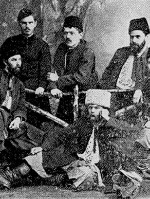
|
BROTHERHOOD OF TARAS. Secret organization of young nationally conscious Ukrainians established in 1891 (according to some, in 1892) when a group of students and civic leaders from Kharkiv and Kyiv visited the grave of Taras Shevchenko near Kaniv. Among the brotherhood's founders were V. Borovyk, Borys Hrinchenko, Ivan Lypa, and Mykola Mikhnovsky. Kharkiv was the brotherhood's center of activity until its members were arrested in the summer of 1893. Then Kyiv became the center, with chapters in Odesa, Poltava, Lubny, and Pryluky. The brotherhood included such people as Valeriian Borzhkovsky, Musii Kononenko, Mykhailo Kotsiubynsky, Volodymyr Samiilenko, Oleksander Cherniakhivsky, Volodymyr Shemet, Yevhen Tymchenko, and Viktor Andriievsky. The society's ideological principles, formulated by Lypa, were propagated by P. Vartovy (Hrinchenko) in Lysty z Ukrainy Naddniprians'koi (Letters from Dnieper Ukraine), by Kotsiubynsky in the fable 'Kho,' and by Samiilenko in satires on the Little Russian mentality and Ukrainophilism... |
| Brotherhood of Taras |
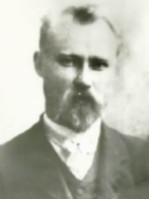
|
LYPA, IVAN, b 24 February 1865 in Kerch, Tavriia gubernia, d 13 November 1923 in Vynnyky, Lviv county, Galicia. Civic and political figure, writer, and physician. As a student at Kharkiv University he helped found the Brotherhood of Taras, formulated its ideological principles (published anonymously as 'Profession de foi' in the journal Pravda), and was imprisoned for over a year for his activity in it. After completing his studies at Kazan University he practiced medicine in the Kherson region, Poltava, and then Odesa, where he published the Ukrainian paper Narodnyi stiah and founded several Ukrainian organizations. During the Ukrainian struggle for independence he was elected Ukrainian commissioner of Odesa and sat on the Central Committee of the Ukrainian Party of Socialists-Independentists. Under the Directory of the Ukrainian National Republic he served as minister of religious affairs. After emigrating to Poland in 1921, he chaired the Council of the Republic and became minister of health in the Government-in-exile of the Ukrainian National Republic... |
| Ivan Lypa |
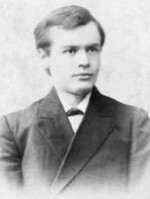
|
MIKHNOVSKY, MYKOLA, b 1873 in Turivka, Pryluky county, Poltava gubernia, d 3 March 1924 in Kyiv. Political and community activist, publicist and lawyer, and ideologue of Ukrainian nationalism. He studied law at Kyiv University and during his student years was one of the initiators (1891) of the Brotherhood of Taras. His speech at the Taras Shevchenko anniversary celebrations in Poltava and Kharkiv in 1900, printed in Lviv as Samostiina Ukraina (Independent Ukraine), became the program of the Revolutionary Ukrainian party in its early period. When most of RUP's membership abandoned an independentist platform, he left it to assist in organizing the Ukrainian People's party (founded in 1902) and wrote the 'Ten Commandments' and the 'Program' to underscore its commitment to full Ukrainian statehood. During the Ukrainian struggle for independence Mikhnovsky was in Kyiv propagating the idea of Ukrainian independence and the formation of a national army. In 1924 incessant persecution by the Soviet authorities led him to suicide... |
| Mykola Mikhnovsky |
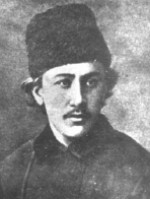
|
HRINCHENKO, BORYS, b 9 December 1863 at Vilkhovyi Yar khutir in Kharkiv county, d 6 May 1910 in Ospedaletti, Italy. Prominent public figure, educator, writer, folklorist, and linguist. For 10 years he taught in elementary schools in Kharkiv and Katerynoslav gubernias. He made an effort to teach children their native language and wrote some of the first Ukrainian-language school textbooks. He was one of the founders of the Brotherhood of Taras in 1891. In 1894, he organized there the largest publishing house in Russian-ruled Ukraine, which published 50 popular-educational books despite severe censorship. In 1902 he moved to Kyiv, where the Hromada of Kyiv entrusted him with the task of compiling a dictionary of the Ukrainian language, which he fulfilled by editing 68,000-word, four-volume dictionary in 1907-9. He founded and was first president of the Kyiv Prosvita society. In 1904 he was a cofounder of both the Ukrainian Radical party (Kyiv) and the Ukrainian Democratic party, which merged in 1905 to form the Ukrainian Democratic Radical party... |
| Borys Hrinchenko |
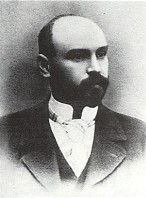
|
MYKHAILO KOTSIUBYNSKY, b 17 September 1864 in Vinnytsia, d 25 April 1913 in Kyiv. One of the finest Ukrainian writers of the late 19th and early 20th centuries. Expelled from the Kamianets-Podilskyi Theological Seminary in 1882 for his Populist involvement, he remained under police surveillance for the rest of his life. His reading of the works of Ludwig Feuerbach and Charles Fourier contributed to his becoming an atheist and a socialist, and Ukrainian literature awakened in him a national consciousness and a desire to work for his people at an early age. In 1892-7 he was a member of the secret Brotherhood of Taras. In 1898 he moved to Chernihiv and worked there as a zemstvo statistician. He was active in the Chernihiv Gubernia Scholarly Archival Commission and headed the Chernihiv Prosvita society in 1906-8. A self-taught intellectual, as a young man he was influenced by the works of Taras Shevchenko, Marko Vovchok, Fyodor Dostoevsky, Heinrich Heine, Emile Zola, Victor Hugo, and Guy de Maupassant. His earliest stories are examples of ethnographic realism and show the influence of Ivan Nechui-Levytsky and Populist ideas. In the late 1890s, however, his themes and subjects became more varied and his approach more sophisticated, and he evolved into one of the most talented Ukrainian modernist writers... |
| Mykhailo Kotsiubynsky |
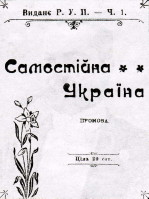
|
REVOLUTIONARY UKRAINIAN PARTY (RUP). The first mass Ukrainian revolutionary party in Russian-ruled Ukraine, established on 11 February 1900. The first RUP members were nationally conscious students at various schools in Ukraine and elsewhere in the Russian Empire. Initially RUP based its politics on a speech 'Samostiina Ukraina' delivered in 1900 by a sympathizer, Mykola Mikhnovsky, who called for 'a single, unitary, indivisible, free, independent Ukraine from the Carpathians to the Caucasus.' In 1903 RUP repudiated the radical nationalism of 'Samostiina Ukraina' and adopted the principles, goals, and tactics of international social democracy. For practical reasons the call for an independent Ukraine was replaced by one for Ukraine's full national-territorial autonomy within a federated, democratic Russia. In 1904, RUP shifted its focus away from the peasantry to the ethnic Ukrainian urban proletariat, adopted organizational principles of 'democratic centralism' and expanded its influence to Right-Bank Ukraine and Southern Ukraine and the Kuban... |
| Revolutionary Ukrainian party |
The preparation, editing, and display of the IEU entries about the Brotherhood of Taras and its proto-nationalist program were made possible by the financial support of NADIA KAZYMYRA of Ottawa, ON, Canada.
 XVI. UKRAINIAN POPULIST-ETHNOGRAPHIC THEATER IN RUSSIAN-RULED UKRAINE
XVI. UKRAINIAN POPULIST-ETHNOGRAPHIC THEATER IN RUSSIAN-RULED UKRAINE
The many amateur theatre groups and touring theaters, active in Russian-ruled Ukraine by the end of the 1850s, played an important role in the Ukrainian national revival. In Kyiv the leader in setting up amateur troupes was Mykhailo Starytsky, and in rural areas of southern Ukraine, Ivan Karpenko-Kary. Although the 1863 tsarist government circular issued by Petr Valuev limited the use of the Ukrainian language on stage, the development of Ukrainian amateur theater continued until 1876, when the Ems Ukase completely prohibited Ukrainian performances in Russian-ruled Ukraine. In 1881, in spite of heavy censorship, the first touring theater in eastern Ukraine was founded, under Marko Kropyvnytsky. Touring theaters led by Starytsky (1885), Mykola Sadovsky (1888), and Panas Saksahansky (1890) followed. Their repertoire consisted mostly of populist-romantic and realistic plays by Kropyvnytsky, Starytsky, and Karpenko-Kary. Censorship did not permit performances of plays with historical and social themes and completely prohibited the staging of plays translated from other languages. Each performance had to include at least one Russian play and the troupe was required to secure a local governor's permission for each staging of a Ukrainian-language play. After the failed Revolution of 1905 censorship eased, and Mykola Sadovsky was able to organize the first resident Ukrainian theater in Kyiv in 1907. He successfully produced Ukrainian operas as well as melodramas and comedies of manners in translation. In the 1910s, the populist-ethnographic theater gave way to the realistic-psychological style of acting... Learn more about the Ukrainian populist-ethnographic theater in Russian-ruled Ukraine by visiting the following entries:
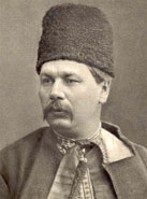
|
KROPYVNYTSKY, MARKO, b 22 May 1840 in Bezhbairaky, Yelysavethrad county, Kherson gubernia, d 21 April 1910 en route from Mykolaiv to Kharkiv, buried in Kharkiv. Renowned actor, stage director, playwright, and composer; a founder and director of the first professional Ukrainian theater in Russian-ruled Ukraine. Working as a petty official of the county court or the municipal government in Bobrynets and Yelysavethrad, for ten years he was active as an actor and play director in amateur theater groups with Ivan Tobilevych (Ivan Karpenko-Kary). In 1871 he moved to Odesa and joined the professional theater of Russian popular drama, where he played mostly the roles of Ukrainian characters. In 1882 Kropyvnytsky organized his own touring theater troupe in Yelysavethrad. As the first Ukrainian professional troupe, it marks the beginning of a new period in the history of the Ukrainian theater. Drawing on the talent of such actors as Mariia Zankovetska and Mykola Sadovsky, the troupe toured Ukraine and some Russian cities with a populist-realist repertoire, and was acclaimed highly by both Ukrainian and Russian critics... |
| Marko Kropyvnytsky |
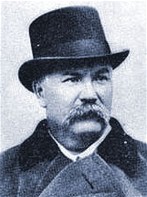
|
KARPENKO-KARY, IVAN (pen name of Ivan Tobilevych), b 29 September 1845 in Arsenivka, Bobrynets county, Kherson gubernia, d 15 September 1907 in Berlin. Famous Ukrainian actor and playwright; the brother of the theater figures Panas Saksahansky, Mykola Sadovsky, and Mariia Sadovska-Barilotti. In 1863 he met Marko Kropyvnytsky and with him became involved in producing amateur theater in Yelysavethrad. In 1884 he was exiled to Novocherkassk for his involvement with Ukrainian revolutionaries; returning to Ukraine in 1886, he lived under police surveillance until 1889. From 1887 until his illness in 1904 he lived on his farmstead, wrote, and worked as a stage actor and director, mostly in the traveling troupe of his brother Panas Saksahansky. He was acclaimed for his principal dramatic and comic roles in many Ukrainian plays, some of them his own. Karpenko-Kary was renowned as a playwright. Altogether he wrote 18 frequently produced plays: satiric comedies, eg Martyn Borulia (1886), dramas, eg. Naimychka (The Servant Girl, 1885), and historical ethnographic plays, eg. Sava Chalyi (1899)... |
| Ivan Karpenko-Kary |
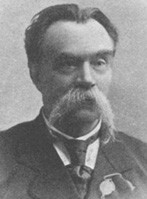
|
STARYTSKY, MYKHAILO, b 14 December 1840 in Klishchyntsi, Zolotonosha county, Poltava gubernia, d 27 April 1904 in Kyiv. Writer and theatrical and cultural activist. Orphaned in childhood, Starytsky was raised by his uncle, the father of Mykola Lysenko. He studied at the Poltava gymnasium (until 1856), Kharkiv University (1858-60), and Kyiv University (1860-6). Starytsky was first published in 1865. An important part of his literary legacy is his poetry on social issues, which is characterized by populist and patriotic motifs, glorification of the Ukrainian past, and protests against tsarism. Starytsky made a considerable contribution to Ukrainian theater and dramaturgy. In 1883 he headed the first Ukrainian professional theater and in 1885 founded a new troupe with young actors. He wrote several original dramatic works as well as librettos for many of Mykola Lysenko's operas. Starytsky's contribution to Ukrainian dramaturgy was very considerable. He began by reworking prose works for the stage and rewriting dramatic works, and proceeded to write many of his own, the most notable of which are the social dramas Ne sudylos' (It Was Not Destined, 1883), U temriavi (In the Darkness, 1892), and Talan (Destiny, 1894). His drama Oi ne khody, Hrytsiu, ta i na vechornytsi (Don't Go to Parties, Hryts!, 1892) became very popular. His historical dramas: Bohdan Khmel'nyts'kyi (1897) and Marusia Bohuslavka (1899) merit particular attention. During the last years of his life Starytsky wrote several historical novels on Ukrainian themes in Russian and Ukrainian... |
| Mykhailo Starytsky |
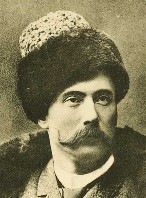
|
SADOVSKY, MYKOLA (real surname: Tobilevych), b 13 December 1856 in Kamiano-Kostuvate, Yelysavethrad county, Kherson gubernia, d 7 February 1933 in Kyiv. Theater director, actor, and singer; brother of Ivan Karpenko-Kary, Mariia Sadovska-Barilotti, and Panas Saksahansky. In 1881 he began his theatrical career in Hryhorii Ashkarenko's, Marko Kropyvnytsky's, and Mykhailo Starytsky's troupes. From 1888 he led his own troupe, which in 1898 joined Saksahansky's Troupe. Sadovsky was the artistic director of the Ukrainska Besida Theater (1905-6) and then organized the first resident Ukrainian theater in Kyiv, which was active until 1919. Acclaimed by Mykhailo Starytsky as the most talented of the Tobilevych family, Sadovsky was an actor of the realistic-psychological school, whose best roles were profound interpretations of the heroes in historical and social dramas, such as Starytsky's Bohdan Khmel'nyts'kyi, Ivan Karpenko-Kary's Sava Chalyi, and Liudmyla Starytska-Cherniakhivska's Het'man Doroshenko. He was also a key force behind the flowering of Ukrainian operatic theater... |
| Mykola Sadovsky |
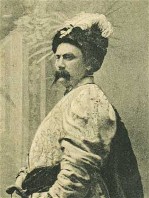
|
SAKSAHANSKY, PANAS (pseud of Panas Tobilevych), b 15 May 1859 in Kamiano-Kostuvate, Yelysavethrad county, Kherson gubernia, d 17 September 1940 in Kyiv. Theater director and actor; brother of Mykola Sadovsky, Ivan Karpenko-Kary, and Mariia Sadovska-Barilotti. After completing his education in Yelysavethrad (1880) he worked in Mykhailo Starytsky's (from 1883), Marko Kropyvnytsky's (1885), and Sadovsky's (1888) troupes; led his own Saksahansky's Troupe (1890-1909); worked in Trokhym Kolesnychenko's troupe (1910-15) and in the Society of Ukrainian Actors (1915-16); directed the People's Theater (1918-22); worked in the Zankovetska Theater (intermittently in 1922-6); and, from 1927, led a touring troupe with Sadovsky. Saksahansky was an actor of the realistic-psychological school, gifted in gesture and mimicry, whose most famous roles were in satirical comedies, such as Ivan Kotliarevsky's Natalka from Poltava. In Ukrainian translation he staged Schiller's Die Rauber, Karl Gutzkow's Uriel Acosta, and Shakespeare's Othello. He is the author of two plays and two books of memoirs... |
| Panas Saksahansky |
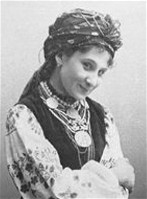
|
ZANKOVETSKA, MARIIA (nee Adasovska), b 4 August 1854 in Zanky now in Nizhyn raion, Chernihiv oblast, d 4 October 1934 in Kyiv. Actress, singer, and theater activist. Zankovetska was educated in a Chernihiv private school and at the Helsinki Conservatory. She debuted in 1882 in Ivan Kotliarevsky's Natalka from Poltava as a member of Marko Kropyvnytsky's troupe, which production heralded the rebirth of Ukrainian professional theater, heavily repressed since the Ems Ukase of 1876. Zankovetska performed as leading actress in the troupes of Kropyvnytsky, Mykhailo Starytsky, and Mykola Sadovsky, in Saksahansky's Troupe, in Onysym Suslov's troupe, in the Society of Ukrainian Actors, and in the State People's Theater. She appeared at the All-Russian Congress of Stage Workers in 1897, where she demanded the termination of censorship in Ukrainian theater. Zankovetska's stage career spanned over 30 dramatic-heroic roles from the populist-ethnographical repertoire, which she played with innate subtlety and intelligence. Her best performances were opposite Mykola Sadovsky, and her talent was praised by Konstantin Stanislavsky...
|
| Mariia Zankovetska |
The preparation, editing, and display of the IEU entries featuring the Ukrainian populist-ethnographic theater in Russian-ruled Ukraine were made possible by the financial support from TEODOR BUTREJ's bequest to the CANADIAN FOUNDATION FOR UKRAINIAN STUDIES.
 XVII. MYKOLA LYSENKO AND THE NATIONAL SCHOOL OF UKRAINIAN MUSIC
XVII. MYKOLA LYSENKO AND THE NATIONAL SCHOOL OF UKRAINIAN MUSIC
In the late 19th and early 20th centuries considerable efforts were made by composers, musicians, and music educators in Ukraine to develop a modern Ukrainian national school of music based on a Ukrainian cultural tradition and the originality of its folk music--a school comparable to those established among the Poles, Czechs, Russians, and Norwegians. The key figure in this process was a descendant of an aristocratic Cossack starshyna family, the composer Mykola Lysenko. Lysenko collected and arranged a large number of Ukrainian folk songs and studied them in order to establish their cultural specificity. By 1904 he was able to establish the Lysenko School of Music and Drama in Kyiv that served as a major center for the fostering of Ukrainian music and musicians. He also toured through Ukraine with choruses under his baton in order to spread the sound of Ukrainian music. His prolific and versatile life's work became the foundation for the further development and expansion of Ukrainian musical culture. Lysenko influenced a large group of Ukrainian composers in Russian-ruled Ukraine, including Kyrylo Stetsenko, Mykola Leontovych, Yakiv Stepovy, Oleksander Koshyts, Lev Revutsky, and Mykhailo Verykivsky. Lysenko's work also had a marked influence in Western Ukraine, where Ukrainian music activists had been free to establish printing houses for the publication of music, and the Boian music society had built an effective network throughout Galicia. In this milieu the Ukrainian national school of music attracted such composers as Filaret Kolessa, Ostap Nyzhankivsky, and later Stanyslav Liudkevych... Learn more about Mykola Lysenko and the national school of Ukrainian music by visiting the following entries:
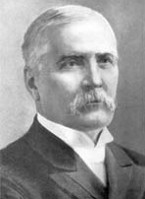
|
LYSENKO, MYKOLA, b 22 March 1842 in Hrynky, Kremenchuk county, Poltava gubernia, d 6 November 1912 in Kyiv. Composer, ethnomusicologist, conductor, pianist, teacher, and community figure. Lysenko acquired the rudiments of piano playing from his mother and gained a strong appreciation of Ukrainian music and Cossack lore from his grandparents. From 1860 he studied at Kharkiv University and Kyiv University, graduating in 1865 with a degree in natural sciences. His stay in Kyiv, his activities in the Hromada of Kyiv, and his close relationships with his cousin Mykhailo Starytsky, and with Volodymyr Antonovych, Tadei Rylsky, and others led Lysenko to make a strong personal commitment to the study and development of Ukrainian music. He worked for two years as an arbitrator in Tarashcha county, then furthered his music studies in Leipzig (1867-9). After returning to Kyiv in 1869 to work as a music teacher and conductor, he moved to Saint Petersburg (1874-6) to study orchestration under Nikolai Rimsky-Korsakov; then he returned to Kyiv, where he gave music lessons for many years before opening the Lysenko Music and Drama School in 1904... |
| Mykola Lysenko |
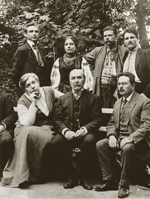
|
LYSENKO MUSIC AND DRAMA SCHOOL. A school established in Kyiv 1904 by Mykola Lysenko to foster the development of Ukrainian music. Lysenko financed the project with funds gathered by his supporters to buy him a country house for his 35th jubilee celebration. The school's curriculum was on the level of a conservatory, and there was a separate drama department and a museum of Ukrainian folk instruments. The school was directed initially by Lysenko and then by his daughter Mariana Lysenko (1912-18). Teachers included Lysenko, Hryhorii Liubomyrsky, Oleksander Myshuha, and Mariia Starytska. The school was the only Ukrainian higher music school of its day, and its influence in the development of Ukrainian music is reflected in the list of its graduates, which includes Kyrylo Stetsenko, Oleksander Koshyts, Lev Revutsky, and Mykhailo Mykysha. In 1918 the school was reorganized and renamed the Lysenko Music and Drama Institute. It served as a major training center for many of the most promising musical and stage talents in Soviet Ukraine. It functioned until 1934, when it was restructured as the Kyiv Conservatory and the Kyiv Institute of Theater Arts... |
| Lysenko Music and Drama School |
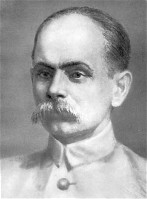
|
STETSENKO, KYRYLO, b 24 May 1882 in Kvitky, Kyiv gubernia, d 29 April 1922 in Vepryk, Kyiv gubernia. Composer, conductor, teacher, and community activist. After graduating from the Kyiv Theological Academy in 1903 Stetsenko began teaching music at the pedagogical institute and conducting church and secular choirs, continued studying composition at the Lysenko Music and Drama School, and participated with leading Ukrainian musical figures in an unsuccessful attempt to establish an independent music publishing house. His activities led to his arrest and exile (1907-10) to a town in the Donbas, where he taught music in a local school. He ceased virtually all his creative work until 1917, when he was recruited to the music department of the Ukrainian National Republic Ministry of Education. Although many of his activities involved organizing and teaching, he also returned to composing and conducting. He took a position as a priest in the village of Vepryk (south of Kyiv) in 1920 after he fell out of favor with the new Soviet authorities. He died of typhus while tending to the sick in his village during a pestilence... |
| Kyrylo Stetsenko |
_s.jpg)
|
LEONTOVYCH, MYKOLA, b 13 December 1877 in Monastyrok, Bratslav county, Podilia gubernia, d 23 January 1921 in Markivka, Haisyn county, Podilia gubernia. Composer, conductor, and teacher. After graduating from the theological seminary in Kamianets-Podilskyi in 1899, he worked as a teacher at various schools in Kyiv gubernia, Katerynoslav gubernia, and Podilia gubernia. In spite of the popularity of his compositions, Leontovych was modest about his work and remained a generally unrecognized figure until he was brought to Kyiv in 1918-19 to teach at Kyiv Conservatory and the Lysenko Music and Drama Institute. He died in tragic circumstances several years later, being shot by a Cheka agent. Leontovych's musical heritage consists primarily of more than 150 choral compositions inspired by the texts and melodies of Ukrainian folk songs. His 'Shchedryk' is particularly renowned. It is better known as 'The Carol of the Bells' in its English version, authored and premiered in 1936 by conductor-educator P. Wilhousky. It has experienced over 150 transmutations in re-arrangements for differing vocal and instrumental combinations... |
| Mykola Leontovych |
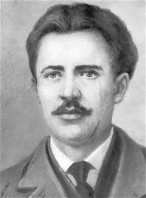
|
STEPOVY, YAKIV, b 20 October 1883 in Pisky, near Kharkiv, d 4 November 1921 in Kyiv. Composer, teacher, and music critic. Recruited to sing with the Saint Petersburg court choir in 1895, he studied at the Saint Petersburg Conservatory in 1902-9 under Nikolai Rimsky-Korsakov. He lectured at the Kyiv Conservatory from 1917 and was musical director of the Muzychna Drama Theater and the State Vocal Ensemble from 1919. He died after contracting typhus in Kyiv. Stepovy played an important role in establishing a national school of Ukrainian music and is regarded (together with colleagues such as Kyrylo Stetsenko) as one of the luminaries of Ukrainian music. His compositions include numerous art songs for solo voice to the words of Taras Shevchenko, Ivan Franko, Lesia Ukrainka, Pavlo Tychyna, Maksym Rylsky, and others; instrumental works such as sonatas, rondos, a fantasia, a cycle of miniatures for piano (1909-13); and two suites for orchestra based on Ukrainian folk songs. Among his works for choir are 50 Ukrainian folk song arrangements, a collection of songs for children to Shevchenko's Kobzar, and an unfinished opera based on Shevchenko's Nevol'nyk (The Captive)... |
| Yakiv Stepovy |
_s.jpg)
|
KOSHYTS, OLEKSANDER, b 14 September 1875 in Romashky, Kaniv county, Kyiv gubernia, d 21 September 1944 in Winnipeg. Composer, choirmaster, and ethnographer. A graduate of the Kyiv Theological Academy (1901), he studied composition with Hryhorii Liubomyrsky at the Lysenko Music and Drama School (1908-10), where he also served as assistant choirmaster. During that period he conducted the Boian choir, organized two student choirs, taught choral classes at the Kyiv Conservatory, conducted the orchestra of Sadovsky's Theater (1912-16), and served as conductor and choirmaster of the Kyiv Opera (1916-17). He collected Ukrainian folk songs in the Kyiv region and in the Kuban region. In 1918 Koshyts co-founded the Ukrainian Republican Kapelle (reorganized in 1920 into the Ukrainian National Choir), which for seven years toured Europe and the Americas extensively to win public support for the Ukrainian National Republic. In 1926 he settled in New York. A leading popularizer of Ukrainian folk songs and liturgical music, Koshyts composed five liturgies, arranged numerous folk songs, and published a number of collections and musical studies... |
| Oleksander Koshyts |
The preparation, editing, and display of the IEU entries featuring Mykola Lysenko and the national school of Ukrainian music were made possible by a generous donation of the CANADIAN FOUNDATION FOR UKRAINIAN STUDIES.
 XVIII. SCHOLARLY SOCIETIES IN UKRAINE IN THE 19th AND EARLY 20th CENTURIES
XVIII. SCHOLARLY SOCIETIES IN UKRAINE IN THE 19th AND EARLY 20th CENTURIES
Scholarly and literary societies active in Ukraine in the 19th and 20th centuries played a particularly important role not only in the development of scholarship and science in Ukraine, but in the processes of shaping the modern Ukrainian identity. In spite of the fact that all of the learned societies in Russian-ruled Ukraine in the 19th century were overseen by the imperial authorities and were obliged to use Russian in most of its publications and activities, they nonetheless contributed greatly to the research into the history and culture of Ukraine and generally stimulated intellectual life and aroused interest in Ukrainian studies. By the second half of the 19th century the accomplishments of the various scholarly societies and their successes in generating interest in Ukrainian scholarship aroused the suspicion of Russian government. Consequently, in July 1863 Petr Valuev, the minister of the interior, banned the publication in Ukrainian of all scholarly, religious, and educational books. As a reaction to that, the Ukrainophiles, gathered around the Hromada of Kyiv, soon gained control of the semiofficial Southwestern Branch of the Imperial Russian Geographic Society and also convinced Countess Yelysaveta Myloradovych and other wealthy philanthropists to fund the newly formed Shevchenko Society in Lviv, which was soon to become the most prominent Ukrainian scholarly society of the time, the Shevchenko Scientific Society. As ties between the Ukrainian intelligentsia in the Russian Empire and in Austria-Hungary became stronger, Galicia increasingly served as the main center of Ukrainian scholarly activities because it was beyond the reach of tsarist restrictions. In 1876, alarmed by the growth of the Ukrainophile movement, Alexander II banned the printing and importation of Ukrainian-language publications (Ems Ukase). But despite the repression that marked the 1876-1905 period, Ukrainian scholarship made great progress. Ukrainian literature flourished and many more scholarly societies were established... Learn more about scholarly societies in Ukraine by visiting the following entries:
_s.jpg)
|
SCHOLARLY SOCIETIES. The first learned society in Ukraine was the Odesa Society of History and Antiquities (1839). Learned societies did not become widespread, however, until the last few decades of the 19th century. Most were associations of scholars in the humanities, law, and social sciences, such as the Church-Archeological Society (1872) at the Kyiv Theological Academy, the Historical Society of Nestor the Chronicler (1873) at Kyiv University, the Kharkiv Historical-Philological Society (1877), the Kyiv Juridical Society (1877), the Odesa Historical-Philological Society (1889), the Nizhyn Historical-Philological Society (1894), the Volhynian Church-Archeological Society in Zhytomyr (1894), the Kyiv Society of Antiquities and Art (1897), the Podilia Church Historical-Archeological Society in Kamianets-Podilskyi (1903), and the Kyiv Society for the Preservation of Ancient and Artistic Monuments (1910). In regional studies the first associations were the Society of Kuban Researchers in Katerynodar (1896), a similar one in Katerynoslav (1901), and the Volhynia Research Society in Zhytomyr (1900). In 1907 the Ukrainian Scientific Society was founded in Kyiv to unite all scholars in Russian-ruled Ukraine. It modeled itself on the important, multidisciplinary Shevchenko Scientific Society (NTSh, est 1873), to which most Ukrainian scholars and scientists in Austrian-ruled Galicia belonged. Other societies in Galicia were the Halytsko-Ruska Matytsia (1848), the Society of Friends of Ukrainian Scholarship, Literature, and Art (1904), and the Society of Ukrainian Lawyers (1909)... |
| Scholarly societies |
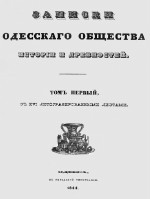
|
ODESA SOCIETY OF HISTORY AND ANTIQUITIES. A scholarly society established in Odesa in 1839 to collect, describe, and protect all archeological monuments and historical documents pertaining to Southern Ukraine (including the Zaporozhian Cossacks), the Crimea, and Bessarabia; to prepare and publish historical studies of those regions; and to compile statistical and geographical data about them. The society conducted excavations at the sites of ancient Hellenic colonies (ancient states on the northern Black Sea coast) and kurhans; created a large library, archive, and museum (est 1840, merged with the Odesa Municipal Museum of Antiquities [now the Odesa Archeological Museum] in 1858); supervised museums in Teodosiia (from 1850), Kerch, and Sevastopol (today the Khersones Historical-Archeological Museum) and the Genoese fortresses at Sudak and Bilhorod-Dnistrovskyi; and published its own scholarly Zapiski Imperatorskogo Odesskogo obshchestva istorii i drevnostei (33 vols, 1844-1919), monographs, catalogs, and indexes. In 1893 the society had 16 honorary members, 122 full members, and 40 corresponding members and associates. Prominent members included Oleksii Andriievsky, O. Berthier-Delagarde, F. Brun, A. Florovsky, Dmytro Kniazhevych (the first president), V. Latyshev, Nikolai Murzakevich (the first secretary), M. Popruzhenko, Apolon Skalkovsky, E. von Stern, B. Varneke, and V. Yurgevich. The society was abolished under Soviet rule in 1922. Its traditions have been carried on by the Odesa Archeological Society (est 1959)...
|
| Odesa Society of History and Antiquities |
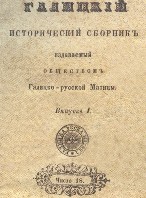
|
HALYTSKO-RUSKA MATYTSIA. A literary and scholarly-educational society established in June 1848 in Lviv by the Supreme Ruthenian Council. Modeled on Serbian (1826), Czech (1831), and other similar predecessors, the Halytsko-Ruska Matytsia fostered schooling and general cultural enlightenment by publishing popular-science literature, grammars, and textbooks. Rev Mykhailo Kuzemsky was its first head. In 1850 it had 193 dues-paying members, 69 of whom were priests. In 1861 its statute was ratified. In the 1860s it was taken over by the Russophiles (Yakiv Holovatsky, Antin Petrushevych, B. Didytsky, and others), who promoted the use of the artificial, bookish yazychie language and later even Russian. Consequently, the Galician populists founded the Prosvita society in 1868. The activity and influence of the Halytsko-Ruska Matytsia declined in the 1880s, but it continued to exist (with periods of inactivity, 1895-1900, 1909-22) until 1939. The Halytsko-Ruska Matytsia published about 60 books (15 in 1848-50, 15 in 1850-61, 26 in 1862-99, 4 in 1900-39). It also published scholarly serials: Galitskii istoricheskii sbornik (3 vols, 1853-60), Naukovyi sbornik (4 vols, 1865-8), Literaturnyi sbornik (15 vols, 1869-73, 1885-90, 1896-7), and Nauchno-literaturnyi sbornik (8 vols, 1901-2, 1904-6, 1908, 1930, 1934)... |
| Halytsko-Ruska Matytsia |
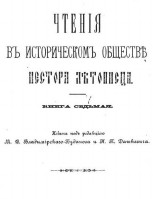
|
HISTORICAL SOCIETY OF NESTOR THE CHRONICLER. Scholarly society founded in 1873 in Kyiv. Named in honor of Nestor the Chronicler, the first Ukrainian chronicler (11th-12th century), it was affiliated from 1876 with Kyiv University and from 1921 with the All-Ukrainian Academy of Sciences. The society's members researched the archeology and history of Ukraine, particularly the history of law, religion, and literature in Ukraine and Russia, and promoted the development of historical studies, including the auxiliary disciplines. The society organized scholarly colloquiums, and published its members' research in Trudy and in Chteniia v Istoricheskom obshchestve Nestora-letopistsa. The society also maintained a library (1,500 volumes in 1892). Among those who headed the society were such eminent scholars as Vladimir Ikonnikov, Volodymyr Antonovych, Mikhail Vladimirsky-Budanov, Mykola Dashkevych, Oleksander Lazarevsky, and Mykola Vasylenko. In the decade after the Revolution of 1917 the society (by then bearing the Ukrainian name Istorychne tovarystvo Nestora-litopystsia) had 212 active members, and from 1920 to 1928 approximately 300 scholarly papers were presented at its meetings. In the early 1930s the society was abolished by the Soviet government... |
| Historical Society of Nestor the Chronicler |
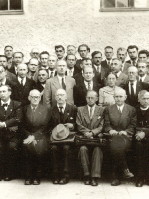
|
SHEVCHENKO SCIENTIFIC SOCIETY (NTSh). The oldest, and for a long time the only, prominent and fully Ukrainian scholarly society. It was founded on 11 December 1873 in Austrian-ruled Lviv as the Shevchenko Society (Tovarystvo im. Shevchenka) with the aim of fostering the development of Ukrainian literature. The society's initiators were leading Ukrainian community and cultural figures on both sides of the Austrian-Russian border, headed by Oleksander Konysky. Its benefactors included Yelysaveta Myloradovych, Dmytro Pylchykov, Mykhailo Zhuchenko, and Rev Stepan Kachala. The Shevchenko Society's first act was the purchase of a printing press and the establishment of its own publishing house in 1874. By 1891 it had published 20 books and the periodicals Pravda (1878-9) and Zoria (from 1885). Because the publication of Ukrainian literature and scholarship in Russian-ruled Ukraine was severely restricted after the imposition of the 1876 Ems Ukase and subsequent tsarist edicts, in 1893 the Shevchenko Society was reorganized 'to foster and develop science and art in the Ukrainian-Ruthenian language and to preserve and collect the monuments of antiquity and the scientific objects of Ukraine-Rus'.' Renamed the Shevchenko Scientific Society and modeled on Western European scientific institutions, the NTSh pursued the aim of becoming 'the progenitor of a future Ukrainian-Ruthenian academy of sciences.' The NTSh acquired a pan-Ukrainian importance and scholarly prestige under the presidency (1897-1913) of Mykhailo Hrushevsky... |
| Shevchenko Scientific Society |
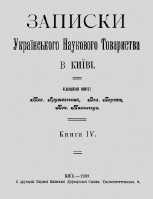
|
UKRAINIAN SCIENTIFIC SOCIETY (UNT). The first Ukrainian-language and openly Ukrainophile learned society in Russian-ruled Ukraine. It was founded in Kyiv on the initiative of Volodymyr Naumenko in 1907, after tsarist restrictions on Ukrainian publishing were lifted following the Revolution of 1905. Its structure and activities were modeled on those of the Shevchenko Scientific Society in Lviv, with which it maintained close ties. In 1912 the executive council members were Mykhailo Hrushevsky (president from 1908), Orest Levytsky and Ivan M. Steshenko (vice-presidents), and others. The UNT was divided into historical, philological, natural sciences, and, later, technical, medical, archeological, pedagogical, and art sections and commissions on ethnography, linguistics, statistics-economy, and, from 1917, economic history, law, archeography, botany, and 11 other natural sciences. It maintained a library, an archeology and art museum, and the Museum of Ukrainian Personages in Kyiv. The UNT held biweekly lecture meetings, organized scholarly conferences and public lectures, and published original research, surveys, reviews, and some primary-source materials in its serials Zapysky Ukrains'koho naukovoho tovarystva v Kyievi (18 vols, 1908-14, 1917-18), Ukraina (quarterly, 1914, 1917-18), and Ukrains'kyi naukovyi zhurnal (2 vols, Moscow, 1915-16). The UNT's activities were interrupted by the First World War and consequent tsarist restrictions, persecution, and censorship until 1917. After the Revolution of 1917 the UNT was instrumental in the founding of the Ukrainian State University (Kyiv University) and the Ukrainian Academy of Sciences... |
| Ukrainian Scientific Society |
The preparation, editing, and display of the IEU entries about scholarly societies in Ukraine were made possible by the financial support of the MICHAEL KOWALSKY AND DARIA MUCAK-KOWALSKY ENCYCLOPEDIA ENDOWMENT FUND at the Canadian Institute of Ukrainian Studies (Edmonton, AB, Canada).
 XIX. UKRAINIAN LITERARY AND SCHOLARLY JOURNALS BEFORE 1914
XIX. UKRAINIAN LITERARY AND SCHOLARLY JOURNALS BEFORE 1914
The emergence and development of Ukrainian literary and scholarly journals was closely connected to the development of organized Ukrainian cultural, economic, and nation-building activity. Developing the concepts of a national history and culture, these publications had a profound influence on the formation of the modern Ukrainian identity. In general, until the end of the first half of the 19th century in Austrian-ruled Ukraine and until 1905 in Russian-ruled Ukraine, conditions were such that a Ukrainian-language periodicals and book printing could not freely develop. Because of the strict tsarist censorship and, in the latter part of the 19th century, outright bans on Ukrainian-language publications, most literary and scholarly journals in the Russian Empire were published in Russian. Of particular importance was the publication of the journal Osnova in Saint Petersburg (1861-62) which played a vital social and organizational role by providing a forum for the fledgling Ukrainian historiography and vernacular literature. In Austrian-ruled Western Ukraine, with the introduction of the 1860 Austrian constitution, the Ukrainian-language press and book publications were able to develop much more freely. As a result, after the imposition of the Ems Ukase in 1876 in Russian-ruled Ukraine, the majority of Ukrainian-language books and periodicals were published in Galicia and, occasionally, Bukovyna. The major literary and scholarly journals in Galicia of the late 19th century included the Lviv-based Pravda (1867-96) and Zoria (1880-97). In 1898 Mykhailo Hrushevsky established Literaturno-naukovyi vistnyk, a single literary-scientific journal uniting all Ukrainian literary trends and the most prominent critics and scholars from all Ukrainian territories. In the Russian-ruled Ukraine, the Kyiv-based scholarly literary journal Kievskaia starina (1882-1906) had to be published in Russian. Only after the Revolution of 1905, it was renamed Ukraina, and four issues appeared in Ukrainian. With the emergence of new literary trends, another literary journal was established in Kyiv, Ukrains'ka khata (1909-14), which became the forum for Ukrainian 'modernism.' The first Ukrainian-language academic periodicals were published in Lviv: the Halytsko-Ruska Matytsia society's Naukovyi sbornyk (1865-68) and the Shevchenko Scientific Society's Zapysky Naukovoho tovarystva im. Shevchenka (est 1892)... Learn more about the Ukrainian literary and scholarly journals before 1914 by visiting the following entries:
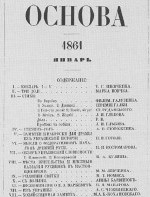
|
OSNOVA (SAINT PETERSBURG). A Ukrainian journal published in Saint Petersburg from January 1861 to October 1862 (a total of 22 issues) by Vasyl Bilozersky. It had a major influence on the development of Ukrainian national consciousness and Ukrainian literature in the 1860s. Panteleimon Kulish and Mykola Kostomarov were the editors. Osnova united Ukrainophile writers and scholars in the common goal of substantiating the Ukrainians' right to develop fully and independently as a people. It published prose, poetry, folklore, and ethnographic studies in Ukrainian and historical, literary, polemical, economic, pedagogical, and musicological articles, memoirs, bibliographies, and reviews mostly in Russian. Works by over 40 belletrists appeared in Osnova, most notably Taras Shevchenko. Scholars, such as Mykhailo Maksymovych, contributed essays on the Ukrainian language. The right to public education in Ukrainian and the need for a broad network of Ukrainian-language elementary schools and textbooks and educational literature in Ukrainian were advocated by Pavlo Chubynsky, Mykhailo Levchenko, and particularly Panteleimon Kulish. Panteleimon Kulish wrote most of the literary criticism and critically evaluated the Cossack era in an essay that was planned as the preface to a book on the history of Ukraine. In his essays, Mykola Kostomarov elaborated a new approach to Ukrainian historiography. The Russian press generally reacted antagonistically to Osnova, particularly to Kulish's and Kostomarov's claim that the Ukrainians have a distinct language and should have their own literature... |
| Osnova (Saint Petersburg) |
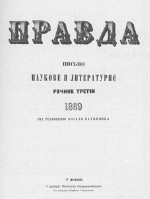
|
PRAVDA (LVIV). A literary, scholarly, and political journal published in Lviv three times a month in 1867, four times a month in 1868-70, semimonthly in 1872-78, monthly in 1879, as a miscellany in 1880 and 1884, and again as a monthly in 1888-93 and a semimonthly in 1894-96. It was initiated by intellectuals in Lviv and elsewhere in Galicia, but was funded by the writers Panteleimon Kulish and Oleksander Konysky from Russian-ruled Ukraine. Until the establishment of the newspaper Dilo in 1880, Pravda was the main organ of the Galician populists and the most important journal of the time. Its contributors included many writers and scholars in both Austrian- and Russian-ruled Ukraine, among them Oleksander Ohonovsky, Ivan Franko, Omelian Partytsky, Ivan Verkhratsky, Oleksander Barvinsky, Volodymyr Barvinsky, Yurii Fedkovych, Ostap Terletsky, Oleksander Konysky, Panteleimon Kulish, Hanna Barvinok, Marko Vovchok, Panas Myrny, Mykhailo Starytsky, Ivan Karpenko-Kary, and Ivan Nechui-Levytsky. In this period the chief editors of the journal were I. Mykyta, Anatol Vakhnianyn (1869-70), Ohonovsky (1872-6), L. Lukashevych (1876), and V. Barvinsky (1876-9). Beginning in the early 1870s Pravda was openly criticized by Mykhailo Drahomanov, a regular contributor, who in 1873 submitted an open letter on behalf of 76 noted Ukrainians in the Russian Empire complaining about the conservative orientation of the journal. After a four-year interruption Pravda resumed publication in 1888 on the initiative of Volodymyr Antonovych and Oleksander Konysky. In the 1890s it was the chief organ of the populist right and supported the politics of the New Era...
|
| Pravda (Lviv) |
_s.jpg)
|
ZORIA (LVIV). A semimonthly literary and scholarly journal published in Lviv in 1880-85 by Omelian Partytsky and in 1885-97 by the Shevchenko Scientific Society. One of the most important journals of its time, it was devoted to pan-Ukrainian issues and topics, and united writers and subscribers from both Austrian- and Russian-ruled Ukraine. In 1891 it switched from using etymological spelling to a phonetic orthography. Zoria contained literary studies by Ivan Franko, Mykhailo Hrushevsky, V. Kotsovsky, Ahatanhel Krymsky, Omelian Ohonovsky, Kyrylo Studynsky, and Vasyl Shchurat, and articles on historical, ethnographic, and economic topics by Kornylo Zaklynsky, Orest Levytsky, Omelian Kalytovsky, Isydor Sharanevych, Franko, Danylo Lepky, Oleksander Konysky, and Borys Poznansky. Several biographies and memoirs, as well as the correspondence of prominent individuals, also appeared in the journal. Zoria was edited by Partytsky (to 1885), Kalytovsky, Oleksander Borkovsky (1886, 1888-89, 1897), Hryhorii Tsehlynsky (1887-88), Petro Skobelsky (1889-90), V. Tysovsky (1890-91), and Vasyl Lukych (1891-97). From 1885 Franko was managing editor. Zoria was succeeded by Literaturno-naukovyi vistnyk. A systematic index to it was published in Lviv in 1988... |
| Zoria (Lviv) |
_s.jpg)
|
KIEVSKAIA STARINA. A learned monthly for Ukrainian studies printed in Russian and published in Kyiv from 1882 to 1906. In 1907 it was renamed Ukraina and appeared in Ukrainian. The journal was founded by Teofan Lebedyntsev, Volodymyr Antonovych, Oleksander Lazarevsky, and Pavlo Zhytetsky, and was financed mostly by Vasyl Symyrenko. As the unofficial organ of the Hromada of Kyiv, which in 1893 became its real owner, it was published and edited by T. Lebedyntsev (1882-87), Oleksander Lashkevych (1888-89), Ye. Kyvlytsky (1889-92), and Volodymyr Naumenko (1893-1907). For over 25 years Kievskaia starina was the only printed medium of Ukrainian scholarship in Russian-ruled Ukraine. It published a wealth of research and documentary materials in history, archeology, ethnography, philology, and bibliography. In 1890 it began to publish belles-lettres, which from 1897 appeared in Ukrainian, and literary criticism. The leading Ukrainian scientific minds and cultural figures of the time were grouped around the journal, forming something like a learned society. At the turn of the century Kievskaia starina became a sort of encyclopedia of Ukrainian studies. Among its contributors were Mykola Kostomarov, Volodymyr Antonovych, Mykhailo Drahomanov, Dmytro Bahalii, Mykola Sumtsov, Ivan Franko, Orest Levytsky, Mykhailo Hrushevsky, Ahatanhel Krymsky, Mykola Biliashivsky, Volodymyr Hnatiuk, and others. The journal made an enormous contribution to the development of Ukrainian learning and culture... |
| Kievskaia starina |
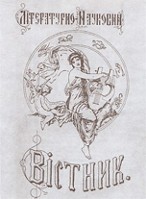
|
LITERATURNO-NAUKOVYI VISTNYK. A monthly journal published in 1898-1906 in Lviv, in 1907-14 and 1917-19 in Kyiv, and in 1922-32 again in Lviv. It was founded on the initiative of Mykhailo Hrushevsky as the organ of the Shevchenko Scientific Society, incorporating the journals Zoria and Zhytie i slovo. LNV became the foremost Ukrainian literary-scientific journal of the day. The editorial board consisted of Mykhailo Hrushevsky (editor in chief), Ivan Franko, Oleksander Borkovsky, and Osyp Makovei. The latter two soon resigned and were replaced by Volodymyr Hnatiuk. The de facto editor during the first period of LNV in Lviv was Franko, who published a large number of his own poems, stories, and tales therein, as well as literary criticism. He also obtained the collaboration of leading writers from all parts of Ukraine. After the Revolution of 1905, when publication in Ukrainian became possible in Russian-ruled Ukraine, Hrushevsky transferred LNV to Kyiv, where he took over the editorial responsibility and published his own belletristic works, publicistic articles, reports, and reviews. Later the Lviv editorial office was created and managed by Mykola Yevshan. Until the beginning of the First World War LNV played an important part in uniting the cultural forces that had been separated in consequence of the division of Ukraine between the Russian and Austro-Hungarian empires. In 1914, like all Ukrainian press, LNV was banned by the Russian authorities... |
| Literaturno-naukovyi vistnyk |
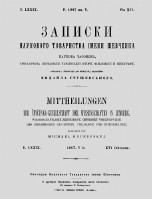
|
ZAPYSKY NAUKOVOHO TOVARYSTVA im. SHEVCHENKA. A scholarly journal of the Shevchenko Scientific Society, published from 1892 until the Second World War in Lviv. The first four issues, under the de facto editorship of Oleksander Konysky, appeared irregularly until 1894. Under the editorship of Mykhailo Hrushevsky (1895-1913; also one of the most prolific contributors), Zapysky NTSh became a prominent quarterly, then bimonthly, publication, dealing with all areas of Ukrainian studies and publishing some works in other disciplines. Most of its articles dealt with history, philology, and ethnography, and its notable sections were the bibliographies, book reviews, and chronicles of scholarly affairs. A catalog of its first 20 volumes was published in Lviv in 1898. Contributors to the Zapysky included the Western Ukrainian scholars and publicists Bohdan Barvinsky, Mykhailo Vozniak, Vasyl Herasymchuk, Volodymyr Hnatiuk, Ivan Dzhydzhora, Mykhailo Zubrytsky, Oleksander Kolessa, Myron Korduba, Oleksander Konysky, Filaret Kolessa, Ivan Krypiakevych, Stepan Rudnytsky, Ilarion Svientsitsky, Kyrylo Studynsky, Stepan Tomashivsky, Ivan Franko, and Vasyl Shchurat, and the central Ukrainian scholars Volodymyr Peretts, Oleksander Hrushevsky, Vadym Modzalevsky, Oleksander Lototsky, Serhii Maslov, and Viacheslav Lypynsky. After the First World War the publication was transformed into an irregular series of scholarly collections and monographs... |
| Zapysky Naukovoho tovarystva im. Shevchenka |
The preparation, editing, and display of the IEU entries about the Ukrainian literary and scholarly journals before 1914 were made possible by the financial support of the CANADIAN FOUNDATION FOR UKRAINIAN STUDIES.
 XX. UKRAINIAN COMPOSERS IN WESTERN UKRAINE BEFORE THE SECOND WORLD WAR
XX. UKRAINIAN COMPOSERS IN WESTERN UKRAINE BEFORE THE SECOND WORLD WAR
Ukrainian musical life in Galicia saw some significant developments in the early 19th century. The main focus of Ukrainian musical life was in Peremyshl, where a distinctive 'Peremyshl school' of choral music was initiated by Mykhailo Verbytsky and Ivan Lavrivsky. The group had close connections with the Peremyshl Choir (est 1829) and the Peremyshl Music School, and influenced the work of subsequent composers, such as Viktor Matiuk, Sydir Vorobkevych (in Bukovyna), and Anatol Vakhnianyn. A second trend in Ukrainian musical life of this period was the development of an interest in Ukrainian folk music. The general level of musical life in Western Ukraine was raised by the establishment of a singing school in Lviv, initially through the Saint Cecilia Society begun in 1826 through the efforts of Franz Xaver Mozart, and then with the founding of the Lviv Conservatory in 1830. The latter school, however, functioned largely as a Polish institution and did not actively foster Ukrainian musical development. A great influence on the development of Ukrainian music in Western Ukraine was exerted by Mykola Lysenko's work in Russian-ruled Ukraine and the Ukrainian national school of music established by him. Ukrainian music activists in Galicia were able to organize extensive studies of Ukrainian folk songs and establish printing houses for the publication of music, while the Boian music society built an effective network of musical centres throughout the region. In this milieu composers such as Filaret Kolessa, Ostap Nyzhankivsky, Denys Sichynsky, Henryk Topolnytsky, and (later) Stanyslav Liudkevych and Vasyl Barvinsky were able to come to the fore and establish a degree of professionalism in all aspects of musical culture. As well, the Lysenko Higher Institute of Music was established in Lviv in 1903 to foster further Ukrainian musical development. It was able to establish a full network throughout Galicia before it was dismantled with the Soviet invasion of 1939... Learn more about Ukrainian composers in Western Ukraine before the Second World War by visiting the following entries:
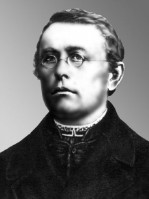
|
VERBYTSKY, MYKHAILO, b 4 March 1815 in Yavornyk Ruskyi, Sianik circle, Galicia, d 7 December 1870 in Mlyny, Yavoriv county, Galicia. Composer, conductor, and Catholic priest. Typical of the semiprofessional composers in 19th-century Galicia, he studied in the Peremyshl Cathedral Music School with A. Nanke and later took private lessons with F. Lorenz. As a choral music composer, Verbytsky was particularly strongly influenced by the tradition of choral concertos of Dmytro Bortniansky. His compositions for mixed and male choir constitute part of the 'Peremyshl school' of choral music. He composed music for the Divine Liturgy (1847) and numerous religious hymns. In the late 1840s he began writing music for theatrical performances and completed incidental music for 18 plays, operettas, and vaudevilles. He wrote several symphonies, but most of them remain unfinished. Verbytsky is best known for composing the Ukrainian national anthem Shche ne vmerla Ukraina (Ukraine Has Not Yet Perished, to a text by Pavlo Chubynsky, composed in 1862-3). His other significant contributions consist of a number of overtures and polonaises for orchestra; and choral music to texts by Taras Shevchenko, Ivan Hushalevych, Yurii Fedkovych, and Markiian Shashkevych...
|
| Mykhailo Verbytsky |
_s.jpg)
|
MANDYCHEVSKY, YEVSEVII, b 17 August 1857 in Molodiia, Chernivtsi county, Bukovyna, d 13 July 1929 in Vienna. Musicologist, composer, and conductor. A son of an Orthodox priest, Mandychevsky grew up in Chernivtsi where he studied music under Sydir Vorobkevych. He continued his studies under R. Fuchs and M. Nottebohm in Vienna, his home from 1875. In 1880 he became conductor of the Vienna Singakademie and archivist of the Gesellschaft der Musikfreunde. In 1896-1921 he was a professor at the Vienna Academy of Music as well as the Vienna Conservatory, teaching music history, composition, and instrumental science. His students included K. Boehm, G. Szell, and C. Prohaska. Mandychevsky was also engaged as a researcher, editor, and publisher of the collected works of Joseph Haydn, and worked on collections by Franz Schubert, Johann Sebastian Bach, and his close personal friend Johannes Brahms. He also wrote a study of Sydir Vorobkevych. His musical works included piano pieces, choruses, and art songs, a number of which used Ukrainian texts (such as two choral compositions to the lyrics of Taras Shevchenko)... |
| Yevsevii Mandychevsky |
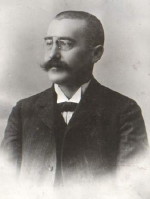
|
SICHYNSKY, DENYS, b 2 October 1865 in Kliuvyntsi, Husiatyn county, Galicia, d 6 June 1909 in Stanyslaviv. Composer, conductor, and teacher. He received his musical training in Ternopil and at the Lviv Conservatory (1888-91) and then organized and conducted the choral association Boian in Lviv, Kolomyia, Stanyslaviv, and Peremyshl. From 1899 he lived in Stanyslaviv, where he founded a music school and organized the Muzychna Biblioteka music publishing association, which printed numerous works by Ukrainian composers. He was also active in establishing the Union of Song and Music Societies. Sichynsky is considered to be the first professionally trained Ukrainian composer in Galicia. His compositions include the opera Roksoliana (libretto by V. Lutsyk and Stepan Charnetsky, 1908); works for symphony and chamber orchestras; piano solos; choral music, including the cantata Lichu v nevoli dni i nochi (I Count the Days and Nights in Bondage; text by Taras Shevchenko); a score for a liturgy; approximately 20 art songs for solo voice to texts by T. Shevchenko, Ivan Franko, Lesia Ukrainka, Bohdan Lepky, Uliana Kravchenko, and Heinrich Heine; and arrangements of folk songs. His biography, by Stefaniia Pavlyshyn, was published in Kyiv in 1956 (2nd edn, 1980). Sichynsky's complete art songs were published in Canada in 2016 by the Ukrainian Art Song Project... |
| Denys Sichynsky |
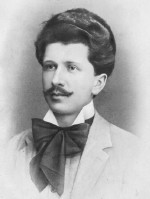
|
LIUDKEVYCH, STANYSLAV, b 24 January 1879 in Jaroslaw, d 12 September 1979 in Lviv. Composer, musicologist, folklorist, and pedagogue; member of the Shevchenko Scientific Society since 1935. He studied in Lviv under M. Soltys and in Vienna under O. Zemlinsky and H. Gredener (composition and instrumentation) and G. Adler (musicology), where he obtained a PH D in 1907 with a dissertation on program music. In 1908 he was appointed director of the Lysenko Higher Institute of Music, and in 1919 he became an inspector of its branches and a lecturer in music theory. From 1939 he taught at the Lviv Conservatory and then held the Chair of Composition until his retirement in 1972. Liudkevych began composing choral works while still a gymnasium student. His symphonic cantata The Caucasus (1902-13), inspired by Taras Shevchenko's poem, is considered one of the most eminent works in Ukrainian music of that time. He composed several other compositions for choir and orchestra. He also wrote a piano trio, minor works for the piano and the violin, solo art songs, and arrangements of folk songs and songs of the Ukrainian Sich Riflemen. In his later period, he composed several orchestral works, including symphonies and symphonic poems, and the opera Dovbush. Liudkevych played an important part in developing musical culture in Ukraine through his activity in the Boian society and in the Lysenko Higher Institute of Music. His compositions are characterized by highly professional skill and a tendency toward monumentalism and drama... |
| Stanyslav Liudkevych |
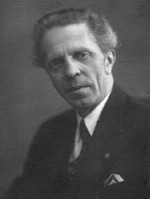
|
BARVINSKY, VASYL, b 20 February 1888 in Ternopil, d 9 June 1963 in Lviv. composer, pianist, and musicologist. Barvinsky first studied at the Lviv Conservatory and from 1908 to 1914, in Prague under V. Novak. From 1915 to 1939 Barvinsky taught at and was director of the Lysenko Higher Institute of Music in Lviv. From 1939 to 1941 and from 1944 to 1948, he was a professor at the Lviv Conservatory. He was an organizer of the musical life of Lviv, a member of the editorial board of the journal Ukrains'ka muzyka, and president of the Union of Ukrainian Professional Musicians. Barvinsky taught many pianists and composers. In 1948 he was sentenced by the Soviet authorities to ten years' imprisonment. Released in 1958, he spent most of his remaining years trying to reconstruct his works that had been destroyed by the NKVD at the time of his arrest. Barvinsky was a neoromantic composer who leaned towards impressionism, and his work was always characterized by a soft lyricism. He cultivated primarily instrumental forms. Among his works are Ukrainian Rhapsody for orchestra; string quartets; a sonata, variations, and a suite for the cello; violin pieces; and a piano concerto, a cello concerto, two trios, preludes, miniatures, a sextet, the cycle Love, and Ukrainian Suite for piano. He also wrote the vocal solos, art songs to the poetry of Ivan Franko and other poets, several cantatas, and arrangements of folk songs... |
| Vasyl Barvinsky |
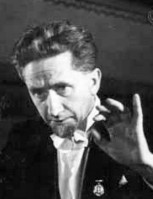
|
KOLESSA, MYKOLA, b 6 December 1903 in Sambir, Galicia, 8 June 2006 in Lviv. Composer, conductor, and educator; son of Filaret Kolessa. A graduate of the Prague Conservatory (1928) and its School of Master Artists (1931), where he studied under Vratislav Novak. In Prague he also studied harmony under Fedir Yakymenko at the Ukrainian Higher Pedagogical Institute. Kolessa taught at the Lysenko Higher Institute of Music (1931-9) and then at the Lviv Conservatory, where he also served as rector (1953-65). Among his students were Stepan Turchak and Yurii Lutsiv. At the same time he conducted the Lviv Symphony Orchestra (1940-53), the orchestra of the Lviv Theater of Opera and Ballet (1944-7), and Boian, Banduryst, and Trembita choirs. As a composer, Kolessa used Lemko and Hutsul folklore material, to which he applied modern technique. His compositions include two symphonies, The Ukrainian Suite (1928), Symphonic Variations (1931), a suite for string orchestra In the Mountains (1935), a piano quartet, a piano suite Portraits of the Hutsul Region (1934), Fantastic Prelude (1938), Autumn Prelude (1969), and other piano pieces, arrangements of folk songs, and The Lemko Wedding for a mixed choir and a string quartet. He wrote Osnovy tekhniky dyryhuvannia (The Foundation of Conducting Technique, 1960; repr, 1973)... |
| Mykola Kolessa |
The preparation, editing, and display of the IEU entries about Ukrainian composers in Western Ukraine before the Second World War were made possible by the financial support of the CANADIAN FOUNDATION FOR UKRAINIAN STUDIES.
 XXI. LES KURBAS, BEREZIL, AND THE BIRTH OF MODERN UKRAINIAN THEATER
XXI. LES KURBAS, BEREZIL, AND THE BIRTH OF MODERN UKRAINIAN THEATER
Les Kurbas (1887-1937) was not only the most important organizer and director of the Ukrainian avant-garde theater, but also one of the most outstanding European theater directors in the first half of the 20th century. Hailed by Vsevolod Meyerhold as 'the greatest living Soviet theater director' (and thus, elevated above such giants of Russian and European theater as Konstantin Stanislavsky, Alexandr Tairov, and Meyerhold himself), Kurbas worked to create a new tradition of an intellectual and philosophical theater. His Molodyi Teatr productions revolutionized Ukrainian theater (that was crippled for decades by tsarist draconian decrees and circulars), elevating it in style, esthetics, and repertoire to the level of modern European theater. Kurbas continued his search for new means of artistic expression in theater during the difficult times of revolution and war in Ukraine when he staged, with his travelling troupe Kyidramte (the Kyiv Drama Theater), such innovative performances as his first avant-garde staging of Shakespeare's Macbeth. But it was in the 1920s, at his Berezil theater, that Kurbas's creative genius became fully evident. With such productions as his staging of Georg Kaiser's Gas in 1923, Kurbas broke completely with traditional Ukrainian realist, ethnographic theater and presented spectacles that forced the audience to become active participants rather than passive observers. He combined his intellectualism and philosophical interpretation of plays with a brilliant synthesis of rhythm, movement, and avant-garde theatrical and visual devices, including the use of film, and managed to gather together the best actors, directors, set designers (eg, Vadym Meller), and playwrights (eg, Mykola Kulish) in Ukraine. At its height Berezil employed nearly four hundred people and ran six actors' studios, a directors' lab, a design studio, and a theater museum. However, Kurbas was given only several years to implement his cultural revolution. Accused by the Soviet officials of nationalism and counterrevolutionary activities, Kurbas was arrested and executed during the Stalinist terror. All of his productions were banned from the Soviet repertoire and most of his archival materials, including all of his films, were destroyed. No serious study of his artistic legacy was allowed to be published in the USSR until the late 1980s... Learn more about Les Kurbas, his brilliant creative legacy, and the birth of modern Ukrainian theater by visiting the following entries:
_s.jpg)
|
KURBAS, LES, b 25 February 1887 in Sambir, Galicia, d 3 November 1937 in Sandarmokh, Karelia region, RSFSR. Outstanding organizer and director of Ukrainian avant-garde theater, filmmaker, actor, and teacher. In 1907-8 he studied philosophy at the University of Vienna and drama with the famous Viennese actor Josef Kainz. After graduating from Lviv University in 1910, he worked as an actor in the troupes of the Hutsul Theater (1911-12) and Lviv's Ukrainska Besida Theater (1912-14), founded and directed the Ternopilski Teatralni Vechory theater in Ternopil (1915-16), and worked at Sadovsky's Theater in Kyiv (1916-17). After the February Revolution of 1917 Kurbas reorganized an actors' studio he had founded in 1916 into the Molodyi Teatr theater (1917-19). In Molodyi Teatr's productions, which included the first performance in Ukrainian of Sophocles' Oedipus Rex (1918), Kurbas revolutionized Ukrainian theater. Influenced by Henri Bergson's philosophy and the theatrical theories and experiments of Max Reinhardt, Georg Fuchs, and Edward Gordon Craig, Kurbas used Molodyi Teatr's experimental productions to develop his own style of intellectual theater to replace the traditional Ukrainian ethnographic repertoire and traditional, realist psychological theater in general. In 1919 the Bolshevik authorities forced Molodyi Teatr to merge with the State Drama Theater, and Kurbas became a codirector of the new Shevchenko First Theater of the Ukrainian Soviet Republic. There, to great acclaim, he staged an interpretation of Taras Shevchenko's epic poem Haidamaky. By 1920 the situation in Kyiv, devastated by continuous warfare, had become unbearable for actors, and Kurbas formed the Kyidramte touring theater troupe, which toured Bila Tserkva, Uman, and Kharkiv regions. Kyidramte's repertoire included the first Ukrainian-language production of a play by William Shakespeare--Macbeth, which premiered in Bila Tserkva in August 1920... |
| Les Kurbas |
 (Oedipus blind)_s.jpg)
|
MOLODYI TEATR (Young Theater). A theatre troupe in Kyiv headed by Les Kurbas from 1917 to 1919. The core group of actors consisted of graduates of the Lysenko Music and Drama School. Most of the productions were directed by Kurbas, although Hnat Yura, V. Vasilev, and Semen Semdor also directed shows. Anatol Petrytsky was the main stage designer, but Mykhailo Boichuk was invited to create sets for several important productions. Molodyi Teatr rejected the Ukrainian ethnographic repertoire and presented modern Ukrainian plays and world classics. Kurbas strived to create an intellectual and philosophical theater whose ultimate aim was to return to its ritualistic roots and to become once again some form of a religious act. His search for new forms resulted in imaginative uses of rhythm, gesture, music, and design in his productions. The first season included Kurbas's productions of the realist Black Panther and White Bear by Volodymyr Vynnychenko, the naturalistic Jugend by M. Halbe, as well as a stylized presentation of three symbolist etudes by Oleksander Oles. The second season opened with Kurbas's production of Sophocles' Oedipus Rex, the first Ukrainian production of a classical Greek play. Kurbas's subsequent productions included Lesia Ukrainka's In the Wilderness; a stylized Vertep; and performances of several lyrical poems as choral movement pieces with music, which Kurbas would later see as his first attempt to create 'transformed gestures,' the central concern of his later work. In the spring of 1919, Molodyi Teatr was nationalized by the Bolshevik government and forced to merge with the State Drama Theater to form the Shevchenko First Theater of the Ukrainian Soviet Republic. Although it lasted only two seasons, Molodyi Teatr changed the direction of Ukrainian theatre, and from its ranks came the artistic directors of the major theaters of the 1920s, including Les Kurbas, Hnat Yura, Marko Tereshchenko, and Vasyl Vasylko... |
| Molodyi Teatr |
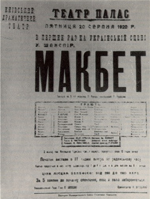
|
KYIDRAMTE or Kyiv Drama Theater. An experimental theater company formed by Les Kurbas in May 1920 from among the members of the Shevchenko First Theater of the Ukrainian Soviet Republic, who left the latter as a result of artistic differences with the director, Oleksander Zaharov. Kyidramte's 36 members included Kurbas, Danylo Antonovych, Hanna Babiivna, L. Boloban, Yanuraii Bortnyk, Vasyl Vasylko, Liubov Hakkebush, Pavlo Dolyna, P. Haivoronsky, Hnat Ihnatovych, Volodymyr Kalyn, Favst Lopatynsky, Ryta Neshchadymenko, Antonina Smereka, Valentyna Chystiakova, S. Levchenko, K. Hrai, O. Lypkivsky, and Leonid Predslavych. The company organized an acting studio and courses in directing. For a year and a half it toured the Bila Tserkva and Uman areas, performing for Red Army units and public audiences; from April to July 1921 it performed in Kharkiv as the 'Ukrainian State Exemplary Theater' under the aegis of the People's Commissariat of Education. Kyidramte's repertoire included plays originally performed by Kurbas's Molodyi Teatr theater in 1917-18: Vertep and Ukrainian versions of F. Grillparzer's Weh dem, der luegt, Sophocles' Oedipus Rex, and M. Halbe's Jugend; the first Ukrainian production of William Shakespeare's Macbeth, with Kurbas in his last stage role; C. Goldoni's Mirandolina; Haidamaky (The Haidamakas), based on Taras Shevchenko's poem; Novyi redaktor (The New Editor), based on a story by Mark Twain; plays by Nikolai Gogol, Marko Kropyvnytsky, and one-act etudes by Oleksander Oles and Stepan Vasylchenko. In July 1921 the company fell apart due to a famine in Kharkiv. Most of its actors joined Kurbas's new Berezil theater in March 1922... |
| Kyidramte |
_s.jpg)
|
BEREZIL. A theater established in 1922 under the artistic direction of Les Kurbas. Achieving recognition as Soviet Ukraine's national theater, it was located in Kyiv until 1926 and then moved to the then capital, Kharkiv. Kurbas saw Berezil as a left-leaning theater dedicated to the cause of proletarian revolution. But he never embraced a single ideology or program; instead, he insisted that Berezil was 'not dogma, but movement,' a ceaseless revolutionary search for new forms of artistic expression. Kurbas introduced a sophisticated technical and intellectual training program for Berezil's actors that emphasized rhythm and focused on 'mime-dramas' exhibiting many features of early avant-garde abstract dance. The overarching goal of Berezil's productions was the synthesis of speech, movement, gesture, music, light, and decorative art into one rhythm or simple, dramatic language. According to Kurbas, this process, which required a 'new actor' and new directorial approach, was also aimed at creating a new type of theatrical audience and society in general--'a new, not passive, person.' Despite its essential differences with expressionist theater, Berezil used formal expressionist devices in its early productions. Kurbas's staging of Kaiser's Gas (1923) in Ukrainian was Berezil's first great success, and it was hailed as ushering in 'a new era in theater.' The next period in Berezil's development was associated with its experimental productions of classic dramas in Ukrainian translation, in particular a radically original staging of Shakespeare's Macbeth (1924). Among Berezil's major achievements were Kurbas's productions of plays by the most important Ukrainian dramatist of the 1920s and 1930s, Mykola Kulish. In the late 1920s and early 1930s, Kurbas and Berezil became the targets of ever-increasing condemnation by official Soviet critics and Party functionaries. At the end of 1933, after Kurbas's dismissal as Berezil's artistic director and his subsequent arrest, Berezil was purged... |
| Berezil theatre |
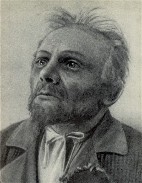
|
KRUSHELNYTSKY, MARIAN, b 18 April 1897 in Pyliava, Buchach county, Galicia, d 5 April 1963 in Kyiv. Actor and play director of Les Kurbas's school; educator. Making his stage debut in 1915 in the Ternopilski Teatralni Vechory theater, he subsequently acted in the Ukrainian Theater in Ternopil (1918, 1920-1), the New Lviv Theater (1919), the Franko New Drama Theater in Vinnytsia (1920), and the Ukrainska Besida Theater in Lviv (1922-4). Then he was one of the leading actors of the Berezil theater, and after Kurbas's arrest and the dissolution of Berezil, Krushelnytsky was appointed in 1934 artistic director and chief play director of the Kharkiv Ukrainian Drama Theater. He modified the theater's profile, particularly its repertoire, according to the demands of socialist realism: preference was given to Oleksander Korniichuk's and Liubomyr Dmyterko's plays and Russian classics. Joining the Kyiv Ukrainian Drama Theater in 1952, he eventually became its chief stage director (1954-63). After the Second World War, he also taught acting at the Kharkiv Theater Institute (1946-52) and the Kyiv Institute of Theater Arts (1952-63). He was instrumental in the process of preserving some elements of Les Kurbas's 'system' and passing them on to the next generation of actors and directors in the late 1950s and the early 1960s. As an actor Krushelnytsky distinguished himself under Les Kurbas's direction in the Berezil theater. He was particularly impressive in Mykola Kulish's plays: as Malakhii in The People's Malakhii, Uncle Taras in Myna Mazailo, and Padura in Maklena Grasa. In the post-Berezil period his better roles were comedic ones such as Kuksa in Marko Kropyvnytsky's They Made Fools of Themselves and the title role in Ivan Karpenko-Kary's Martyn Borulia. Krushelnytsky won acclaim for his original interpretation of Tevie in Tevie, the Milkman, based on the story by Sholom Aleichem, and of Lear in Shakespeare's King Lear... |
| Marian Krushelnytsky |
_s.jpg)
|
BUCHMA, AMVROSII, b 14 March 1891 in Lviv, d 6 January 1957 in Kyiv. Prominent stage and screen actor, director, and teacher. Buchma began his stage career at the Ruska Besida Theater in Lviv in 1910. In 1917 he studied at the Lysenko Music and Drama School in Kyiv. In 1920 he worked in the Franko New Drama Theater in Vinnytsia and in 1923-6 in the Berezil theater, where he played such memorable roles as Jimmie Higgins in an adaptation of Upton Sinclair's novel, Leiba in an adaptation of Taras Shevchenko's Haidamaky, Jean in Prosper Merimee's La Jacquerie, and the Fool in William Shakespeare's Macbeth. At the same time he became a film actor and later left the theater to devote himself solely to the cinema (1926-30). The main roles in which he appeared in these years were those of Jimmie Higgins, Mykola Dzheria, Taras Shevchenko, Taras Triasylo (in films of the same titles), the leading role of Hordii in The Night Coachman and the German soldier in Oleksander Dovzhenko's Arsenal. In 1930-6 Buchma returned to the Berezil theater (called the Kharkiv Ukrainian Drama Theater from 1935), and played such roles as Dudar in Ivan Mykytenko's Dictatorship and Puzyr in Ivan Karpenko-Kary's Master. From 1936 to 1954 Buchma worked as an actor and director in the Kyiv Ukrainian Drama Theater and in film. His was one of the best portrayals of Mykola Zadorozhny in Ivan Franko's Stolen Happiness. Buchma played in over 200 different roles. He depicted comic, dramatic, and tragic figures equally well. He directed the film Behind the Wall (1928) and the play Nazar Stodolia at the Kyiv Ukrainian Drama Theater in 1942. From 1940 Buchma lectured at the Kyiv Institute of Theater Arts and in 1946-8 was the artistic director of the Kyiv Artistic Film Studio... |
| Amvrosii Buchma |
The preparation, editing, and display of the IEU entries associated with the creative legacy of Les Kurbas and his Berezil and Molodyi Teatr theaters were made possible by the financial support of the CANADIAN FOUNDATION FOR UKRAINIAN STUDIES.
 XXII. THE UKRAINIAN OPERA AND FAMOUS UKRAINIAN OPERA SINGERS
XXII. THE UKRAINIAN OPERA AND FAMOUS UKRAINIAN OPERA SINGERS
The earliest operatic works by Ukrainian composers were written in the 18th century. Maksym Berezovsky's Demofonte (1773) and Dmytro Bortniansky's Creonte (1776), Alcides (1778), and Quinto Fabio (1779) were written to Italian librettos. Bortniansky also composed two French comic operas--Le Faucon (1786) and Le Fils rival (1787)--that were performed at the Russian imperial court in Saint Petersburg. Notable Ukrainian opera singers of the 18th century include Oleksii Rozumovsky, H. Holovnia, Marko Poltoratsky, and Maksym Berezovsky himself. Among the notable Ukrainian operas of the 19th century is Semen Hulak-Artemovsky's Zaporozhian Cossack beyond the Danube, the music of which is strongly influenced by Ukrainian folk songs. This opera premiered in Saint Petersburg in 1863 with the composer himself performing the title role of Karas. Since then it has become one of the most popular Ukrainian operas and has been staged by theaters in Ukraine and in the diaspora. Its roles have been sung by some of the finest Ukrainian artists, including Mykola Sadovsky, Panas Saksahansky, Marko Kropyvnytsky, Ivan Patorzhynsky, Mykhailo Donets, Mariia Donets-Tesseir, Mariia Lytvynenko-Volgemut, Mariia Sadovska-Barilotti, and Mariia Zankovetska. Other Ukrainian operas of the late 19th and early 20th centuries include Petro Sokalsky's Mazepa, The Siege of Dubno, and May Night; Mykola Arkas's Kateryna (1890); Anatol Vakhnianyn's Kupalo (1892); Denys Sichynsky's Roksoliana (1909); and H. Kozachenko's The Noble Captain (1902). In the early 20th-century some Ukrainian opera singers, such as Oleksander Mushuha and Solomiia Krushelnytska, gained international renown... Learn more about the Ukrainian opera and famous Ukrainian opera singers by visiting the following entries:
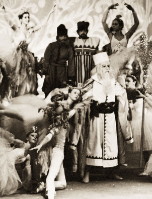
|
OPERA. The most significant Ukrainian operatic works of the 19th century were composed by Mykola Lysenko: Christmas Night (1882), The Drowned Maiden (1884), The Black Sea Cossacks (1872), the comic opera Aeneid (1910), the chamber opera Nocturne (1912), the operetta Natalka from Poltava (1889), and children's operas. Outstanding among Lysenko's repertoire is the opera Taras Bulba (1891; based on Nikolai Gogol [Mykola Hohol], libretto by Mykhailo Starytsky). It was premiered, after the composer's death, in the Kharkiv State Opera (1924). In the late 1920s, opera in Ukraine developed rapidly. This was partially because of the significant performing talent centered at the Kyiv, Kharkiv, and Odesa opera theaters. Among the works staged were Borys Liatoshynsky's The Golden Ring (1929; based on Ivan Franko's Zakhar Berkut), Valentyn Kostenko's Karmeliuk, and Pylyp Kozytsky's The Unknown Soldiers. This growth did not last, however. With the Stalinist repression of Ukrainian culture, opera was forced to adhere to the principles of socialist realism. It was required that it appeal to a mass audience, reject the influences of Western European modernism, and become a medium for ideology and propaganda. It was not until the 1960s that the Communist party's ideological pressure somewhat abated. Acclaimed Ukrainian female opera singers of the 20th century included Solomiia Krushelnytska, Yevheniia Miroshnychenko, Bela Rudenko, Zoia Haidai, Mariia Sokil, and Ira Malaniuk. Notable Ukrainian male opera singers included Oleksander Myshuha, Modest Menzinsky, Ivan Kozlovsky, Borys Hmyria, Pavlo Karmaliuk, Dmytro Hnatiuk, Myroslav Starytsky, and Anatolii Solovianenko... |
| Opera |
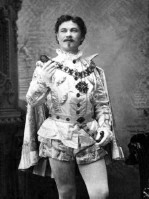
|
MYSHUHA, OLEKSANDER (stage name: Filippi), b 20 June 1853 in Novyi Vytkiv, Radekhiv county, Galicia, d 9 March 1922 in Freiburg, Germany (buried in Novyi Vytkiv). Opera and concert singer (lyric tenor), teacher, and benefactor. He studied in Nice and Milan and under W. Wysocki at the Lviv Conservatory and made his debut in Lviv (1880) in Stanislaw Moniuszko's The Haunted Castle. Myshuha was highly successful as first tenor of the Warsaw Grand Theater (1884-92), especially in operas by Moniuszko. In 1885 he appeared as a guest performer at the Vienna Imperial Opera. In addition he toured Lviv, Kyiv, Saint Petersburg, Italy, France, Berlin, and London. His recordings of art songs by Felix Mendelssohn and Francesco Tosti and of arias from Moniuszko's and Charles-Francois Gounod's operas executed for the Gramophone and Zonophone labels (ca 1911-12) are today extremely rare and highly valued collector's items. In later years Myshuha taught at the Lysenko Music and Drama School in Kyiv (1904-11), the Chopin Higher Music School in Warsaw (1911-14), the Moniuszko Music Institute in Warsaw (1912-13), and in Stockholm (from 1919). His students included Mykhailo Mykysha, S. Myrovych, and Mariia Donets-Tesseir. A friend of Ivan Franko, Myshuha assisted in the publication of his collection Ziv'iale lystia (Withered Leaves). Myshuha funded the publication of Ukrains'ke mystetstvo (Ukrainian Art) in Kyiv, actively supported Sadovsky's Theater, and left his entire estate to the Lysenko Higher Institute of Music in Lviv...
|
| Oleksander Myshuha |
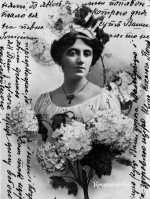
|
KRUSHELNYTSKA, SOLOMIIA, b 23 September 1872 in Biliavyntsi, Buchach county, Galicia, d 16 November 1952 in Lviv. World-famous opera singer (dramatic soprano). Upon graduating from the Lviv Conservatory (1893), where she studied under W. Wysocki, she made her debut with the Lviv Opera and went to Milan to study under Francesco Crespi (1893-6). From 1896 she performed with most of the great opera companies of Europe and South America: Odesa (1896-7), Warsaw (1898-1902), Saint Petersburg (1901-2), Paris (1902), Naples (1902, 1904), Rome (1904-5), Milan (La Scala, 1898, 1904, 1907, 1909, 1915), and Buenos Aires (1906, 1908, 1910-13). Her performance as Aida (1903) was a triumph, and her rendition of the title role in Giacomo Puccini's Madame Butterfly in 1904 contributed to its admission to the world repertoire. Because of her and Arturo Toscanini, Richard Strauss's Salome was a great success at La Scala (1906). Her operatic repertoire numbered close to 60 roles. Many of the performances in which she starred were conducted by A. Toscanini. Krushelnytska combined a colorful voice of great range (three octaves) with a fiery temperament and enormous acting ability. In the mid-1920s she turned from opera to concert recitals. Her concert repertoire included works by Claudio Monteverdi, Christoph Gluck, Wolfgang Amadeus Mozart, Modest Mussorgsky, Mykola Lysenko, Denys Sichynsky, and Stanyslav Liudkevych. Returning to Lviv in 1939, she taught solo singing at the Lviv Conservatory (1944-52)... |
| Solomiia Krushelnytska |
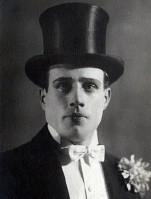
|
KOZLOVSKY, IVAN, b 24 March 1900 in Marianivka, Vasylkiv county, Kyiv gubernia, d 24 December 1993 in Moscow. Opera and concert singer (lyrical tenor). A graduate of the Lysenko Music and Drama Institute in Kyiv (1919), he performed as a soloist in the Poltava Touring Music and Drama Theater, the Kharkiv opera theater (Kharkiv Theater of Opera and Ballet) (1924), the Sverdlovsk opera theater (1925), and the Bolshoi Theater in Moscow (1926-54). His major roles were Lensky in Peter Tchaikovsky's Eugene Onegin, the Fool in Modest Mussorgsky's Boris Godunov, Levko in Nikolai Rimsky-Korsakov's A May Night and Berendei in his Snow Maiden, and the title roles in Richard Wagner's Lohengrin and Jules Massenet's Werther. His Ukrainian repertoire included Levko in Mykola Lysenko's The Drowned Girl and Petro in his Natalka from Poltava, Andrii in Mykola Arkas's Kateryna, and Andrii in Semen Hulak-Artemovsky's Zaporozhian Cossack beyond the Danube. He began giving concerts in 1919, including in them arias from Ukrainian operas and art songs by Ukrainian, Russian, and other composers, such as Ludwig van Beethoven, Franz Schubert, Robert Schumann, and Franz Liszt. His recordings have earned him an outstanding reputation in the United States. He was awarded the Shevchenko Prize in 1990... |
| Ivan Kozlovsky |
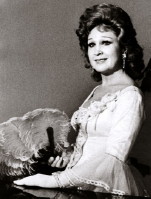
|
MIROSHNICHENKO, YEVHENIIA, b 12 June 1931 in Radianske (now Hrafske), Vovchansk raion, Kharkiv okruha, d 27 April 2009 in Kyiv. Opera singer (lyric-coloratura soprano). She completed her studies at the Kyiv Conservatory (1957, pupil of Mariia Donets-Tesseir), and then, between 1957 and 1997, performed as a soloist with the Kyiv Theater of Opera and Ballet. Her major roles were Violetta in Giuseppe Verdi's La Traviata, Rosina in Gioachino Rossini's The Barber of Seville, Venus in Mykola Lysenko's Aeneas, Martha in Nikolai Rimsky-Korsakov's The Tsar's Bride, Iolan in Heorhii Maiboroda's Mylana, and the title role in Gaetano Donizetti's Lucia di Lammermoor. She received an award at the International Vocal Competition in Toulouse, France (1958), and studied at Milan's La Scala. She performed as a concert soloist in the Soviet Union, Ukraine, and abroad, in Poland, Bulgaria, Yugoslavia, France, Canada, and Japan. She recorded operatic arias, Ukrainian classical compositions, and folk songs on LPs and in films. She was awarded the Shevchenko Prize in 1972... |
| Yevheniia Miroshnichenko |
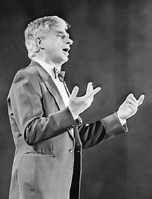
|
SOLOVIANENKO, ANATOLII, b 25 September 1932 in Staline (now Donetsk), d 29 July 1999 in Kozyn, Kyiv oblast. Opera singer (lyric-dramatic tenor). A graduate of the Donetsk Polytechnical Institute (1954), he studied singing under O. Korobeichenko (1952-62), obtained a scholarship to Milan's La Scala, and completed study at the Kyiv Conservatory (1978). From 1965 and he was a soloist of the Kyiv Theater of Opera and Ballet. His operatic roles include Andrii in Semen Hulak-Artemovsky's Zaporozhian Cossack beyond the Danube, Petro in Mykola Lysenko's Natalka from Poltava, Lensky in Peter Tchaikovsky's Eugene Onegin, Edgar in Gaetano Donizetti's Lucia di Lammermoor, Alfredo in Giuseppe Verdi's La Traviata, and Rodolfo in Giacomo Puccini's La Boheme. He has concertized abroad, including with the New York Metropolitan Opera (1977-8). In recital he often performed Ukrainian art songs and folk songs. He was awarded the Shevchenko Prize in 1997... |
| Anatolii Solovianenko |
The preparation, editing, and display of the IEU entries about the Ukrainian opera and famous Ukrainian opera singers were made possible by the financial support of the CANADIAN FOUNDATION FOR UKRAINIAN STUDIES.
 XXIII. MODERNIST MUSIC IN SOVIET UKRAINE: THE 1920s GENERATION
XXIII. MODERNIST MUSIC IN SOVIET UKRAINE: THE 1920s GENERATION
The establishment of Soviet power in Ukraine in the early 1920s proved to be a mixed blessing for musical development. State support for the art has strengthened the music education system, underwritten the printing of musical journals and scores, and provided steady employment for musicians, composers, and music critics. The state, however, most often fostered mediocre work in its demand for ideological conformity and in its effort to maintain socialist realism as a cultural policy. The most open period for musical composition in Soviet Ukraine was the 1920s, before the onset of Stalinism. A major body for the promotion of Ukrainian musical development at that time was the Leontovych Music Society, which was formed in 1922 and sponsored the flagship music journal Muzyka. Several very talented young composers appeared at that time and developed into pivotal figures in the history of Ukrainian music. The most prominent among them were Borys Liatoshynsky, Lev Revutsky, Pylyp Kozytsky, Mykhailo Verykivsky, Viktor Kosenko, and Yulii Meitus. The Leontovych society was dissolved in 1928 as a result of government pressure and in the 1930s the Soviet regime established the concept of socialist realism as a norm for artistic activity. The majority of Soviet Ukrainian composers were coerced to produce lackluster works dedicated to the glory of the Communist Party and its leaders. In spite of these constrictions, some composers, most notably Borys Liatoshynsky, continued to compose musical works of the highest calibre... Learn more about the modernist music in Soviet Ukraine in the 1920s by visiting the following entries:
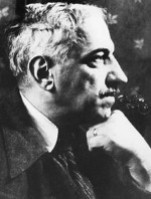
|
LIATOSHYNSKY, BORYS, b 3 January 1895 in Zhytomyr, d 15 April 1968 in Kyiv. Composer and teacher. He graduated in law from Kyiv University in 1918, and then in music (studying under Reinhold Gliere) from the Kyiv Conservatory in 1919. He lectured at the conservatory from 1920 and was appointed professor of composition there in 1935. Liatoshynsky is one of the initiators and main representatives of the modern school in Ukrainian music, using expressionistic style and atonal technique. His mastery of composition and instrumentation is shown throughout his repertoire. His contribution to Ukrainian music lies in a skillful blending of Ukrainian themes with contemporary European style. In spite of a harsh criticism of his work by the Party critics and the official ban on such compositions as his Symphony No. 2, Liatoshynsky did not compromise and never adhered to the style of socialist realism. Together with Lev Revutsky, he exerted a profound influence on Ukrainian composers of the younger generation. Among his students were such prominent composers as Valentyn Sylvestrov, Leonid Hrabovsky, Yevhen Stankovych, and others... |
| Borys Liatoshynsky |
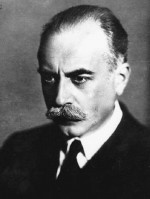
|
REVUTSKY, LEV, b 20 February 1889 in Irzhavets, Pryluky county, Poltava gubernia, d 30 March 1977 in Kyiv. Composer, teacher, music activist. He graduated from the Kyiv Conservatory in 1916, having studied with Mykola Lysenko, Hryhorii Liubomyrsky, Hryhorii Khodorovsky, and Reinhold Gliere. After being appointed in 1924 to the Lysenko Music and Drama Institute in Kyiv, Revutsky reached the height of his composing career. His compositions were innovative and continued the trend of the Ukrainian national school into the Soviet era. His two symphonies (1920 and 1926), which showed his keen ear for orchestral color, were notable developments in Ukrainian music. His chamber and piano works (preludes for piano, works for violin and cello with piano) displayed a fresh musical language, influenced by impressionism, and technical skill. With the escalation of Stalinist terror in 1934, Revutsky was severely criticized by the authorities for his Piano Concerto No. 2. He subsequently stopped composing new music and focused his energies in the area of teaching... |
| Lev Revutsky |
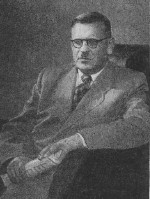
|
KOZYTSKY, PYLYP, b 23 October 1893 in Letychivka, Lypovets county, Kyiv gubernia, d 27 April 1960 in Kyiv. Composer and educator. A graduate of the Kyiv Theological Academy (1917) and the Kyiv Conservatory (1920), where he studied under Boleslav Yavorsky and Reinhold Gliere, he taught at the Lysenko Music and Drama Institute in Kyiv (1918-24), the Kharkiv Music and Drama Institute (1925-35), and the Kyiv Conservatory. He was a founding member of the Leontovych Music Society, whose magazines Muzyka (1923-7) and Muzyka masam (1928-31) he edited, and president of the Union of Composers of Ukraine (1952-6). His works include two operas, the orchestral suite Kozak Holota (1925), a symphonic poem, string quartets, preludes for piano, choral works, church music, arrangements of folk songs, and film and drama scores (notably, to some productions of Les Kurbas' Berezil theater). Influenced by expressionism, Kozytsky's work often draws upon Ukrainian folk songs and is tied to the national school of Ukrainian classical music, established by Mykola Lysenko... |
| Pylyp Kozytsky |
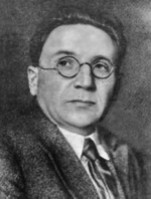
|
VERYKIVSKY, MYKHAILO, b 20 November 1896 in Kremianets, Volhynia gubernia, d 14 June 1962 in Kyiv. Composer, conductor, and teacher. He graduated from the Kyiv Conservatory (1923) in the composition class of Boleslav Yavorsky and then conducted the orchestras of the Kyiv Opera (1926-8), the Kharkiv Opera (1928-35), and symphony orchestras in Kyiv, Kharkiv, Moscow, and Ufa. He also taught at the Lysenko Music and Drama Institute and the Kyiv Conservatory. His works include the ballet Pan Kanovsky (1930, 2nd edn 1953); the Taras Shevchenko-based operas The Captain (1938) and The Servant Girl (1940); operas to texts by Leonid Hlibov, Mykhailo Kotsiubynsky, and Ostap Vyshnia; an oratorio on Marusia Bohuslavka; five cantatas; a concerto for piano and orchestra (1950); a number of orchestral works; a large body of piano music; chamber and church music; original choral works and arrangements of Ukrainian folk songs for chorus; and about 70 original solo art songs and settings of Ukrainian folk songs for voice and piano... |
| Mykhailo Verykivsky |
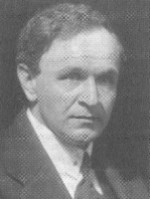
|
KOSENKO, VIKTOR, b 23 November 1896 in Saint Petersburg, d 3 October 1938 in Kyiv. Pianist, composer, and educator. A child prodigy pianist, student of A. Michalowski in Warsaw, and a graduate of the Petrograd Conservatory (1918), where he studied under Ivan Myklashevsky, Kosenko began to lecture at the Zhytomyr Music Tekhnikum in 1918, at the Lysenko Music and Drama Institute in 1929, and at the Kyiv Conservatory in 1934. At the same time he gave piano concerts in different cities of Ukraine. His works, influenced by the neoclassical tradition in music, include a sonata for cello and piano (1923), Classical Trio for piano, violin, and cello (1927), a sonata for violin and piano (1927), Heroic Overture (1932), Moldavian Poem (1937), a piano concerto, three piano sonatas, a trio, a violin concerto, about 100 piano pieces, including 24 pieces for children (1936), and many art songs... |
| Viktor Kosenko |
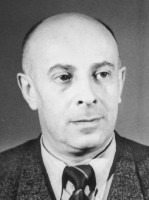
|
MEITUS, YULII, b 28 January 1903 in Yelysavethrad (now Kirovohrad), d 2 April 1997 in Kyiv. Composer. A graduate of the Kharkiv Music and Drama Institute (1931) in the class of Semen Bohatyrov, he worked as a composer for his entire life. His works include 14 operas, most notably Perekop (1939-40) and Haidamaky (1940-1) (both composed with Vsevolod Rybalchenko and Mykhailo Tits), Abadan (composed with A. Kuliev, 1942-3), Star over the Dvina (1951-5), Stolen Happiness (1958-9) based on the drama by Ivan Franko, and Yaroslav the Wise (1973); five orchestral suites; choral and choral-orchestral works on Ukrainian and Turkmen folk themes; art songs to texts by Taras Shevchenko, Ivan Franko, and others; and music for the theater (most notably, for 13 of Les Kurbas' productions in the Berezil theater) and films. Fairly modern in style, Meitus is a notable representative of 20th-century Ukrainian music and in particular Ukrainian opera... |
| Yulii Meitus |
The preparation, editing, and display of the IEU entries associated with the Ukrainian modernist music of the 1920's generation were made possible by the financial support of the CANADIAN FOUNDATION FOR UKRAINIAN STUDIES.
The tradition of Ukrainian poetic cinema originated with the work of the film director Oleksander Dovzhenko and, in particular, with his film Zvenyhora (1927), originally scripted by Yurii Tiutiunnyk and Maik Yohansen. This film is considered to mark the beginning of Ukrainian national cinematography. At the same time, with his rich lyricism and the poetic power of his symbolic scenes and landscapes, Dovzhenko created a unique phenomenon in world cinema and was hailed as the 'first poet of the cinema.' Zvenyhora was followed by Dovzhenko's Arsenal (1929) and Zemlia (The Earth, 1930). These and other Ukrainian silent films of the 1920s marked a considerable technical and artistic achievement in the history of silent film. Many of them were attacked by the official critics for nationalist deviations and were banned in the early 1930s. Ivan Kavaleridze's film Zlyva (The Downpour, 1929) was criticized with particular severity for its attempt to present the epic of the Haidamaka uprisings and for its experiments with innovations in form and film technique. The end of silent films in the history of the Ukrainian cinema coincided with the beginning of the Stalinist campaign to crush Ukrainian culture, including the cinema. Until the 1950s the standard film was a Party-approved socialist-realist adaptation of a literary work about a Soviet civil war hero. Ukrainian history was distorted and the artistic quality of films dramatically declined. It was not until the 1960s that the Ukrainian poetic cinema tradition was revived in 1964 with the brilliant film adaptation of Mykhailo Kotsiubynsky's novel Tini zabutykh predkiv (Shadows of Forgotten Ancestors), directed by Serhii Paradzhanov, camera work by Yurii Illienko, which won numerous awards at international film festivals. However, this original Ukrainian tradition was immediately attacked by the Communist Party and Soviet censorship. Two outstanding early films directed by Yurii Illienko were banned from distribution, while most other significant film projects were closed down during production or released in highly censored versions. In spite of this government interference, several remarkable examples of the Ukrainian poetic cinema were produced in the 1960s through 1980s, including Kaminnyi khrest (The Stone Cross, 1968) by Leonid Osyka, Bilyi ptakh z chornoiu oznakoiu (White Bird with a Black Spot, 1972) by Yurii Illienko, and Vavylon-XX (Babylon-XX, 1979) by Ivan Mykolaichuk... Learn more about the Ukrainian poetic cinema by visiting the following entries:
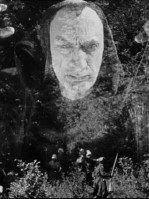
|
DOVZHENKO, OLEKSANDER, b 10 September 1894 in the village of Sosnytsia, Chernihiv gubernia, d 25 November 1956 in Moscow. Film director and screenwriter. During the struggle for independence (1917-20) Dovzhenko participated in the revolutionary events in Kyiv and in 1919-20 belonged to the Borotbists party. In 1921-3 he worked in Warsaw and Berlin as a member of Ukrainian diplomatic missions. He had begun studying painting in Berlin and continued to paint in Kharkiv. In 1926 Dovzhenko began to work as a film director at the Odesa Artistic Film Studio. Drawing on Ukrainian history, in 1927 he created the film Zvenyhora, which is considered to mark the beginning of Ukrainian national cinematography. Dovzhenko's expressionist film Arsenal (1929) is devoted to the revolutionary events in Kyiv in 1918. His last silent movie, Zemlia (The Earth, 1930), dealing with the collectivization drive in Ukraine, is a masterpiece. Dovzhenko was severely criticized as a Ukrainian nationalist for this film and for his next film, Ivan (1932), about the building of the Dnieper Dam. He was forced to move to Moscow, where he lived as if in exile until his death. In 1948 he made his last film, Zhyttia v tsvitu (Life in Bloom), which was devoted to botanist Ivan Michurin. Dovzhenko's films earned him a reputation as 'first poet of the cinema' and as one of the world's leading film directors. An international jury in 1958 ranked his Zemlia among the 12 best films in world cinematography... |
| Oleksander Dovzhenko |
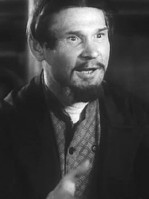
|
KAVALERIDZE, IVAN, , b 26 April 1887 at Ladanskyi khutir near Romny, Kharkiv gubernia, d 3 December 1978 in Kyiv. Sculptor, film director, dramatist, and screenwriter. He studied art at the Kyiv Art School (1907-9), the Saint Petersburg Academy of Arts (1909-10), and with N. Aronson in Paris (1910-11). His sculptures include busts of famous people such as F. Chaliapin (1909), and over 100 monuments in various cities of Ukraine: eg, the monument to Princess Olha in Kyiv (1911); the Taras Shevchenko monuments in Kyiv (1918), Romny (1918), Poltava (1925), and Sumy (1926); and the Hryhorii Skovoroda monuments in Lokhvytsia (1922) and Kyiv (1977). In the 1920s his work was influenced by cubism. His group compositions--Bohdan Khmelnytsky Sends the Kobza Players into the Villages (1954) or Prometheus (1962)--are somewhat stylized. In 1928 he became interested in filmmaking. He scripted and directed a number of innovative historical films marked by stylization and monumentalism: Zlyva (The Downpour, 1929), Perekop (1930), and Prometei (Prometheus, 1936). Accused of 'nationalist deviation' and formalism, he was forced to turn to popular themes and a simplified style. He adapted the operas: Mykola Lysenko's Natalka Poltavka (Natalka from Poltava, 1936) and Semen Hulak-Artemovsky's Zaporozhets' za Dunaiem (Zaporozhian Cossack beyond the Danube, 1938) for film. After the Second World War he directed the films Hryhorii Skovoroda (1960) and Poviia (The Strumpet, 1961) based on Panas Myrny's novel...
|
| Ivan Kavaleridze |
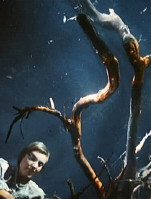
|
PARADZHANOV, SERHII, (also Parajanov, Sergei; Paradzhanian, Sarkis), b 9 January 1924 in Tbilisi, Georgia, d 21 July 1990 in Yerevan, Armenian SSR. Armenian and Ukrainian film director. He graduated from the State Institute of Cinema Arts in Moscow (1951) and began working at the Kyiv Artistic Film Studio, where he created several short films and musicals. International acclaim came to Paradzhanov in 1964 after the screening of Tini zabutykh predkiv (Shadows of Forgotten Ancestors, based on Mykhailo Kotsiubynsky's novella). It was awarded 16 prizes in all at international film festivals for its magnificent combination of camera work (by Yurii Illienko) with atonal music (by Myroslav Skoryk), bright colors, masterful editing, and brilliant acting (with Ivan Mykolaichuk playing the lead role). In 1965-8 Paradzhanov was harassed for writing letters of protest against the unlawful arrests of intellectuals. He moved to Armenia and experimented in a new cinema technique of superimposition of different colors (The Color of Pomegranates, 1969). In 1971 he returned to Kyiv and began working on Kyivs'ki fresky (Kyivan Frescoes), but the filming was stopped, and he was arrested in 1973 on spurious charges and sentenced to 15 years' imprisonment. In 1977, after international pressure was applied, Paradzhanov was released from prison, only to be arrested again in 1982. His work was restricted as a result of the arrest; nevertheless, in 1984 he produced the film The Legend of Surami Fortress and later coauthored the screenplay Swan Lake: The Zone, which was directed by Yurii Illienko (1989)... |
| Serhii Paradzhanov |
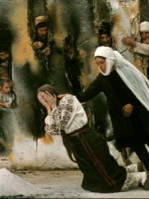
|
ILLIENKO, YURII, b 18 July 1936 in Cherkasy, d 15 June 2010 in Prokhorivka, Cherkasy oblast. Film director and cinematographer. His camera work in Serhii Paradzhanov's Tini zabutykh predkiv (Shadows of Forgotten Ancestors, 1964) earned him international recognition. Illienko made his debut as a film director with the black-and-white Krynytsia dlia sprahlykh (A Well for the Thirsty, 1966), but the film was banned by Soviet censors. His second film: his adaptation of Nikolai Gogol's stories Vechir na Ivana Kupala (The Eve of Ivan Kupalo, 1967) was accepted for competition at the Venice Film Festival, but the USSR Ministry of Culture did not release it and soon afterwards banned the film. Then Illienko co-scripted (with Ivan Mykolaichuk) and directed Bilyi ptakh z chornoiu oznakoiu (White Bird with a Black Mark, 1971), which won a gold medal at the Moscow International Film Festival. His other films include Lisova pisnia--Mavka (The Forest Song: Mavka, 1980), Lehenda pro kniahyniu Ol'hu (The Legend of Princess Olha, 1983), and Lebedyne ozero. Zona (Swan Lake. The Zone, 1990) that won two major awards at the Cannes Film Festival. Illienko's last feature film was the experimental Molytva za het'mana Mazepu (Prayer for Hetman Mazepa, 2002). Illienko's highly personal cinema was deeply rooted in Ukrainian history and folklore. His original cinematographic style used subjective camera and explored the diverse potentialities of color. His oeuvre sets Illienko apart from the majority of his contemporary Ukrainian filmmakers and makes him one of the most accomplished masters of Ukrainian cinema... |
| Yurii Illienko |
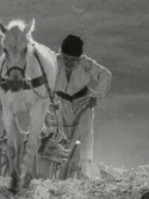
|
OSYKA, LEONID, b 8 March 1940 in Kyiv, d 16 September 2001 in Kyiv. Film director. He graduated from the State Institute of Cinema Arts in Moscow (1966). Among his films are a poetic cinema version of Vasyl Stefanyk's novellas called Kaminnyi khrest (The Stone Cross, 1968) and the heroic epic cinema version of Ivan Franko's Zakhar Berkut (1972), as well as Tryvozhnyi misiats' veresen' (The Alarming Month of September, 1977), More (The Sea, 1978), a film about the painter Mikhail Vrubel Etiudy pro Vrubelia (Etudes about Vrubel, 1989), a cinema version of Mykhailo Kotsiubynsky's story Podarunok na imenymy (A Name Day Gift, 1991), and a film Het'mans'ki kleinody (Hetman's Jewels, 1993), based on a novel by Bohdan Lepky. Osyka was awarded the Shevchenko Prize in 1997. Documentary films about Osyka include Druh mii Lion'ka (My Friend Lionka, 2004) by Timur Zoloev and Leonid Osyka (2013) by Nataliia Kalatranova... |
| Leonid Osyka |
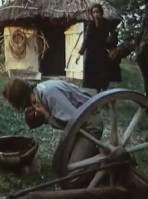
|
MYKOLAICHUK, IVAN, b 15 June 1941 in Chortoryia, Bukovyna, d 3 August 1987 in Kyiv. Film actor, screenwriter, and director. In 1957 he completed drama studies at the Chernivtsi Ukrainian Music and Drama Theater, and in 1965 he graduated from the Kyiv Institute of Theater Arts. From 1965 he worked in the Kyiv Artistic Film Studio. Following the esthetic traditions of Oleksander Dovzhenko, he gave intense, realistic portrayals of archetypal and historical characters in films such as Son (The Dream, based on Taras Shevchenko's poem, directed by Volodymyr Denysenko, 1964), Tini zabutykh predkiv (Shadows of Forgotten Ancestors, directed by Serhii Paradzhanov, 1964), Zakhar Berkut (directed by Leonid Osyka, 1972), Bilyi ptakh z chornoiu oznakoiu (A White Bird with a Black Mark, 1972, written with Yurii Illienko), and Vavilon-XX (Babylon-XX, 1979, based on a novel by Vasyl Zemliak), which he himself directed. On the basis of Mykolaichuk's script Illienko directed the film Mriiaty i zhyty (To Dream and Live, 1975). Mykolaichuk also directed the film Taka piznia, taka, tepla osin' (Such a Late, Such a Warm Autumn, 1982, written with Vitalii Korotych). A book of memoirs about Mykolaichuk, interview with him, and his scenarios was published in Kyiv in 1991... |
| Ivan Mykolaichuk |
The preparation, editing, and display of the IEU entries about the Ukrainian poetic cinema were made possible by the financial support of the STEPHEN AND OLGA PAWLUK UKRAINIAN STUDIES ENDOWMENT FUND at the Canadian Institute of Ukrainian Studies (Edmonton, AB, Canada).
 XXV. THE UKRAINIAN MUSIC OF THE SOCIALIST REALIST PERIOD (1930s-1950s)
XXV. THE UKRAINIAN MUSIC OF THE SOCIALIST REALIST PERIOD (1930s-1950s)
The establishment of Soviet power in Ukraine in the 1920s has proved to be a mixed blessing for musical development in Ukraine. On the one hand, state support for the art has strengthened the music education system, underwritten the printing of music journals and scores, and provided steady employment for musicians, composers, and music critics. On the other hand, however, the state has consistently fostered mediocre work in its demand for ideological conformity, especially after the consolidation of power in the hands of Joseph Stalin and the intensification of political control in the USSR in the 1930s. In the early 1930s socialist-realism was introduced as the only officially sanctioned so-called 'creative method' in Soviet literature, art, and music. Although it was more difficult to enforce the principles of this 'method' in music compared to literature or art, composers were consistently compelled to renounce 'formalist' experimentations and simplify their musical language in order to become 'closer to the working masses.' The Party-controlled Union of Soviet Composers, established in 1932, sought to 'educate' its members politically and ideologically and impose control over their creative output. Consequently, a large repertoire of lackluster works dedicated to Vladimir Lenin, the glory of the Communist Party, the memory of the Second World War, heroic women workers, and like themes were commissioned over the years. In spite of these constrictions, composers such as Lev Revutsky, Borys Liatoshynsky, Vasyl Barvinsky, Stanyslav Liudkevych, Viktor Kosenko, Valentyn Kostenko, Borys Yanovsky, Andrii Shtoharenko, Kostiantyn Dankevych, Yulii Meitus, Heorhii Maiboroda, Roman Simovych, Mykola Kolessa, and Anatol Kos-Anatolsky produced interesting and challenging works even during the most difficult period of the 1930s-1950s. This ideological pressure eased only in the 1960s, which allowed for the emergence of a new generation of Ukrainian composers... Learn more about the Ukrainian music of the socialist-realist period (1930s-1950s) by visiting the following entries:
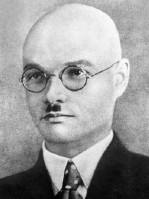
|
KOSTENKO, VALENTYN, b 28 July 1895 in Urazovo, Valuiki county, Voronezh gubernia, d 14 July 1960 in Kharkiv. Composer, musicologist, and educator. As a youth he sang in the court kapelle in Saint Petersburg, and in 1921 he graduated from the Saint Petersburg Conservatory. From 1923 he taught at the Kharkiv Music and Drama Institute and served as musical director of Kharkiv Ukrainian Radio. In 1927-32 he headed the Association of Revolutionary Composers of Ukraine. His compositions, which were influenced by contemporary European music, include the operas Karmeliuk, Nazar Stodolia (based on the play by Taras Shevchenko), and The Carpathians; the ballet Reborn Steppe; the symphony The Year 1917; a suite for symphony orchestra; violin, piano, and choral pieces; and six string quartets. His scholarly publications include studies of Pavlo Senytsia (1922), the role of folk songs in Ukrainian music (1928), and the influence of German expressionism on Ukrainian music (1929). He also prepared a textbook on musical theory... |
| Valentyn Kostenko |
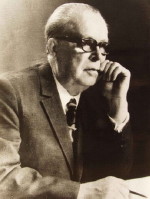
|
SHTOHARENKO, ANDRII, b 15 October 1902 in Novi Kaidaky, now part of Dnipro, d 15 November 1992 in Kyiv. Composer and pedagogue. In 1912 he entered the Russian Music Society's music school in Katerynoslav. He organized his own orchestra in Dnipropetrovsk during the 1920s and taught singing in high schools. Shtoharenko was recruited in 1930 to study composition with Semen Bohatyrov at the Kharkiv Conservatory. He graduated in 1936 and gained immediate recognition with the symphonic cantata Pro kanal's'ki roboty (About the Canal Work, 1936). He occupied several key administrative positions in the musical hierarchy of the Ukrainian Soviet Socialist Republic. In 1944 he became vice-chairman of the Union of Composers of Ukraine, and in 1948-54 he was vice-chairman of the USSR Union of Composers. In 1954-68 he was a teacher of composition and rector of the Kyiv Conservatory. In 1968 he became head of the Faculty of Composition there and head of the Union of Composers of Ukraine. Shtoharenko's works include the symphonic cantata Ukraino moia (My Ukraine, 1943), the Kyiv Symphony (1972), symphonic suites, a violin concerto, chamber and choral pieces, art songs, incidental music, and film scores. His biography, by M. Borovyk, was published in Kyiv in 1965. He was awarded the Shevchenko State Prize in 1974...
|
| Andrii Shtoharenko |
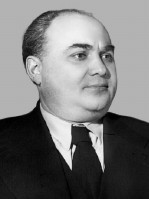
|
DANKEVYCH, KOSTIANTYN, b 24 December 1905 in Odesa, d 26 February 1984 in Kyiv. Composer, conductor, pedagogue. On graduating from the Odesa Institute of Music and Drama (now the Odesa State Music Academy) in 1929, he joined its staff. He became a professor there in 1948, serving as its director until 1951; in 1953 he took up a professorship at the Kyiv Conservatory. From 1956 to 1967 he was head of the Union of Composers of Ukraine. His works include the operas Trahediina nich (Tragic Night, 1935), Bohdan Khmelnytsky (1951; new version, 1953), and Nazar Stodolia (1960); the ballet Lileia (Lily, 1939); two symphonies (1937, 1945); the symphonic poems Otello (Othello, 1937) and Taras Shevchenko (1939); a string quartet; a trio; choral works; and film scores and art songs for solo voice. M. Mykhailov wrote a monograph on Dankevych (Kyiv 1959, 1964, 1974)... |
| Kostiantyn Dankevych |
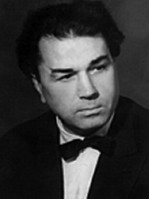
|
MAIBORODA, HEORHII, b 1 December 1913 at Pelekhivshchyna khutir, Kremenchuk county, Poltava gubernia, d 7 December 1992 in Kyiv. Composer. A student of Lev Revutsky, he graduated from (1941; graduate studies, 1949) and taught at (1952-8) the Kyiv Conservatory. In 1967-8 he served as head of the Union of Composers of Ukraine, and in 1967, 1971, and 1975 as deputy to the Supreme Soviet of the Ukrainian SSR. His works commonly use heroic and patriotic themes in monumental forms, and achieved wide recognition among Soviet state authorities and the general public. He composed the operas Mylana (1957), Arsenal (1960), Taras Shevchenko (1964), and Yaroslav the Wise (1973); three symphonies (1940, 1952, 1976); a concerto for voice and orchestra (1969); the symphonic poems Lily, (text by Taras Shevchenko, 1939) and Kameniari (Stone-cutters, text by Ivan Franko, 1941); the vocal-symphonic poem Zaporozhians (text by Liubov Zabashta, 1954); and the orchestral Hutsul Rhapsody (1949). He also wrote songs to texts by Volodymyr Sosiura, Teren Masenko, Adam Mickiewicz, Lesia Ukrainka, I. Franko, and Pavlo Tychyna, as well as incidental music for William Shakespeare's Hamlet and King Lear. Together with L. Revutsky he edited and orchestrated piano and violin concertos by Viktor Kosenko. He was awarded the Shevchenko State Prize in 1963... |
| Heorhii Maiboroda |
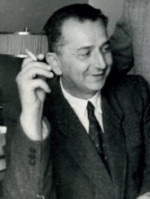
|
SIMOVYCH, ROMAN, b 28 February 1901 in Sniatyn, Galicia, d 30 July 1984 in Lviv. Composer and teacher. He graduated in composition and piano from the Prague Conservatory in 1933 and completed its Master School in 1936 in the composition class of V. Novak. From 1936 he taught at the Lysenko Higher Institute of Music in Drohobych and Stanyslaviv. From 1951 he lectured at the Lviv Conservatory (professor in 1963). His compositions include the ballet Dovbush's Sopilka (1948), seven symphonies (including the Hutsul [no. 1] and the Lemko [no. 2]); the symphonic poems Maksym Kryvonis (1954), Dovbush (1955), and In Memory of Ivan Franko (1956); overtures for symphony orchestra; a string quartet; numerous works for piano (two trios and two sonatas, three suites, a sonatina, and a fantasia); and works for choir with orchestra and for choir a cappella... |
| Roman Simovych |
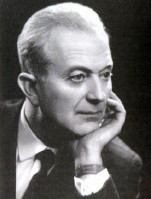
|
KOS-ANATOLSKY, ANATOL (real surname: Kos), b 1 December 1909 in Kolomyia, Galicia, d 30 November 1983 in Lviv. Composer and educator. A graduate of the law faculty of Lviv University (1931) and Lviv Conservatory (1934), he taught at the Stryi Branch of the Lysenko Higher Institute of Music (1934-7) and later at the Lviv Conservatory (1952-83). His works include the opera To Meet the Sun (1957, revised as The Fiery Sky, 1959); the ballets Dovbush's Kerchief (1951), The Jay's Wing (1956), and Orysia (1964); the operetta Spring Storms (1960); the cantatas It Passed a Long Time Ago (1961) and The Immortal Testament (1963); the oratorio From the Niagara to the Dnieper (1969); two piano concertos and two violin concertos; chamber music; piano pieces; and choral works. He was awarded the Shevchenko State Prize in 1980... |
| Anatol Kos-Anatolsky |
The preparation, editing, and display of the IEU entries about the Ukrainian music of the socialist-realist period (1930s-1950s) were made possible by the financial support of the CANADIAN FOUNDATION FOR UKRAINIAN STUDIES.
 XXVI. UKRAINIAN COMPOSERS OF THE 1960s GENERATION
XXVI. UKRAINIAN COMPOSERS OF THE 1960s GENERATION
In the 1930s the Soviet regime established the concept of socialist realism as a norm for artistic activity in all areas of culture, including music. The result was a wholesale retreat from the modernist approach to music and composing that flourished in Ukraine in the 1920s. This ideological pressure eased somewhat only in the 1960s. The relaxation allowed for a whole group of young composers to use the newest means of musical expression. Many of these composers were students of Borys Liatoshynsky at the Kyiv Conservatory, as Liatoshynsky, together with Lev Revutsky, exerted a profound influence on the next generation of Ukrainian composers. In the early 1960s, some of Liatoshynsky's students, including Leonid Hrabovsky, Valentyn Sylvestrov, Vitalii Hodziatsky, Volodymyr Zahortsev, and Volodymyr Huba, became fascinated with modernist compositional techniques that were proscribed in the USSR. They formed a group that went by the name 'Kyiv Avant-Garde' and the appearance of this group created much interest abroad, especially in the United States, although in Kyiv their achievements did not reach beyond a narrow circle of listeners. Other young composers, such as Myroslav Skoryk, Lesia Dychko, and, among the younger generation, Yevhen Stankovych, Ivan Karabyts, and others have created original syntheses of the traditional with the modern and formed a loose group of composers known as 'the Neofolkloric Wave.' These two currents in the Ukrainian music of the 1960s, complemented by the work of other composers from various cities and representing different musical trends, created a remarkable revival of Ukrainian music in the second half of the 20th century... Learn more about the Ukrainian composers of the 1960s generation by visiting the following entries:
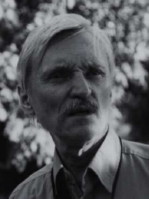
|
HRABOVSKY, LEONID, b 28 January 1935 in Kyiv. Composer. Hrabovsky studied composition first under Lev Revutsky and then under Borys Liatoshynsky at the Kyiv Conservatory (1954-59). He later taught at the conservatory in 1961-3 and 1966-8. Hrabovsky's compositional debut, Four Ukrainian Folk Songs for mixed chorus and symphony orchestra (1959), were awarded first prize at an all-Union music competition in 1962 and won high praise from Dimitri Shostakovich. Not interested in working within the officially sanctioned Soviet style of socialist realism, Hrabovsky initially composed in the dodecaphonist and aleatoric techniques. An avid student of classical and modernist theories of composition, he translated several Western music theory textbooks and quickly established a reputation as a innovative composer, associated with the 'Kyiv Avant-Garde.' As opposed to his colleague, Valentyn Sylvestrov, who worked with avant-garde techniques, but retained a characteristically lyrical expression, Hrabovsky became interested in serial music and composition methods based on mathematical algorithms. The most accomplished composition in this technique was his Concerto misterioso (1977), based on the melodic structures of Ukrainian folk songs and dedicated to the memory of the folk painter Kateryna Bilokur. Hrabovsky's music was harshly criticized in the Soviet press in the 1960s and 1970s and his works were hardly ever performed in Ukraine. He made a living by composing music to films produced at the Kyiv Artistic Film Studio. Eventually, Hrabovsky was forced to leave Kyiv for Moscow and in 1990 he emigrated to the United States... |
| Leonid Hrabovsky |
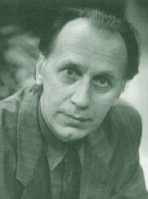
|
SYLVESTROV, VALENTYN (Silvestrov, Valentin), b 30 September 1937 in Kyiv. Composer. He studied composition under Borys Liatoshynsky and counterpoint under Lev Revutsky at the Kyiv Conservatory (1958-64). Working in a modernist idiom, he quickly established a reputation as one of several innovative musicians of the 'Kyiv Avant-Garde.' In many of his works he adopted dodecaphonist and avant-garde techniques, at the same time retaining a characteristically lyrical expression. Sylvestrov's music was harshly criticized in the Soviet press in the 1960s and 1970s and he was temporarily excluded from the Composers Union of Ukraine. His works were hardly ever performed in Ukraine, but several successful performances in the Russian FSSR attracted attention of the music critics. Sylvestrov soon developed an international reputation, winning the International Koussevitsky Prize (USA, 1967) and the International Young Composers' Competition Gaudeamus (Holland, 1970). In the 1970s, with his cycle of art songs Tykhi pisni (Quiet Songs), Sylvestrov moved away from the conventional techniques of the Western avant-garde and developed a slow-moving, tonally-rooted musical language imbued with a deep sense of mysticism. He later developed a style, somewhat akin to Western post-modernism, which he termed 'metamusic' (short for 'metaphorical music'). In the 2000s, by then a world-renowned composer, Sylvestrov moved even further away from the Western avant-garde by composing cycles of tonally-based, melodic bagatellen for piano as well as liturgical music for choir a capella, closely linked to the tradition of Ukrainian church music...
|
| Valentyn Sylvestrov (Silvestrov) |
_s.jpg)
|
SKORYK, MYROSLAV, b 13 July 1938 in Lviv. Composer, conductor, and musicologist. His exceptional musical talent was recognized in his childhood by his great aunt, the famous opera singer Solomiia Krushelnytska, who encouraged Myroslav's parents to enrol him in a music school. However, his education was interrupted in 1947 when, during the wave of postwar Stalinist repressions, the Skoryk family was arrested by the Soviet authorities and exiled to Siberia. Skoryk was able to return to Lviv only in 1955. He graduated (1960) from the Lviv Conservatory in the classes of Adam Soltys, Stanyslav Liudkevych, and Roman Simovych and then completed graduate studies (1964) at the Moscow Conservatory in the composition class of Dmitri Kabalevsky. He subsequently lectured in composition at the Lviv Conservatory (1964-6) and the Kyiv Conservatory (1966-88), returning to Lviv in 1988. Since 1999 Skoryk has been professor of the history of Ukrainian music at the National Music Academy of Ukraine. In 2004-10 he was co-head (with Yevhen Stankovych) of the National Union of Composers of Ukraine. He was awarded the Shevchenko Prize in 1987. One of the most notable contemporary Ukrainian composers, Skoryk has written two ballets, the opera Moses (2001, based on the poem by Ivan Franko), Hutsul Triptych (1965, based on his film score to Serhii Paradzhanov's Shadows of Forgotten Ancestors), Carpathian Concerto (1972), the symphonic work 1933, and the Penitential Psalm (2015) in honour of the "Heavenly Hundred." He has also written 9 concertos for violin, 3 concertos for piano, 2 concertos for violoncello, and one concerto for viola; chamber music; and film scores. Deeply inspired by Ukrainian musical folklore, in the 1960s Skoryk was the leader of a group of composers known as 'the Neofolkloric Wave'... |
| Myroslav Skoryk |
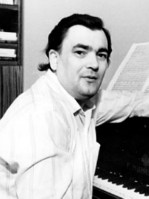
|
STANKOVYCH, YEVHEN, b 19 September 1942 in Svaliava, Berehove county, Transcarpathia. Composer. He studied at the Lviv Conservatory under Adam Soltys before transferring to the Kyiv Conservatory where he studied under Borys Liatoshynsky and Myroslav Skoryk and graduated in composition in 1970. He worked as an editor at the Muzychna Ukraina publishing house in 1970-6. He was awarded the Shevchenko Prize in 1977. He has worked as professor at the Kyiv Conservatory (now National Music Academy of Ukraine) since 1988. In 2004-10 he was co-head (with Myroslav Skoryk) of the National Union of Composers of Ukraine. One of the most prolific contemporary Ukrainian composers, Stankovych has written six symphonies and several symphonic works, including Overture, Fantasia, two sinfoniettas, and a symphonic poem dedicated to Stepan Turchak; three violin concertos as well as concertos for violoncello and orchestra, viola and orchestra, and flute and orchestra; eight symphonies for chamber orchestra. He has composed the triptych In the Highlands for violin and pianoforte, three sonatas for violoncello and piano, a string quartet, and numerous other works of chamber music. Deeply inspired by Ukrainian musical folklore, in the 1960s Stankovych belonged to a group of composers known as 'the Neofolkloric Wave.' His neofolkloric idiom found its most eloquent expression in his folk opera Tsvit paporoti (The Flower, Fern, 1980). He has also composed three ballets, the requiem Babyn Yar (1991), and Slovo o polku Ihorevim for soloists, choir and symphony orchestra; pieces for solo voice and for choir; church music; and film scores... |
| Yevhen Stankovych |
_s.jpg)
|
DYCHKO, LESIA (Ljudmyla), b 24 October 1939 in Kyiv. Composer. In 1964 Dychko graduated from the Kyiv Conservatory where she studied under Kostiantyn Dankevych and Borys Liatoshynsky. One of the leading Ukrainian composers of choir music, she was awarded the Shevchenko Prize in 1989. She has taught at the Kyiv Conservatory (now National Music Academy of Ukraine) since 1994 and became professor in 2009. Her works include two operas, two oratorios, four ballets; works for orchestra and chorus, most notably the symphony Pryvitannia zhyttia (Welcoming Life) for soprano, bass, and chamber orchestra, based on the words of the imagist poet Bohdan Ihor Antonych, and Viter revoliutsii (Wind of the Revolution) based on the poems of Maksym Rylsky and Pavlo Tychyna; numerous cantatas to the words of Taras Shevchenko, Mykola Vinhranovsky, and other poets; choir concertos and two choir poems: Holod - 33 (Famine 1933; based on the words of S. Kolomiiets) and Lebedi materynstva (The Swans of Motherhood; based on the poems by Vasyl Symonenko); music for piano; and film scores. Dychko was one of the first Ukrainian composers in Soviet Ukraine of the 1980s to begin composing church music and she has composed three liturgies... |
| Lesia Dychko |
_s.jpg)
|
KARABYTS, IVAN, b 17 January 1945 in Yalta, Pershotravneve raion, Donetsk oblast, d 20 January 2002 in Kyiv. Composer and conductor. A graduate of the Kyiv Conservatory (1971) and a student of Borys Liatoshynsky and Myroslav Skoryk, he conducted the Song and Dance Ensemble of the Kyiv Military District (1968-74), taught at the Kyiv Conservatory, and then served as artistic director of the Kyiv Camerata (Kyivska kamerata). From 1989 to 2001 he was artistic director of the Kyiv Music Fest international music festival. His compositions include a cycle of 24 preludes for piano, a piano trio, 3 concertos for orchestra, 3 art song cycles for voice and piano (including Pastels to the words of Pavlo Tychyna), the oratorio Charming the Fire, the opera-oratorio Kyiv Frescoes, a cantata based on Hryhorii Skovoroda's poem collection Sad bozhestvennykh pisen' (The Garden of Divine Songs), and several film scores... |
| Ivan Karabyts |
The preparation, editing, and display of the IEU entries about the Ukrainian composers of the 1960s generation were made possible by the financial support of the CANADIAN FOUNDATION FOR UKRAINIAN STUDIES.
In the period of Kyivan Rus' valuable private collections belonged to the Kyivan, Galician-Volhynian, and appanage princes. The only artifacts that could be seen by the general public were the artworks gracing cathedrals and monasteries and those held in sacristies. Many churches in Ukraine amassed large collections of artifacts. The sacristies of the Saint Sophia Cathedral, the Kyivan Cave Monastery, the Saint Michael's Golden-Domed Monastery, and the Cathedral of the Transfiguration in Chernihiv are known to have contained priceless collections. Incursions by nomadic tribes and internecine fighting among the princes caused considerable damage to those holdings. The greatest losses were sustained during the Mongol-Tatar invasions of the 13th century, which only individual artifacts survived. In the 14th to 17th centuries countless ornamented implements and artworks were assembled in the castles of magnates and on the estates of lords. Many of them were destroyed in the uprisings of the mid-17th century. For subsequent times, lists of holdings in the collections of various palaces, including paintings, furniture, and decorative tableware, are extant. The renewed accumulation of artifacts was a reflection of the Ukrainian national and cultural revival in the 18th century. The most distinguished patron of the time was Hetman Ivan Mazepa. In the late 18th century a numismatic collection already existed at the Basilian school in Uman. In 1809 an archeological collection was opened in Mykolaiv. Similar museums were opened in Teodosiia (1811), Odesa (1825), and Kerch (1826). Of them the Odesa Municipal Museum of Antiquities had the most valuable collection; it later became the first public museum in the Russian Empire. Formal schools of museology were established in the late 18th and early 19th century. The first museum to be established in Kyiv was the Archeological Museum at Kyiv University (est 1835). The Church-Archeological Society at the Kyiv Theological Academy organized the Kyiv Museum of Church Antiquities, with a large and valuable collection of artifacts (approximately 20,000), in 1872. In Western Ukraine, priceless collections of icons, old manuscripts, tapestries, coins, archeological artifacts, and folk art were assembled by the Shevchenko Scientific Society (founded in 1873, its collection opened as an independent museum in 1914), the Stauropegion Institute (founded in 1788, its collection opened as a museum in 1889), and the National Museum in Lviv (reorganized in 1908 from the church museum of Metropolitan Andrei Sheptytsky)... Learn more about museums in Ukraine by visiting the following entries:
_s.jpg)
|
MUSEUMS. Institutions for art objects, antiquities, and other cultural goods that have been divested of their sacred and functional qualities. In museums they serve the secondary purposes of preservation, classification, and education. Ukrainian museum development in central and eastern Ukraine reached its zenith in the 1920s. The country's museums consolidated, organized, and exhibited perhaps the finest examples of Ukraine's cultural heritage. In 1923 the Kyiv Museum of Church Antiquities was transferred to the Kyivan Cave Monastery, and in 1926 the All-Ukrainian Museum Quarter was established there which was later reorganized as the Kyivan Cave Historical-Cultural Preserve. The role of a national Ukrainian museum was assumed by the All-Ukrainian Historical Museum, founded in 1924 with the collections of the Kyiv City Museum of Antiquities and Art. Other prominent museums included the Kharkiv Museum of Ukrainian Art and the museum of the All-Ukrainian Academy of Sciences. In the Stalinist terror of the 1930s all the aforementioned institutions, as well as a substantial number of lesser ones, were liquidated, and their employees were persecuted and arrested. During the interwar period, Ukrainian museums were maintained systematically and continued to develop only in Western Ukraine and in the diaspora. Western Ukrainian scholars established a network of regional studies museums, encompassing the Hutsul region, Boiko region, Lemko region, and Sokal region. In Prague the Museum of Ukraine's Struggle for Independence was founded in 1925... |
| Museums |
_s.jpg)
|
NATIONAL ART MUSEUM OF UKRAINE. The central art museum of Ukraine. It was founded in 1936 when the holdings of the All-Ukrainian Historical Museum were divided into a historical and an art collection. The former became the basis of the Kyiv Historical Museum (now National Museum of the History of Ukraine), the latter of the Kyiv State Museum of Ukrainian Art, which was renamed Kyiv Museum of Ukrainian Art in 1953. From 1954 to 1964 a collection of Ukrainian folk art, which became the Kyiv Museum of Ukrainian Decorative Folk Art, constituted a branch of the Kyiv Museum of Ukrainian Art. In 1994 the museum was granted a national museum status and assumed its present name. It is divided into three sections: old Ukrainian art, 19th- and early-20th-century Ukrainian art, and the Ukrainian art of the 20th century. The first encompasses artistic works from the 12th to the 18th centuries: rare icons, 17th- and 18th-century portraits, folk paintings of Kozak-Mamai, and fine prints and samples of the earliest Ukrainian sculptures. The second section, devoted to the 19th and early 20th centuries, contains some valuable works of the portraitists Dmytro H. Levytsky and Volodymyr Borovykovsky; the works of Taras Shevchenko and his followers; the paintings and portraits of Oleksander Murashko; the landscapes of Serhii Vasylkivsky, etc. The 20th-century art section features paintings done in the 1920s and 1930s by such masters as Vasyl H. Krychevsky, Fedir Krychevsky, Oleksander Bohomazov, Mykhailo Boichuk, Davyd Burliuk, Alexandra Ekster, Viktor Palmov, and many others. The museum holds about 40,000 items...
|
| National Art Museum of Ukraine |
_s.jpg)
|
NATIONAL MUSEUM IN LVIV. A museum in Lviv, founded as a church museum in 1905 by Metropolitan Andrei Sheptytsky. It was expanded, named the National Museum in 1909, placed under the authority of independent curators, and moved in 1911 to the building bought by Sheptytsky. In 1939 to 1990 it was called the Lviv Museum of Ukrainian Art. Before the Second World War, the National Museum had departments of archeology, folk art, church antiquities, modern Ukrainian art, monuments of cultural history, numismatics, and sphragistics; a major library; and an invaluable collection of over 1,600 manuscript books and 2,400 early printed books. The folk-art department boasted a valuable collection of 17th- and 18th-century kilims, Easter eggs, tapestries, and embroidery. The church antiquities department housed the largest extant collection of 14th- to 18th-century Galician icons, wooden engraved crosses, and iconostases. The modern Ukrainian art department possessed works of 19th- and early 20th-century painters, such as Alexander Archipenko, Mykhailo Boichuk, Oleksa Novakivsky, and many others. Under Soviet rule, in the 1940s, the National Museum's historical, numismatic, sphragistic, and archeological collections were transferred to the Lviv Historical Museum; part of its folk-art collection was transferred to the Ukrainian State Museum of Ethnography and Crafts; and the collection of paintings by Western European masters was transferred to the Lviv Art Gallery. In 1952 over 2,100 artworks, including sculptures by Alexander Archipenko and paintings by Mykhailo Boichuk, and 4,500 books were confiscated as 'ideologically harmful' by local Communist Party officials and destroyed. Today the National Museum contains over 100,000 objects... |
| National Museum |
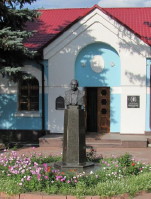
|
MEMORIAL MUSEUMS. During the 20th century many museums dedicated to the lives and contributions of prominent figures were created in Ukraine, usually in buildings where the persons so honored had lived or worked. Besides over 25 state-funded literary memorial museums dedicated to prominent Ukrainian writers, other state-funded museums were established to commemorate (1) scholars and scientists, such as the Dmytro Yavornytsky Museum in Dnipro (est 1964) or the Hryhorii Skovoroda museums in Skovorodynivka near Zolochiv, Kharkiv oblast, Chornukhy, Poltava oblast, and Pereiaslav; (2) artists, such as the Ilia Repin Museum in Chuhuiv, Kharkiv oblast (est 1969) or the Oleksa Novakivsky Museum in Lviv (est 1972); (3) composers, such as the Viktor Kosenko Museum in Kyiv (est 1964) and the Mykola Lysenko Museum in Kyiv (est 1980); (4) actors and performers, such as the Les Kurbas Museum in Staryi Skalat, Ternopil oblast (est 1988) or the Solomiia Krushelnytska Museum in Bila, Ternopil raion (est 1963); etc. The most numerous are the literary memorial museums featuring collections of documents, manuscripts, printed works, monuments, photographs, and personal effects of noted Ukrainian writers usually established in buildings where those writers lived. Among them the Mykhailo Kotsiubynsky museums in Vinnytsia (est 1927) and Chernihiv (est 1935); the Nikolai Gogol (Mykola Hohol) Museum in Velyki Sorochyntsi, Poltava oblast (est 1929); the Taras Shevchenko National Museum in Kyiv (est 1949); the Ivan Franko Literary Memorial Museum in Lviv (est 1940); the Olha Kobylianska Museum in Chernivtsi (est 1944); and many others. A few are also preserves, such as the Lesia Ukrainka Museum-Homestead in Kolodiazhne, Kovel raion, Volhynia oblast (est 1949)... |
| Memorial museums |
_s.jpg)
|
REGIONAL STUDIES MUSEUMS. Cultural, educational, and scientific institutions that collect, preserve, exhibit, and study monuments of a region's natural, archeological, ethnic, artistic, and political development. In Ukraine museums of regional history appeared in the 19th century: in Mykolaiv (1806), Odesa (1825), Kerch (1826), Kyiv (1835), Katerynoslav (1849), Chernivtsi (1863), Simferopol (1887), Kherson (1890), Poltava (1891), Lviv (1893), and Chernihiv (1897). Their basic collections consisted of artifacts from archeological excavations; those were supplemented gradually with historical, ethnographic, natural, and artistic materials. The first founders of such museums were Oleksander Pol, Oleksander Lazarevsky, Filaret Gumilevsky, and Dmytro Yavornytsky. During a period of official suppression of Ukrainian culture the regional studies museums reminded people of Ukraine's rich historical legacy. After 1917-18 new regional studies museums were organized from the collections of various associations, church communities. They developed rapidly in the 1920s, but during the Stalinist terror of the 1930s many of them became inactive, and some were closed down. Regional studies museums are divided into two main groups: state museums, which are fully government-supported, and community museums, which are funded by a local community. The latter group are run by volunteers who are concerned about the preservation of cultural monuments. In 2005 there were 115 state regional studies museums in Ukraine. The more important ones are in Poltava, Rivne, Kherson, Luhansk, Ivano-Frankivsk, Cherkasy (est 1918, five branches, 106,000 exhibits), Zaporizhia, Khmelnytskyi (est 1925, four branches, 57,000 exhibits), Odesa (est 1955, seven branches, 50,000 exhibits), and others... |
| Regional studies museums |
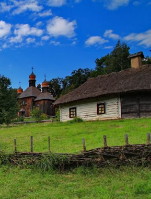
|
MUSEUMS OF FOLK ARCHITECTURE AND FOLKWAYS. The name of skansens or open-air museums in Ukraine. Open-air museums were introduced in Sweden in 1891 as offering an effective way of preserving folk architecture. By 1982, they had spread from there, and numbered more than 2,000 in Europe alone. In Ukraine there are 5 central and over 20 local and regional open-air museums. Most of them were built in the 1970s and 1980s on the model of foreign museums. Considered an important educational source, they are state-supported. Ukrainian open-air museums are devoted mostly to peasant cottages, with their furnishings and farm buildings, from the 19th and early 20th century. Churches, bell towers, schools, artisans' workshops, mills, and related structures occupy an important place in the museums. Virtually all of the buildings are original; replicas or reconstructions are the exception. The farms are stocked with livestock and fowl, and fields are planted with the local grains and vegetables. Trees and wild plants typical of the region are maintained. Women in regional folk dress take care of the artifacts on display, and craftsmen, such as weavers, smiths, potters, and shingle makers, demonstrate old techniques in the workshops. These activities convey an impression of daily life. The museums often host concerts, festivals, souvenir markets, and thematic exhibits. The largest museum of folk architecture and folkways in the former USSR is in Kyiv. Its construction began in 1971 on a 150-ha site in a forest and park zone of the Pyrohiv district in Kyiv. The Lviv Museum of Folk Architecture and Folkways occupies 67 ha of the Shevchenko Park. Its territory is divided into eight historical-ethnographic zones. Each zone includes 15 to 20 buildings which constitute a distinctive miniature village... |
| Museums of folk architecture and folkways |
The preparation, editing, and display of the IEU entries about museums in Ukraine were made possible by the financial support of the CANADIAN FOUNDATION FOR UKRAINIAN STUDIES.
 XXVIII. THE UKRAINIAN ACADEMY OF SCIENCES
XXVIII. THE UKRAINIAN ACADEMY OF SCIENCES
The idea of a national Ukrainian academy of sciences was first broached by the Ukrainian Scientific Society in Kyiv following the February Revolution of 1917. The project, however, was realized only in 1918 in much changed circumstances under the government of Hetman Pavlo Skoropadsky in the Ukrainian State. According to its statute, the academy was to be located in Kyiv and divided into three divisions: historical-philological, physical-mathematical, and social-economic. Its publications were to be in Ukrainian. The statute emphasized the all-Ukrainian character of the academy: not only citizens of the Ukrainian State but also Ukrainians of Western Ukraine, then a part of Austria-Hungary, could be full members. Prominent geochemist Volodymyr Vernadsky was the academy's first president. After the Bolsheviks assumed power in Ukraine, the academy was renamed the All-Ukrainian Academy of Sciences in 1921. With the beginning of Ukrainization and the return of Mykhailo Hrushevsky from abroad in 1924, the academy expanded its work and published a number of first-rate historical and other scholarly and scientific works. However, beginning in 1928, the authorities increased their control over the academy by interfering directly and even brutally in its organization and scholarly work. Their purpose was to transform it into a Soviet institution imbued with the official ideology of Marxism-Leninism. Most of the institutions of the academy that were headed by Hrushevsky at the beginning of the 1930s were abolished, and the historian himself was deported to Moscow. In 1930-1 VUAN was 'purged' of many of its associates and all the academy's serial publications in the humanities were discontinued. The repressions against the academy reached a peak during Pavel Postyshev's regime in 1933-4. Over 250 research associates of the academy, including 22 academicians, were repressed in the 1930s, the largest number being in the humanities. After the German invasion of the USSR in 1941 the academy was evacuated to Ufa. It returned to Kyiv in 1944. In 1962 Borys Paton, a specialist in electric welding, became the academy's president. In the following year the academy was directly subordinated to the Academy of Sciences of the USSR and reorganized on the pattern of its 'parent body.' The academy was reorganized again following Ukraine's proclamation of independence in 1991 and renamed the National Academy of Sciences of Ukraine... Learn more about the history and current activities of the Ukrainian Academy of Sciences by visiting the following entries:
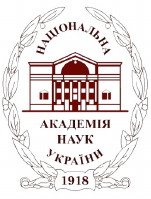
|
NATIONAL ACADEMY OF SCIENCES OF UKRAINE. The highest institution of learning in Ukraine. As of 2016 the National Academy of Sciences of Ukraine (NANU) is comprised of three sections--physical-technological and mathematical sciences; chemical and biological sciences; and social sciences and humanities--which unite fourteen branches of sciences: mathematics; information science; mechanics; physics and astronomy; earth sciences; physicotechnical problems and material science; physicotechnical problems in energetics; nuclear physics; chemistry; biochemistry, physiology, and molecular biology; general biology; economics; history, philosophy, and law; literature, language, and art history. Five regional scientific centers are run jointly by the Academy and the Ministry of Education and Science, including Donetsk (now located in Kramatorsk), Western (Lviv), Southern (Odesa), Northeastern (Kharkiv), Dnipro region (Dnipro), and the Innovation center in Kyiv. The main elements of NANU's organizational structure continue to be the so-called scientific-research institutes and other research centers of a similar type. NANU also operates several national libraries, museums, and nature preserves and parks. It also runs a number of industrial enterprises, among them the so-called research plants, engineering and design departments, and computer centers. The structure of the academy encompasses 168 scientific institutes and 46 entities that combine research and manufacturing. The total number of employees working within NANU in 2016 was 37,447 individuals, among them 18,346 scientists, including 2,530 scientists with doctoral degrees and 7,603 with candidate degrees. NANU's membership includes 197 full members (academicians), 370 corresponding members, and 104 foreign members... |
| National Academy of Sciences of Ukraine |
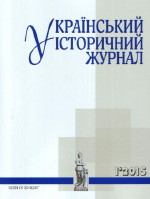
|
INSTITUTE OF THE HISTORY OF UKRAINE. Research institute established in 1936 out of various liquidated institutions of the All-Ukrainian Academy of Sciences (VUAN). The antecedents of the institute were the Historical Section and its chairs and commissions, and the Historical Society of Nestor the Chronicler in the VUAN historical-philological division. By 1924 the section had a Chair of Ukrainian History (directed by Mykhailo Hrushevsky) in Kyiv and another (directed by Dmytro Bahalii) in Kharkiv, and several other chairs. The invaluable work of all these institutions was cut short during the Stalinist terror of the early 1930s. Many historians were killed or sent to the GULAG; the historical-philological division was closed down; and virtually all research and publishing were halted. A Historical-Archeological Institute was established in 1934 to fight 'Ukrainian bourgeois historiography.' However, during the post-Stalin thaw in the 1960s the institute became one of the focal points of the Soviet Ukrainian cultural revival; a great deal of new research on Ukrainian history was conducted, and many fundamental Stalinist historiographic concepts were criticized and modified. After Ukraine gained independence in 1991, the institute became free of the Soviet ideological constraints. Today it consists of eleven departments and, since 1991, it has focused its research on the following topics: Kyivan Rus' and the Middle Ages; the social and cultural history of the early modern Ukraine; the Cossack Hetman State and its political legacy; the Ukrainian Revolution, 1917-21, the early Soviet period, and the Famine-Genocide of 1932-3; the history of Ukrainian intelligentsia and the dissident movement; and Ukraine during the Second World War...
|
| Institute of the History of Ukraine |
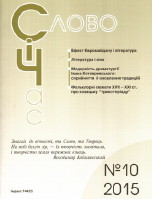
|
INSTITUTE OF LITERATURE. A research institute where research on the history of Ukrainian literature, particularly on the works of Taras Shevchenko, is conducted and published. It was founded in Kharkiv in 1926 as the Taras Shevchenko Scientific Research Institute. During the first few years of the institute's existence, significant research on Shevchenko was carried out, but in the early 1930s his works began to be falsified to fit preconceived interpretations. From 1944 the institute has been the co-ordinating center for all literary studies in Soviet Ukraine. Possessing a huge collection of manuscripts (over 100,000), after the Second World War the institute published a series of 'collected' works by Ukraine's classical writer. The preparation of surveys and textbooks of Ukrainian literature has been a central function of the institute. Since the late 1980s the institute has prioritized the study of the early twentieth-century Ukrainian literature, especially the so-called Executed Renaissance, as well as the legacy of the Shistdesiatnyky generation and Soviet dissident poets. Numerous works of the writers who perished during the Stalinist terror or whose works were inaccessible to readers during Soviet rule have been republished. Over the years the institute has expanded significantly. As of 2017 it consists of seven sections: manuscript collections and textual criticisms; the history of Ukrainian literature; the twentieth-century Ukrainian literature and contemporary literary process; Taras Shevchenko studies; literary theory and comparative literature; world literature; and scholarly information. It also contains several scholarly centers, including that of American studies; German studies; Far Eastern studies; and fantasy fiction... Its official periodical is a monthly journal Slovo i chas... |
| Institute of Literature |
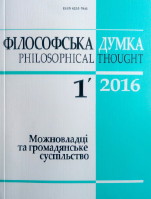
|
INSTITUTE OF PHILOSOPHY. Principal center for philosophical studies in Ukraine, founded in Kyiv in November 1946 to conduct and co-ordinate research in philosophy and to prepare specialists in the field. In the Soviet times the institute had 13 departments, some of which had little to do with philosophy, such as dialectical materialism, philosophical questions of scientific communism, scientific atheism, etc. In the 1960s to 1980s there has been a strong emphasis on research with an immediate practical application in education, the economy, or the building of a communist society. Its most important and interesting philosophical contributions were in the fields of philosophy of science and the history of philosophy in Ukraine. The institute's publication of scholarly editions of the collected works of Hryhorii Skovoroda and the translated works of Teofan Prokopovych, and some textbooks from philosophy courses given at the Kyivan Mohyla Academy in the 17th and 18th centuries, have had a lasting significance for the history of philosophy. Since the late 1980s--early 1990s the institute has significantly broadened the areas of philosophical inquiry and become one of the leading intellectual venues in Ukraine. Specifically the history of philosophy in Ukraine has received a renewed attention from the institute's scholars. As of 2017 the institute has 8 departments: logic and methodology of science; philosophical anthropology; philosophical problems of natural sciences and ecology; social philosophy; philosophy of culture, ethics, and esthetics; history of philosophy in Ukraine; history of philosophy abroad; and philosophical problems of ethnicity and nationality. It also includes a section of religious studies. The institute's main periodical is Filosofs'ka dumka (since 1969)... |
| Institute of Philosophy |
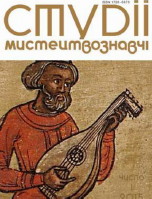
|
INSTITUTE OF FINE ARTS, FOLKLORE, AND ETHNOLOGY. A leading Ukrainian research institute founded in 1936 under the name the Institute of Ukrainian Folklore. It replaced several departments of the All-Ukrainian Academy of Sciences abolished by the Stalinist regime. In the prewar Stalinist period its main focus was the collection and study of new 'Soviet' folklore and providing assistance to those who created it. After the Soviet occupation of Galicia, in November 1939 a branch of the institute was created out of the abolished Ethnographic Commission of the Shevchenko Scientific Society and headed by Filaret Kolessa. After the outbreak of the German-Soviet War, in July 1941 the institute was evacuated to Ufa, Bashkiria. In March 1944 it was substantially reorganized and re-established in Kyiv under the name Institute of Fine Arts, Folklore, and Ethnography under the directorship of Maksym Rylsky. During the Soviet period, the institute's policies and research were largely subject to non-scholarly, Soviet political considerations. In independent Ukraine after 1991 the institute's primary fields of research have been history and ethnography of Ukrainian culture; history and theory of professional and folk arts; and folklore and folk arts of foreign countries. The institute's scholars have conducted extensive folkloric and ethnographic research in various parts of Ukraine and also compiled an electronic database of Ukraine's ethnic cultures. Today the institute consists of the Ukrainian Ethnological Center and four departments: visual, decorative, and applied arts; Ukrainian and foreign folklore; musicology and ethnomusicology; cinema and theater arts and cultural studies... |
| Institute of Fine Arts, Folklore, and Ethnology |
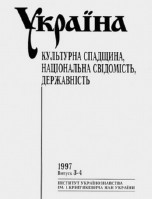
|
INSTITUTE OF UKRAINIAN STUDIES. The institute was organized in Lviv in 1951 as the Institute of Social Sciences out of the Lviv branches of various institutes of the Academy of Sciences of the Ukrainian SSR that had been established in 1940-1 in place of the Shevchenko Scientific Society dissolved by the Soviet government. During the cultural revival of the 1960s the institute became one of the main centers of interdisciplinary studies in western Ukraine, particularly in history of Ukraine, archeology, folklore, ethnography, and economics. It published a number of seminal monographs and collective works on the history of material culture, on ancient populations of Subcarpathia and Volhynia, on Ukrainian historical lexicology and lexicography, and on the archeology of Galicia. After suffering a decline during the repressions of the 1970s, the institute experienced a revival in the 1980s and particularly in the 1990s, after a noted historian Yaroslav Isaievych became head of the institute in 1989 and later, after the institute was reorganized in 1993 and assumed its present name. The institute consists of seven departments: archeology (including the Archeological Museum); the history of the Middle Ages; modern history of Ukraine; contemporary history, with a section devoted to the study of the Ukrainian national movement in the 20th century; Ukrainian literature; Ukrainian language; and the Center for the Study of Ukrainian-Polish relations. In recent decades the institute's scholars have published a number of important studies in the fields of Ukrainian history, archeology, cultural studies, and philology... |
| Institute of Ukrainian Studies |
The preparation, editing, and display of the IEU entries about the history and current activities of the Ukrainian Academy of Sciences were made possible by the financial support of the W. K. LYPYNSKY EAST EUROPEAN RESEARCH INSTITUTE (USA).
ABOUT IEU: The Internet Encyclopedia of Ukraine is the most comprehensive source of authoritative information in English on Ukraine, its history, culture, geography, society, diaspora, and political administration. A project of the Canadian Institute of Ukrainian Studies, it contains thousands of carefully researched articles by some of the leading specialists in Ukrainian studies and other relevant disciplines. The textual content is complemented with tens of thousands of photographs, illustrations, maps, and tables as well as music files. At the same time, the IEU is a constant work in progress. At present, some 62% of the entire planned IEU database is available on the IEU website. New entries are being edited, updated, and added daily. But our ability to provide this information and the speed with which we can make it available to Internet users worldwide greatly depends on the availability of financial resources. You can actively contribute to the success of the Internet Encyclopedia of Ukraine by supporting our work morally and financially. Become an IEU supporter and help the CIUS in creating the world's most authoritative electronic information resource about Ukraine and Ukrainians!
|
Click Home to get to the IEU Home page; to contact the IEU editors click Contact. To learn more about IEU click About IEU and to view the list of donors and to become an IEU supporter click Donors. 2001 All Rights Reserved. Canadian Institute of Ukrainian Studies. |
